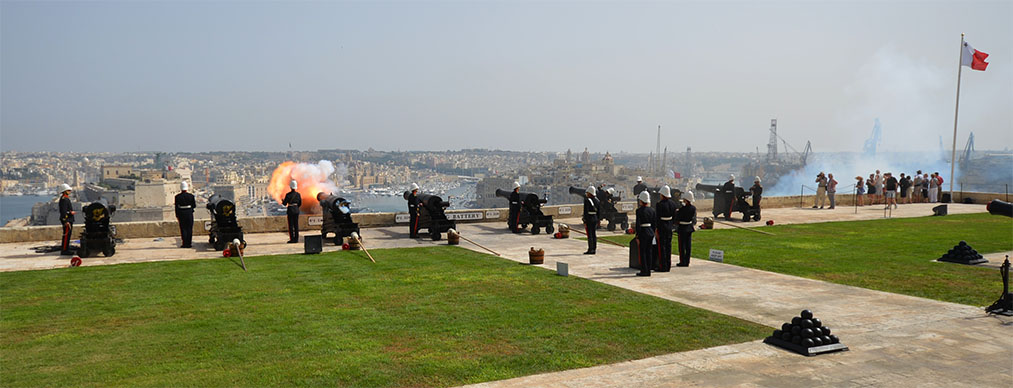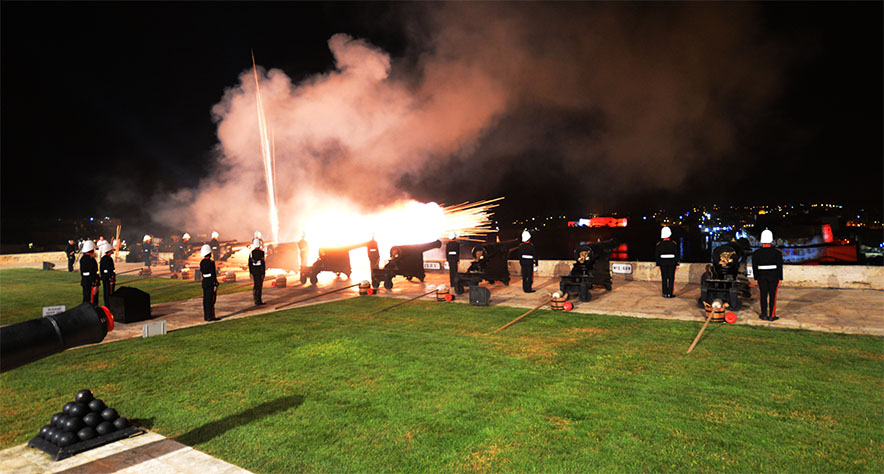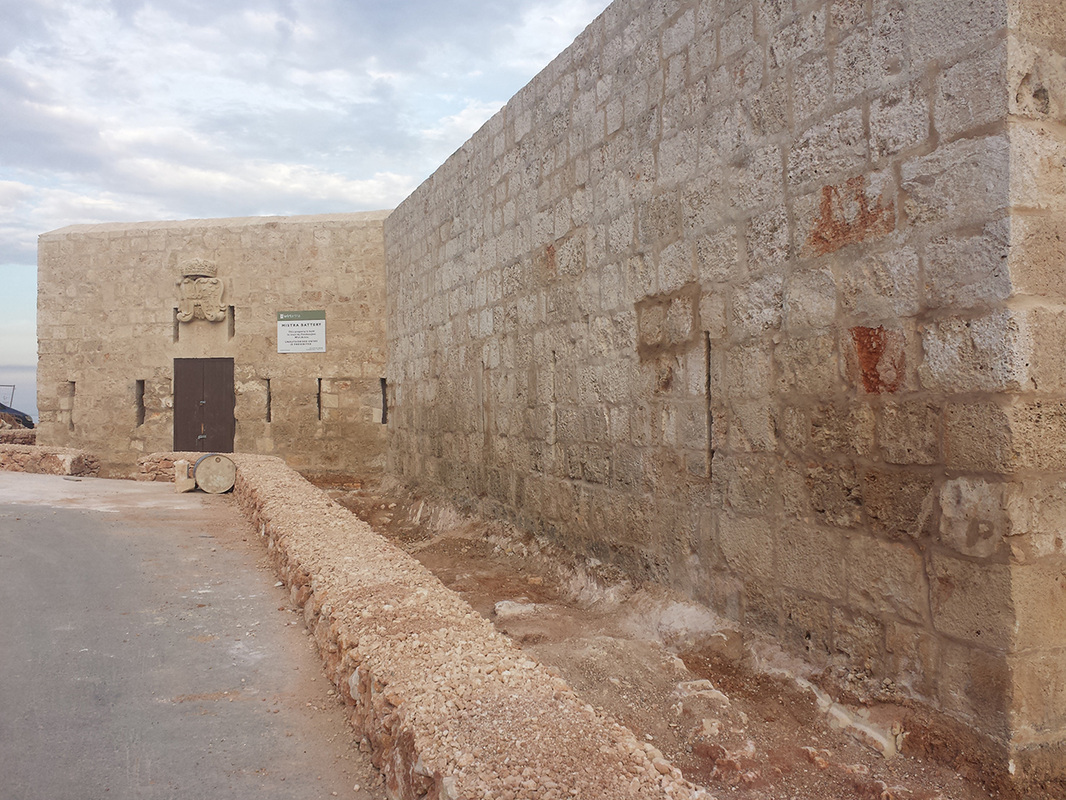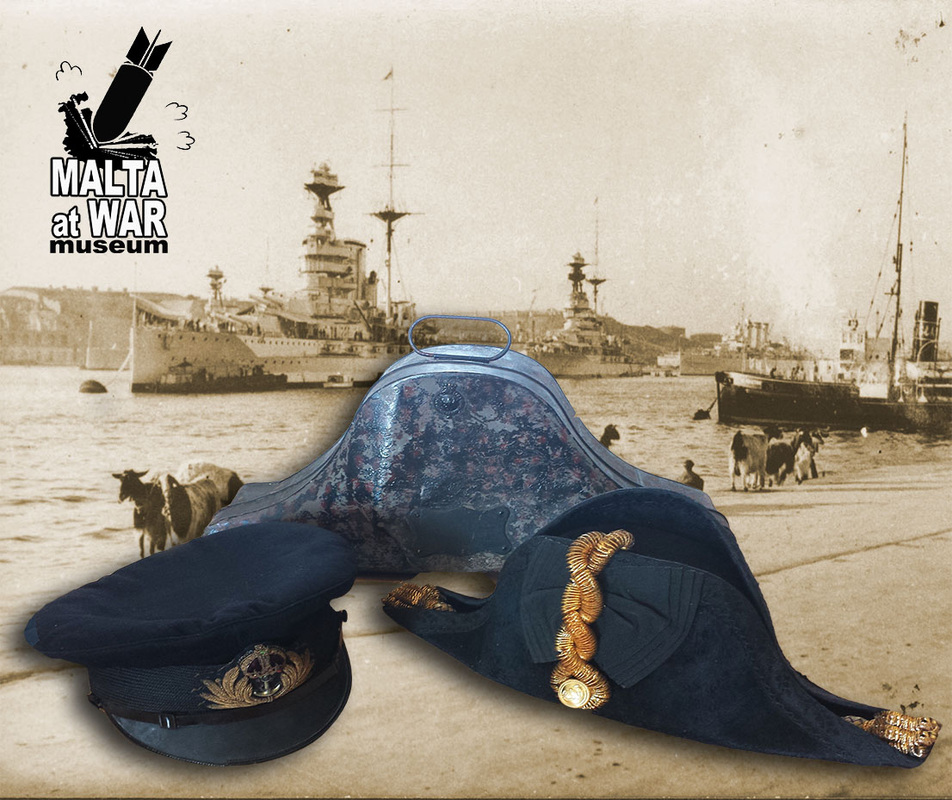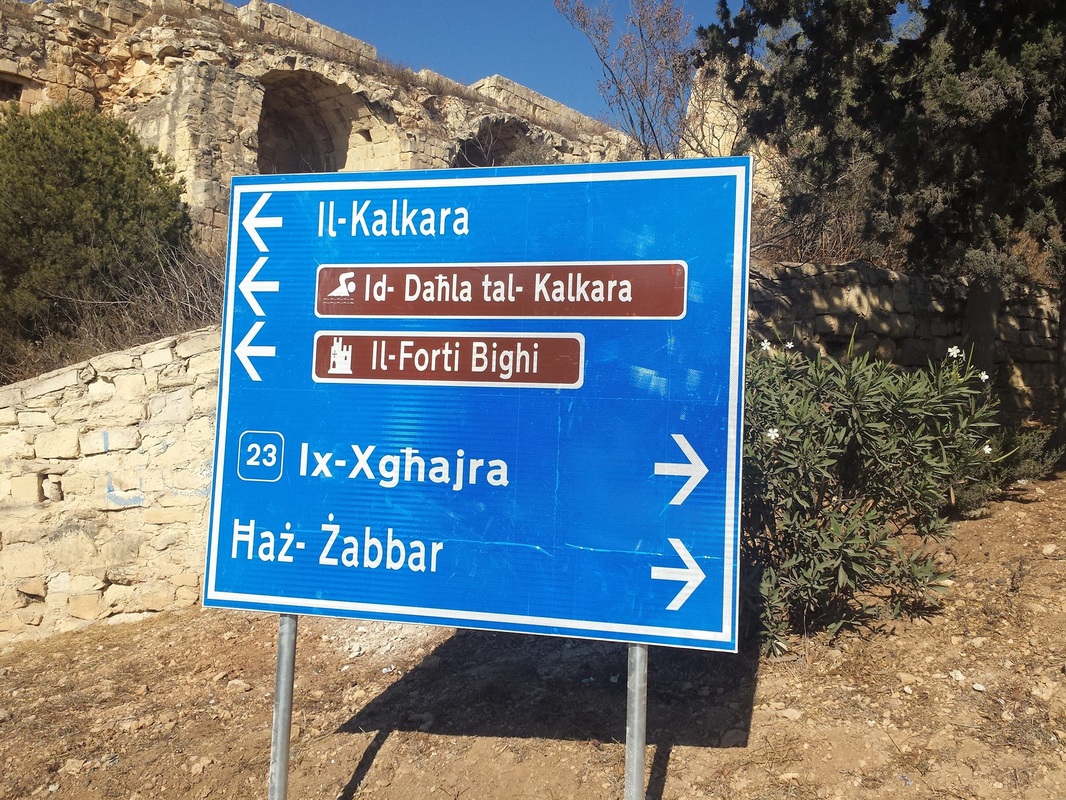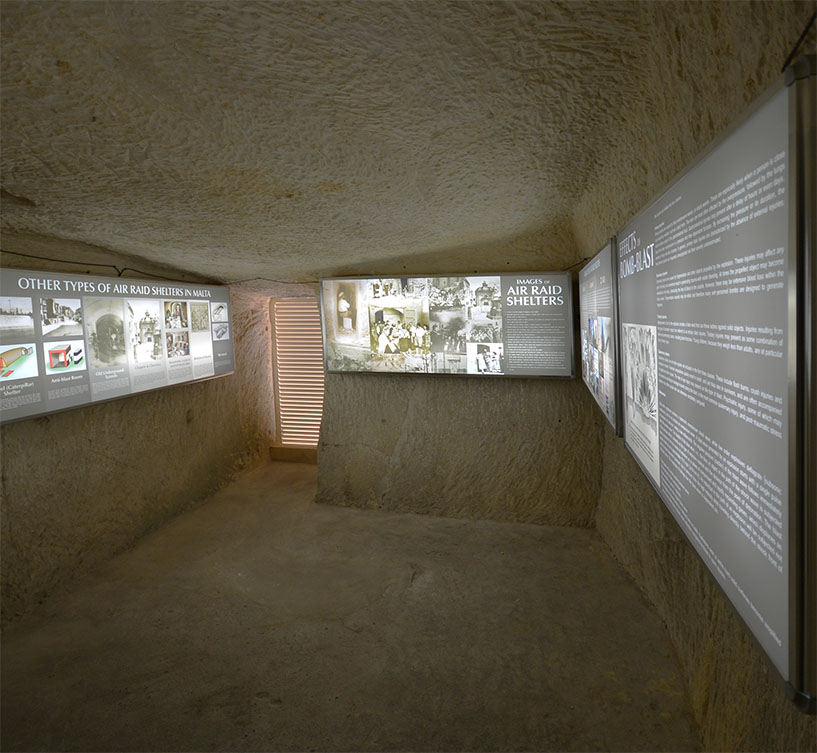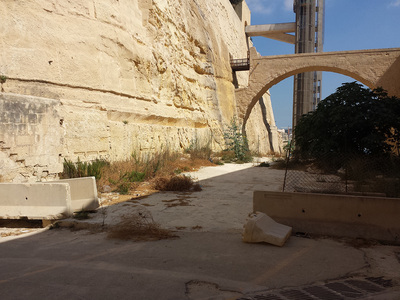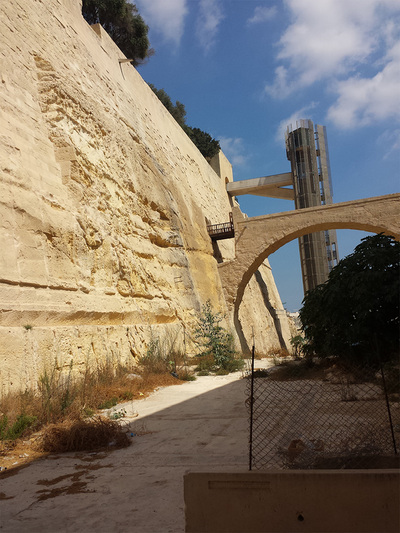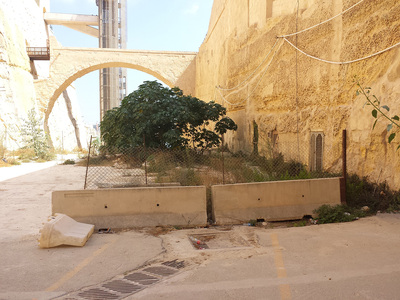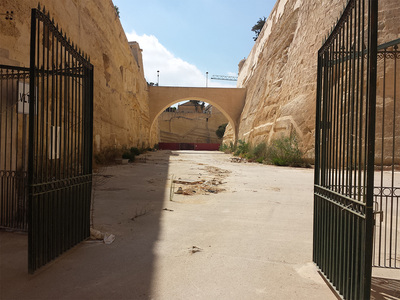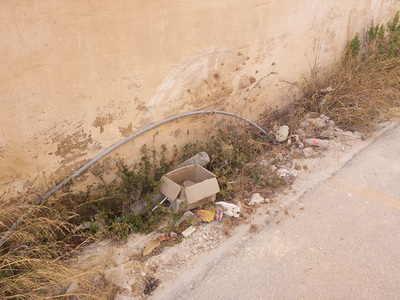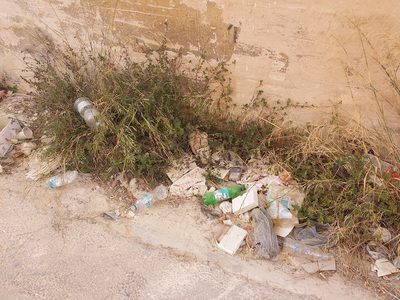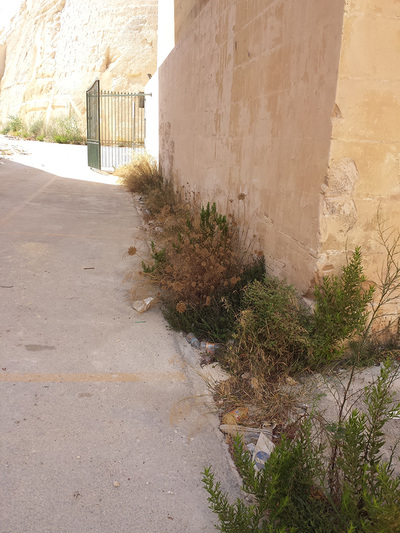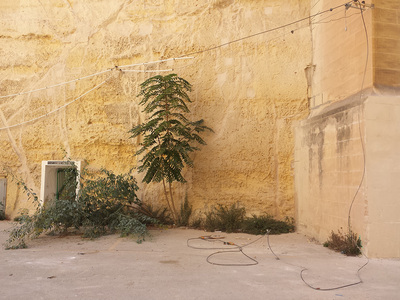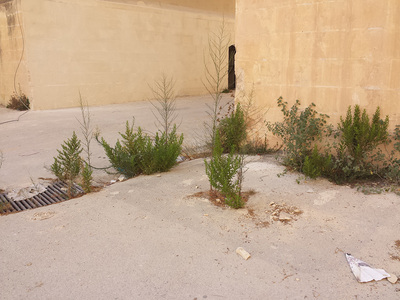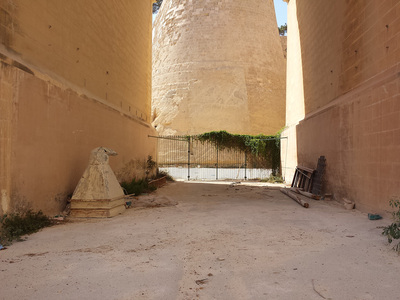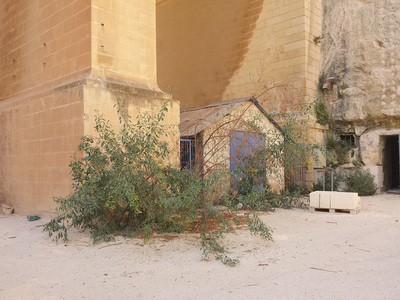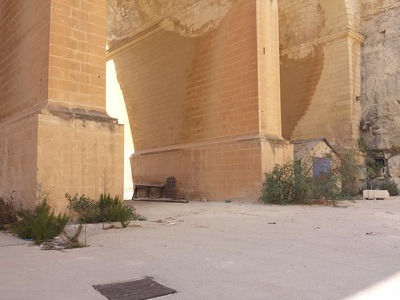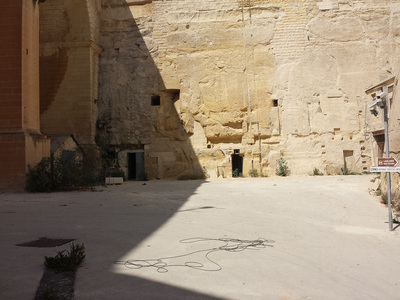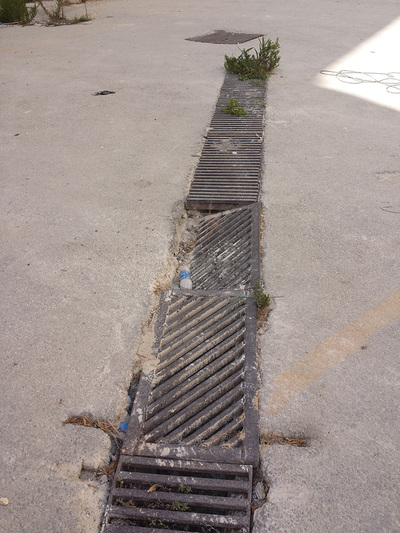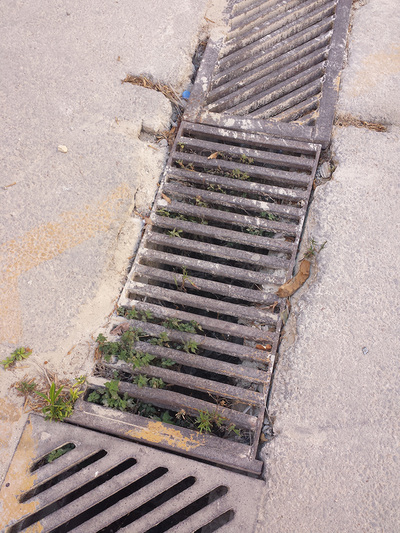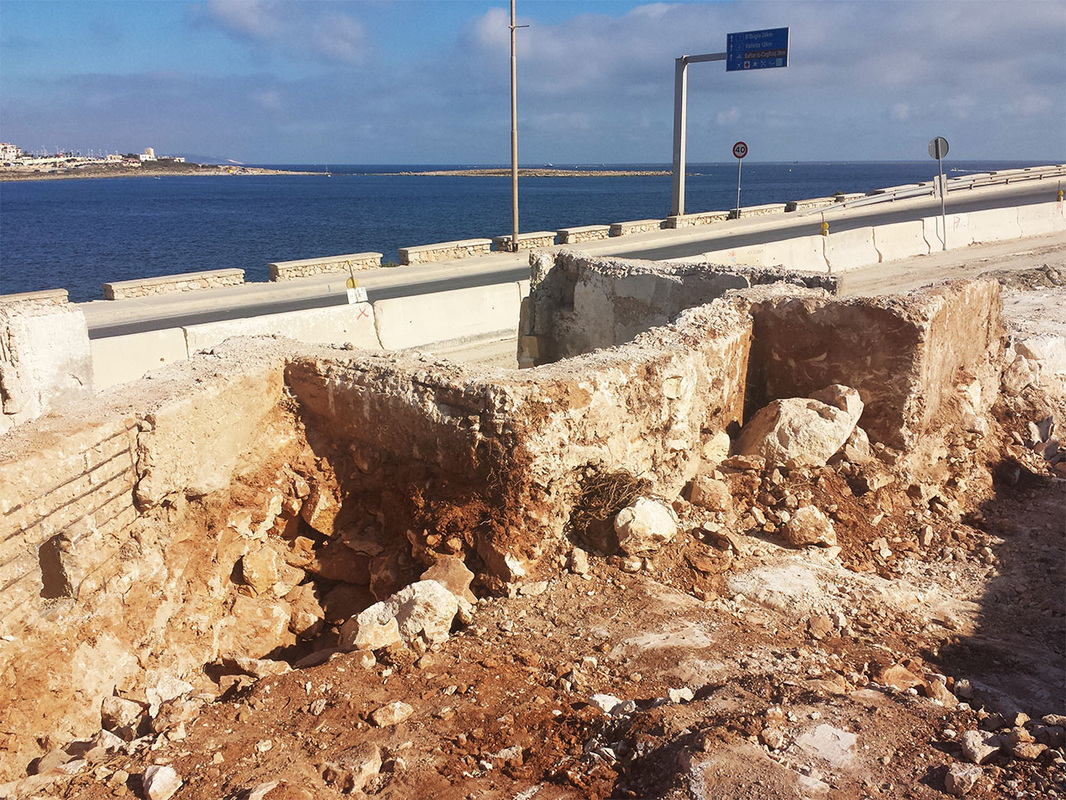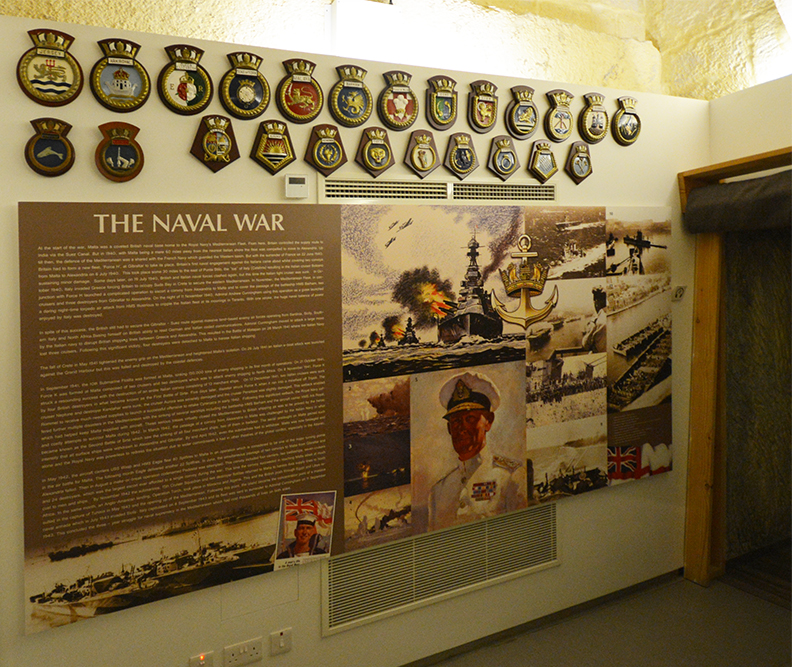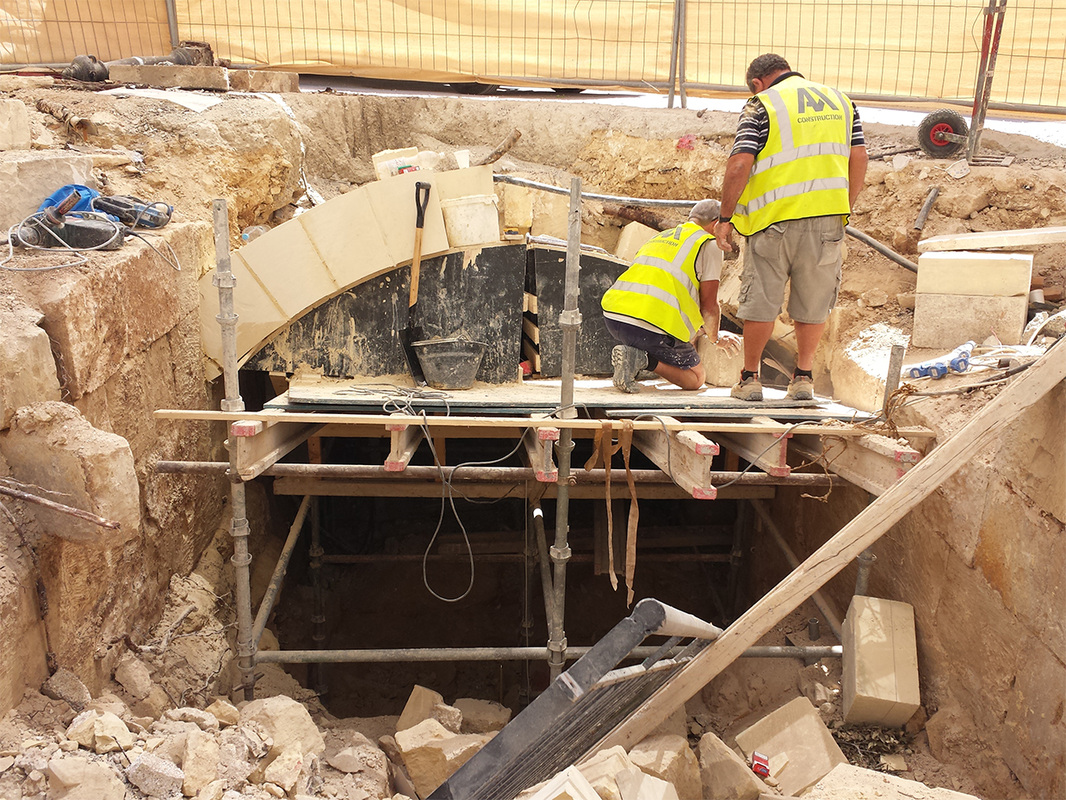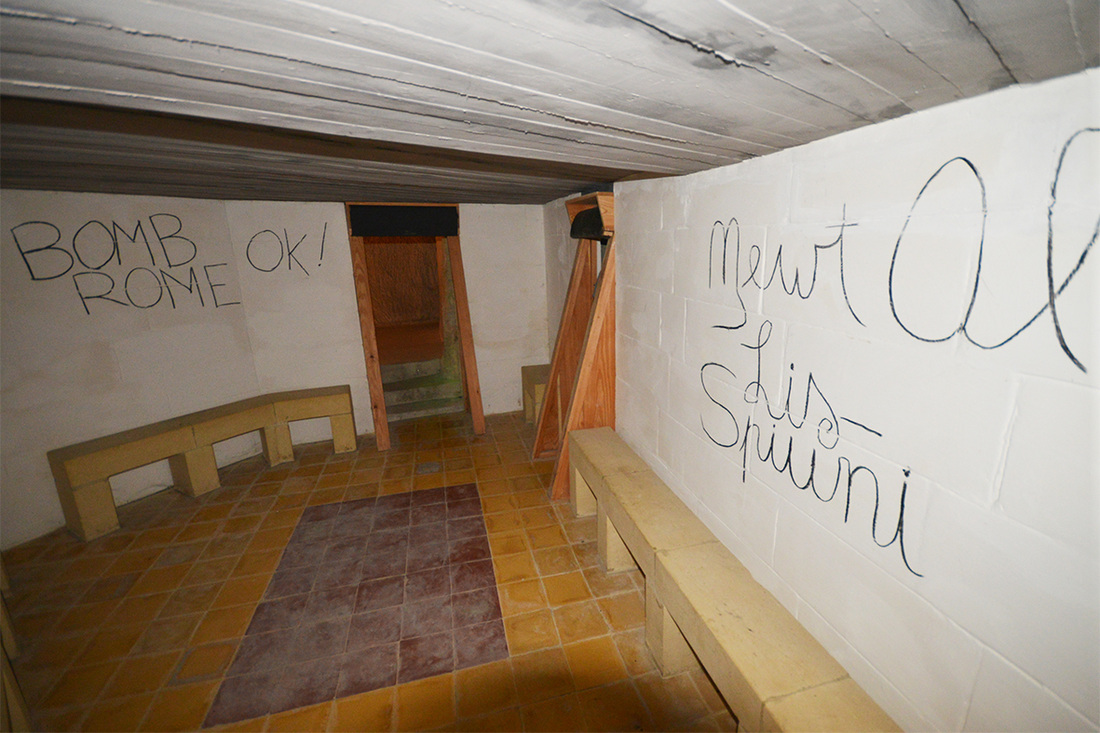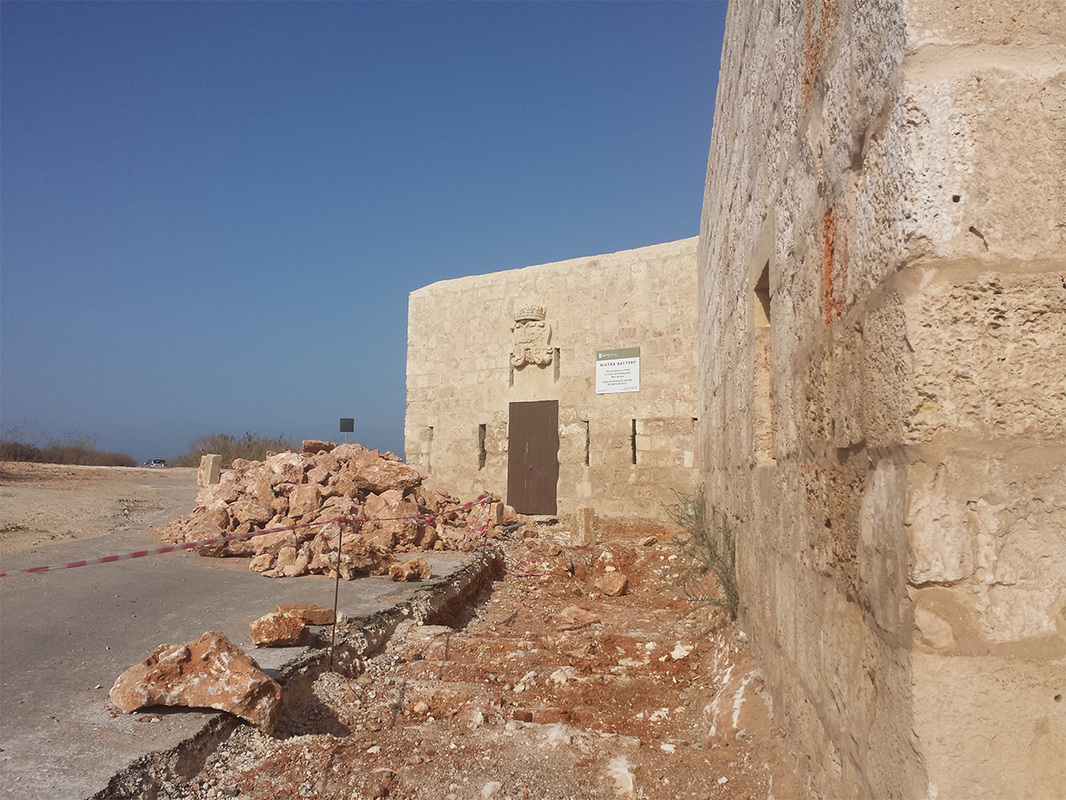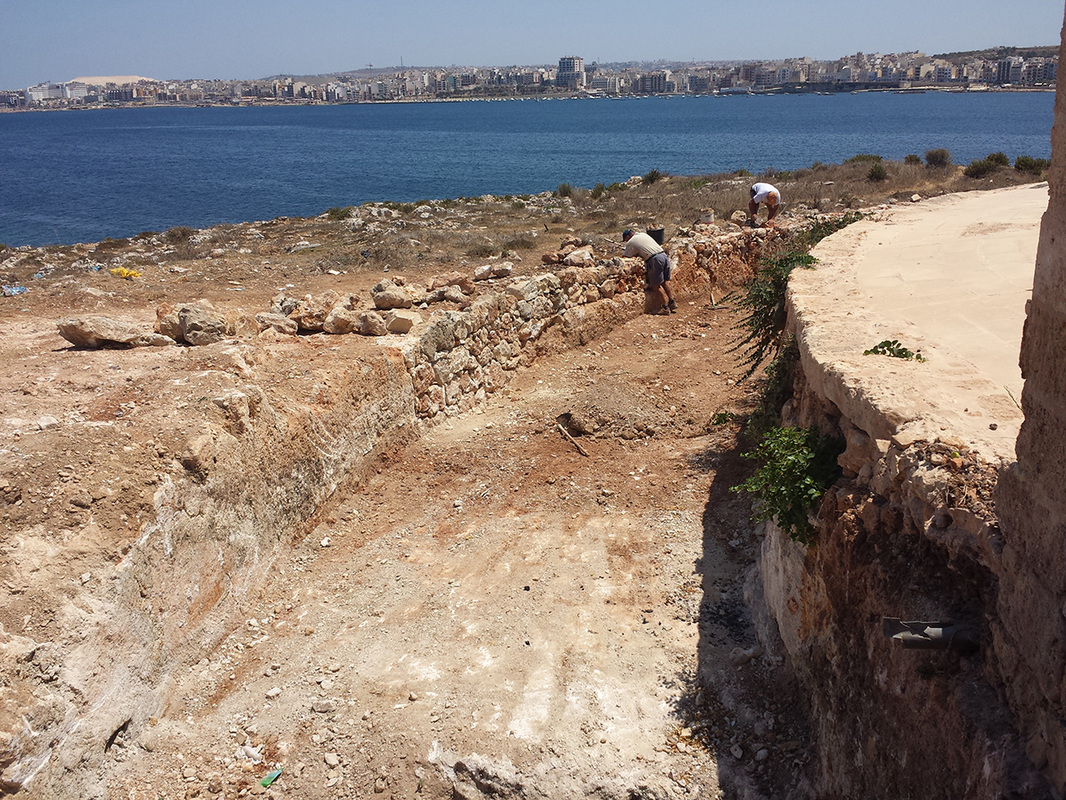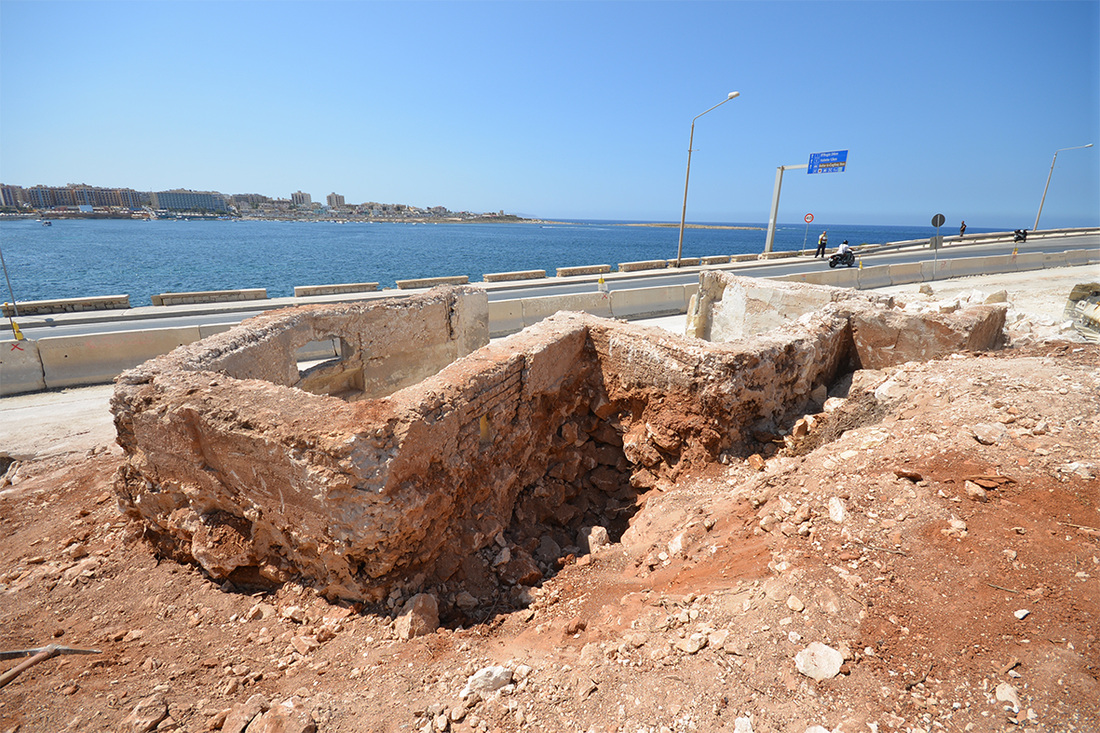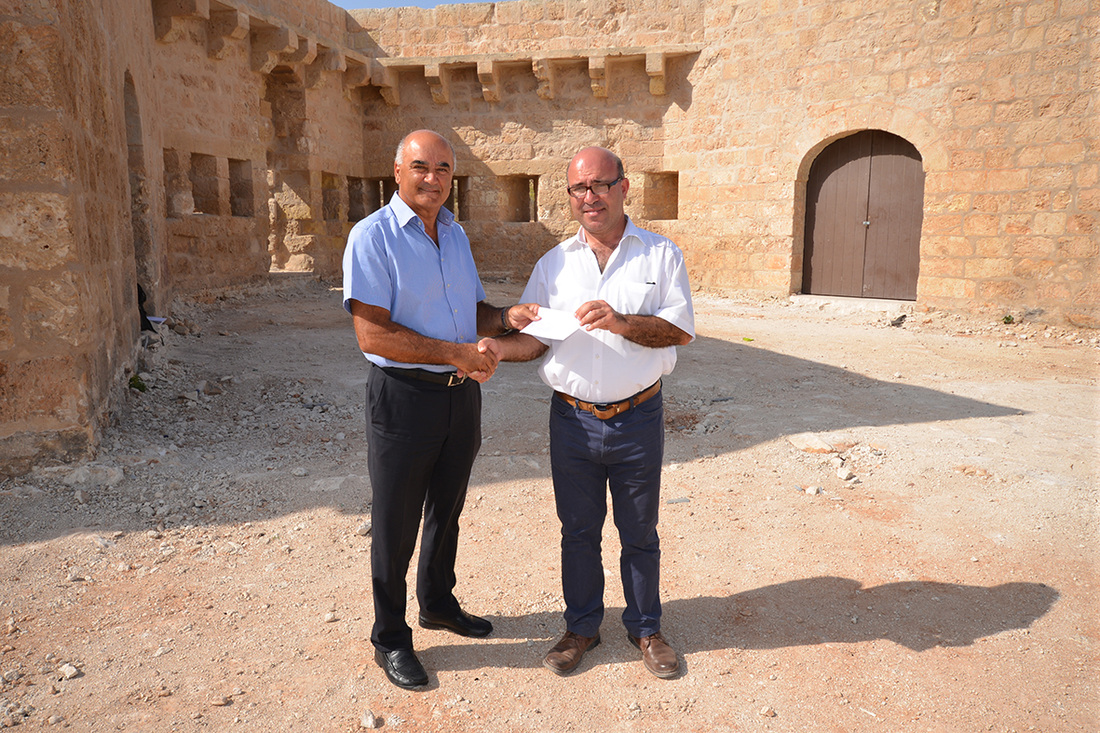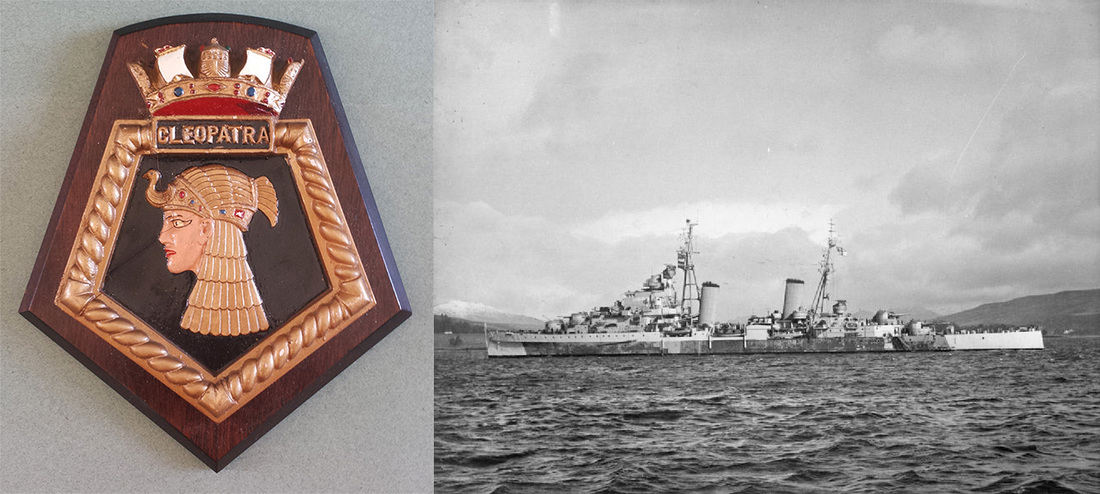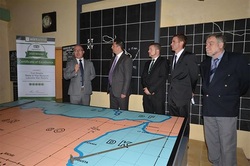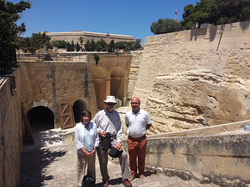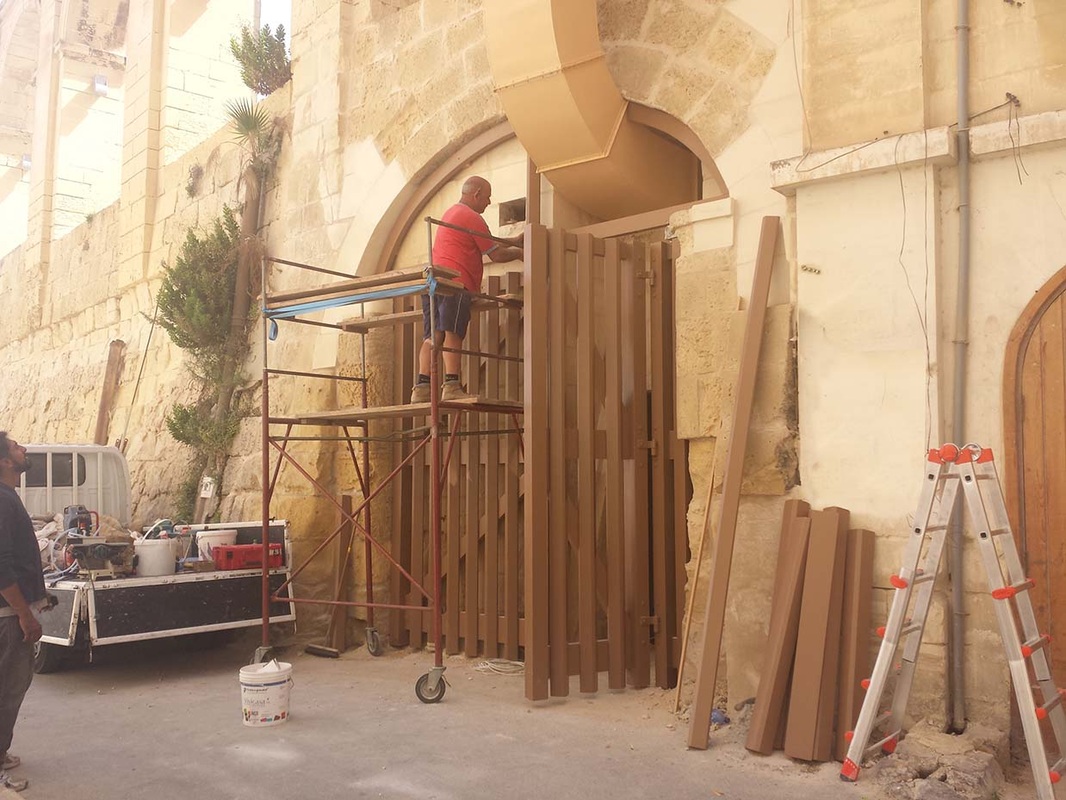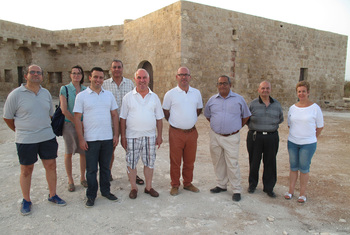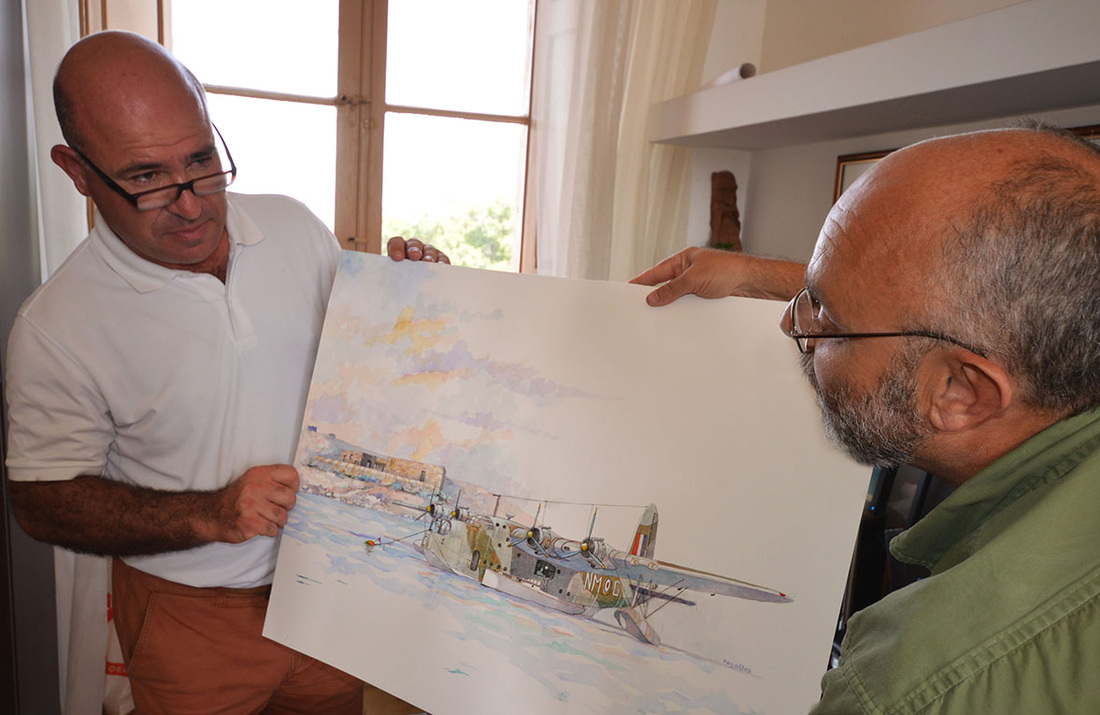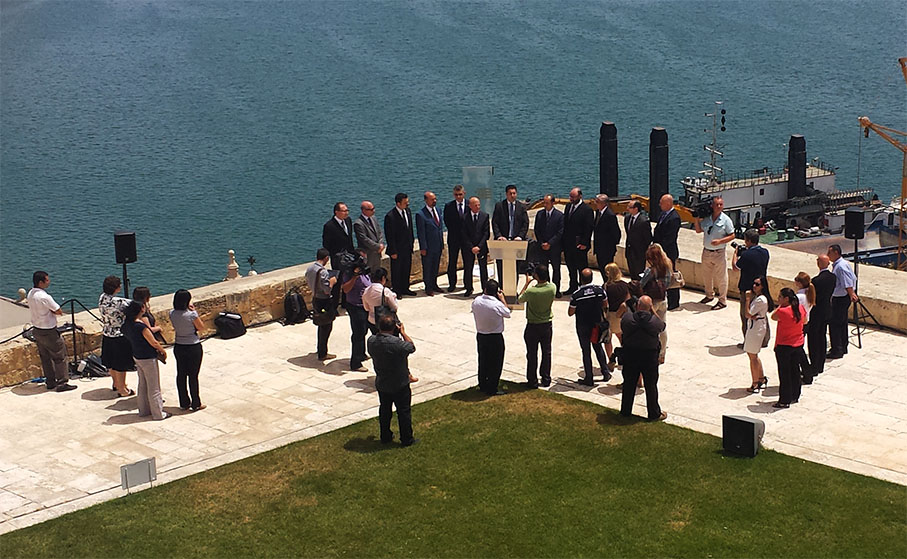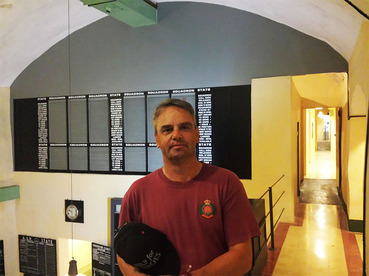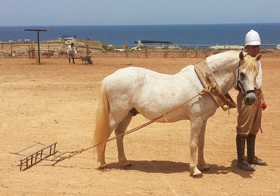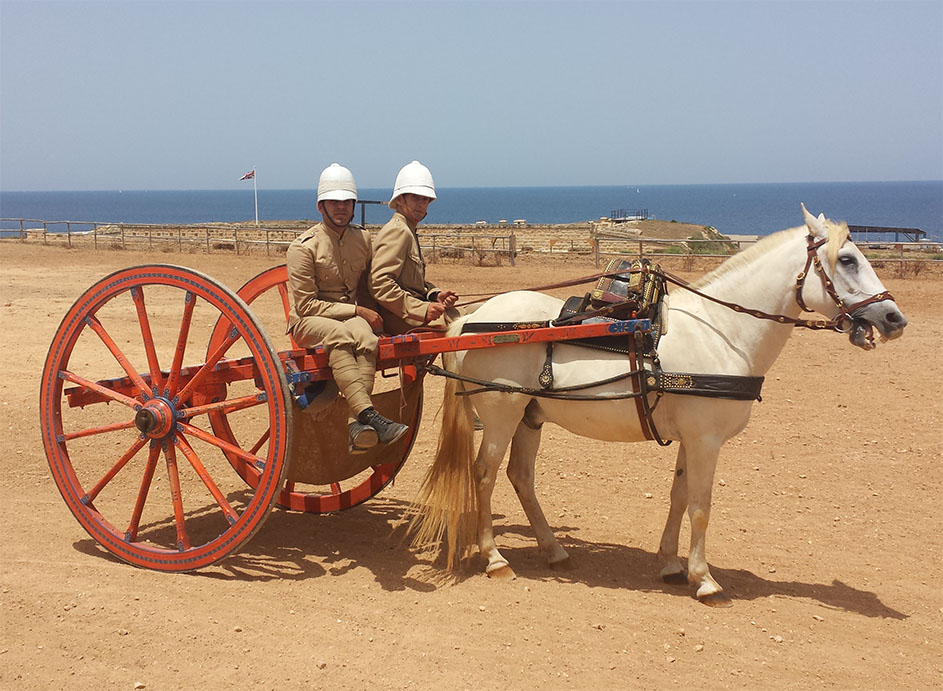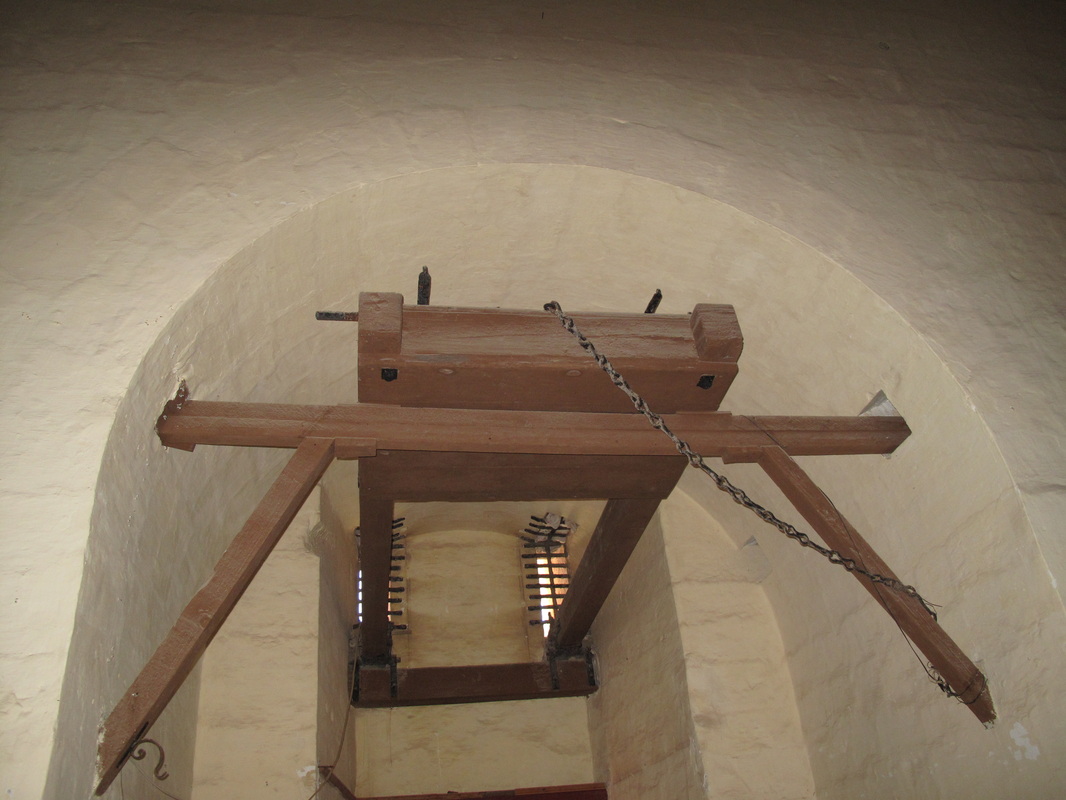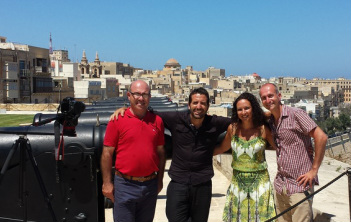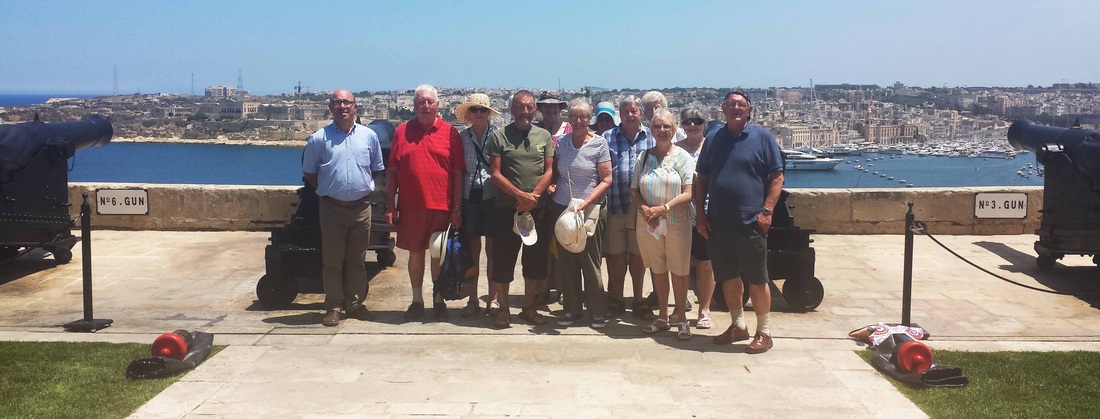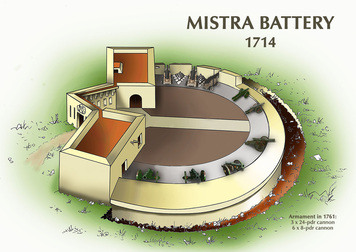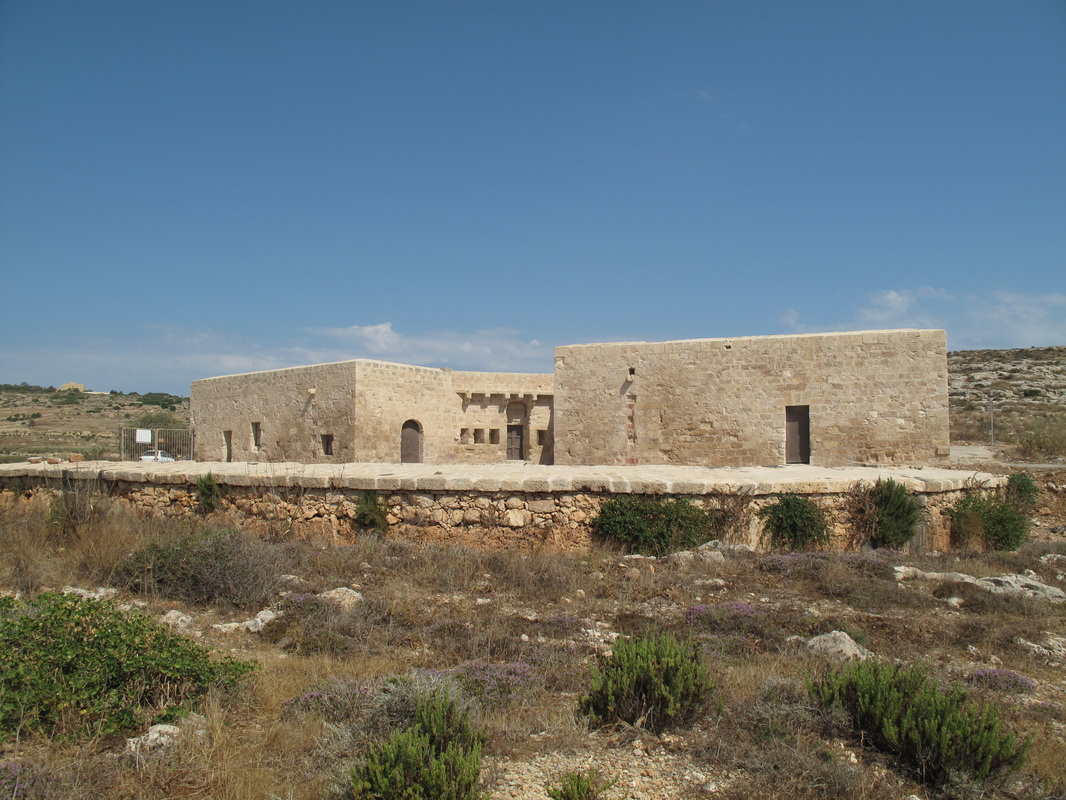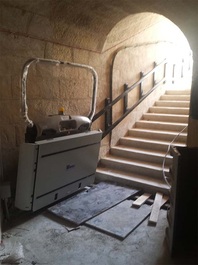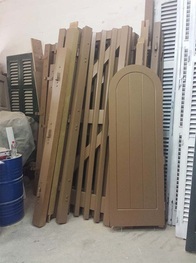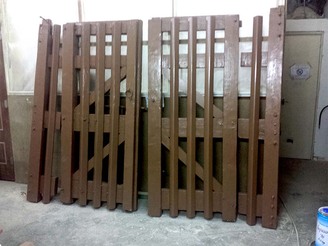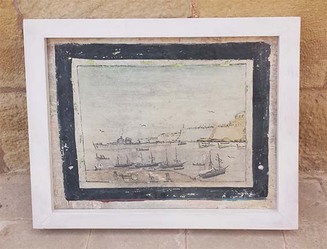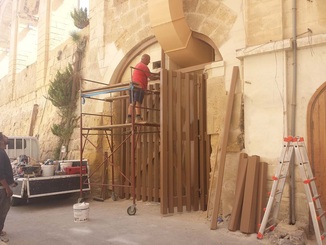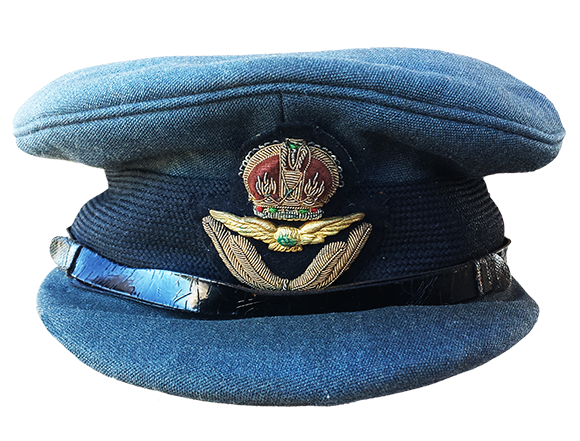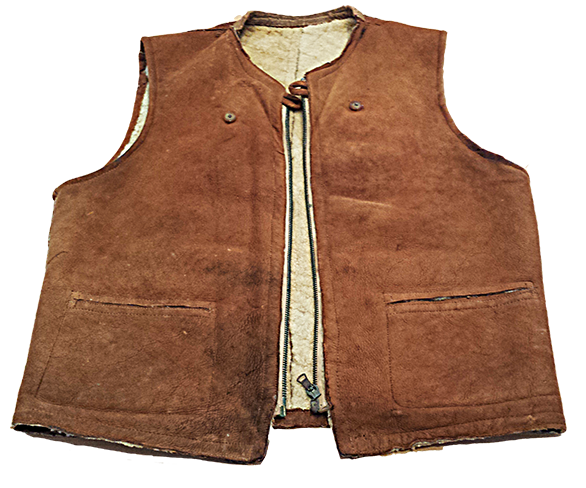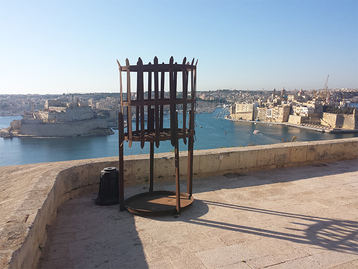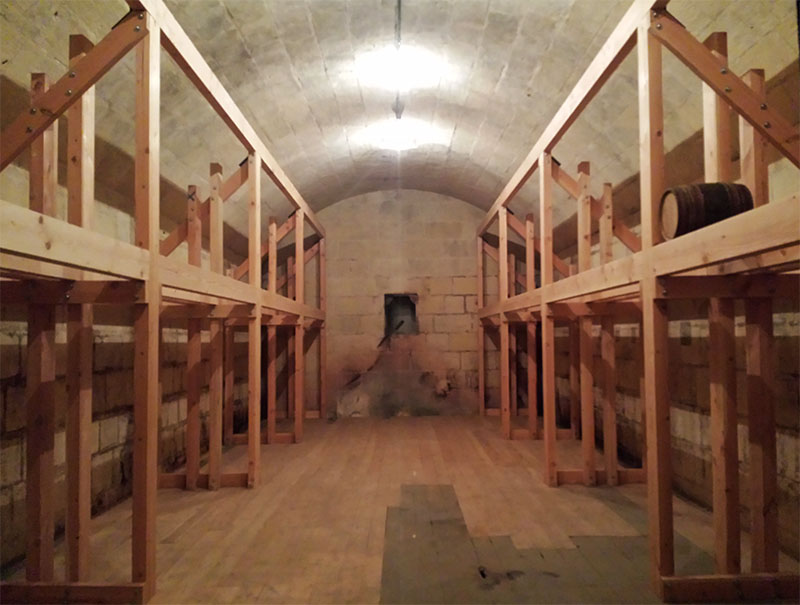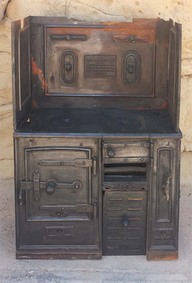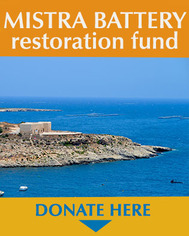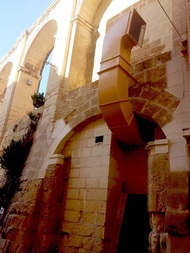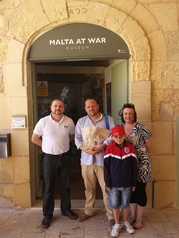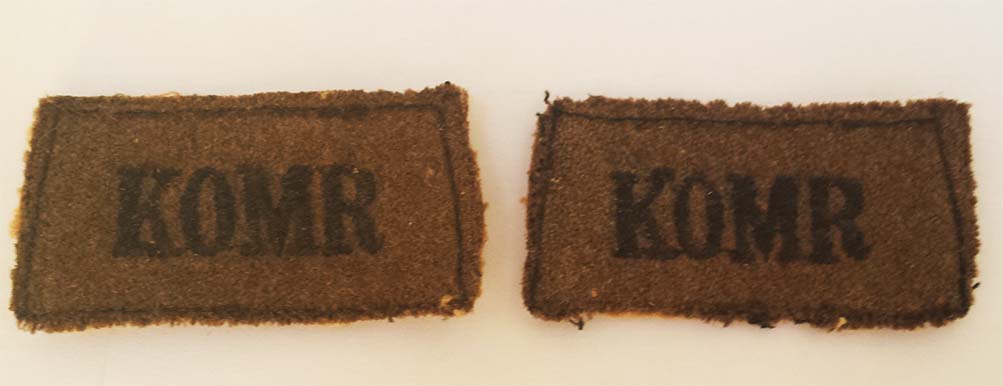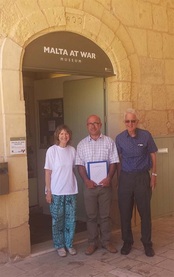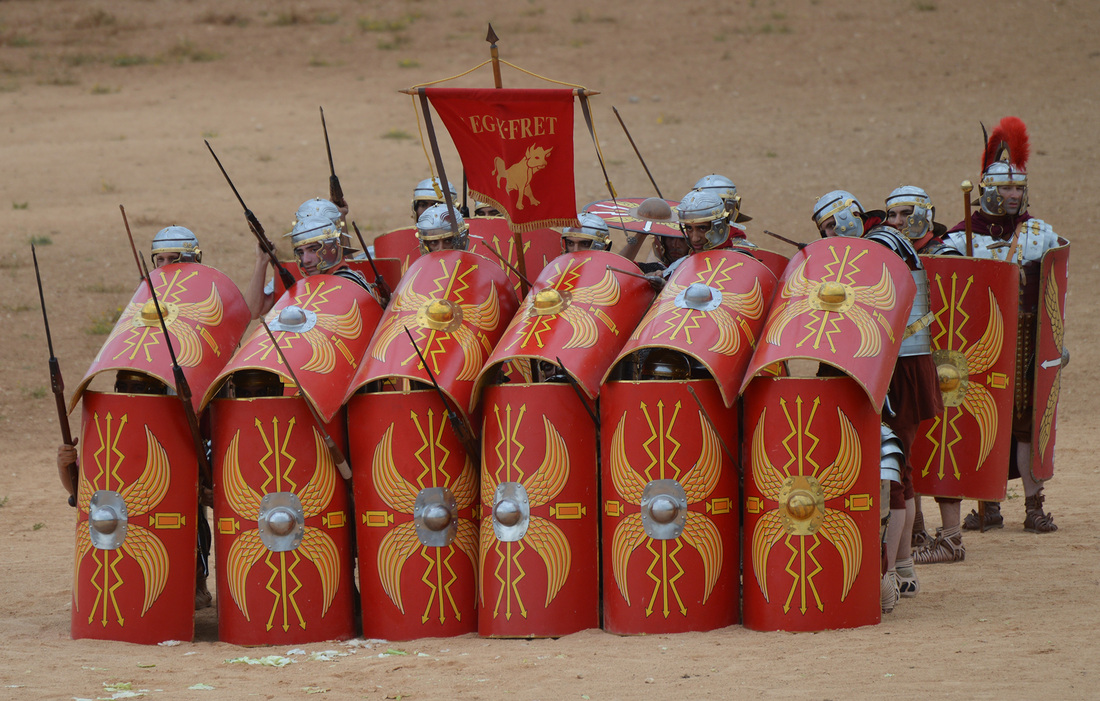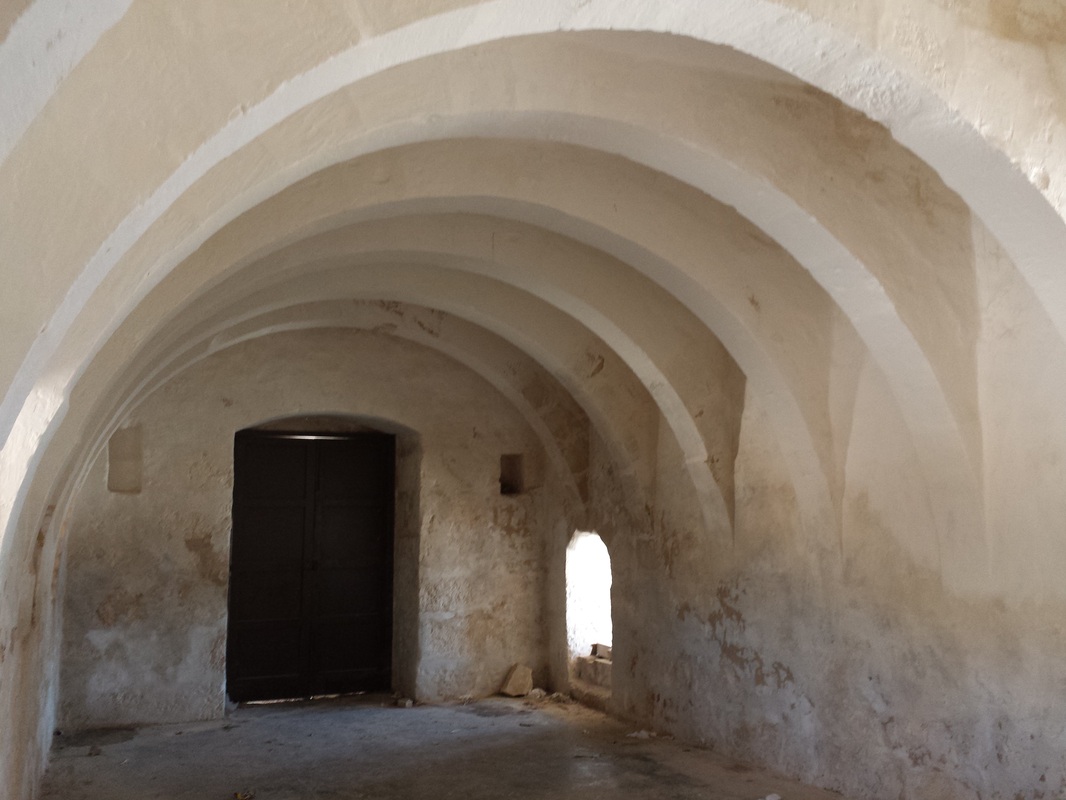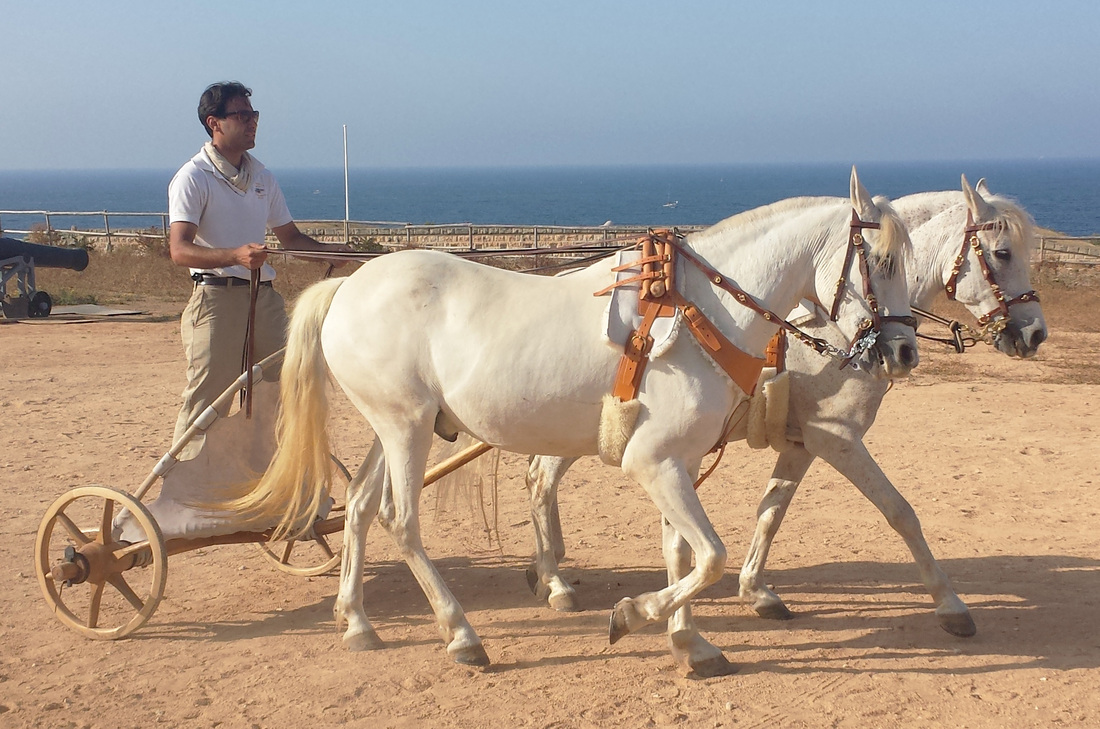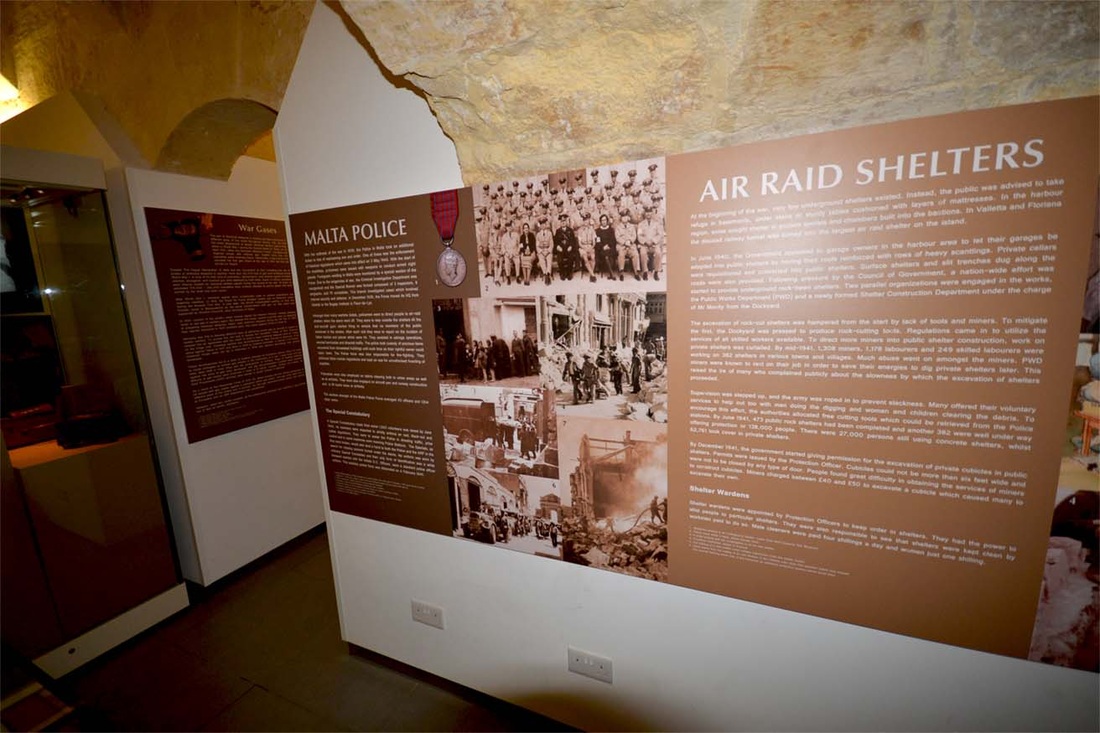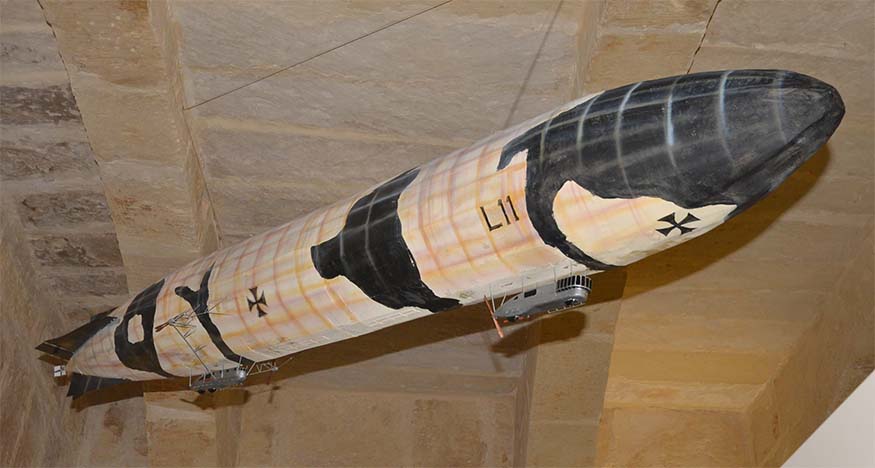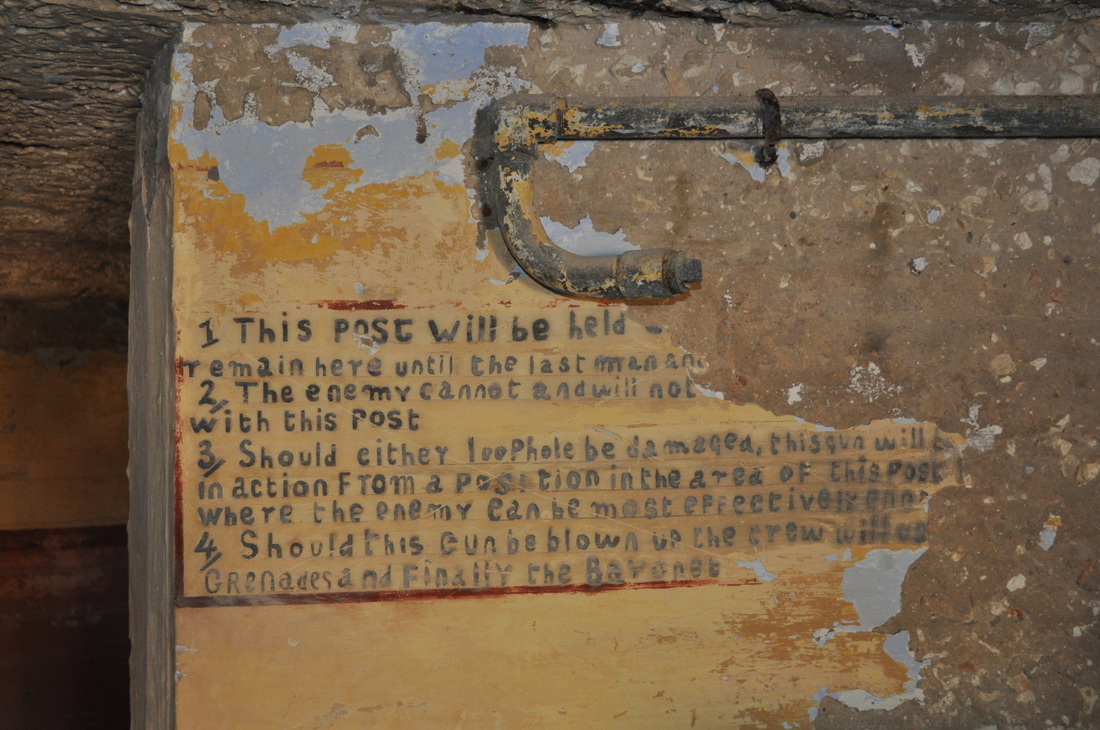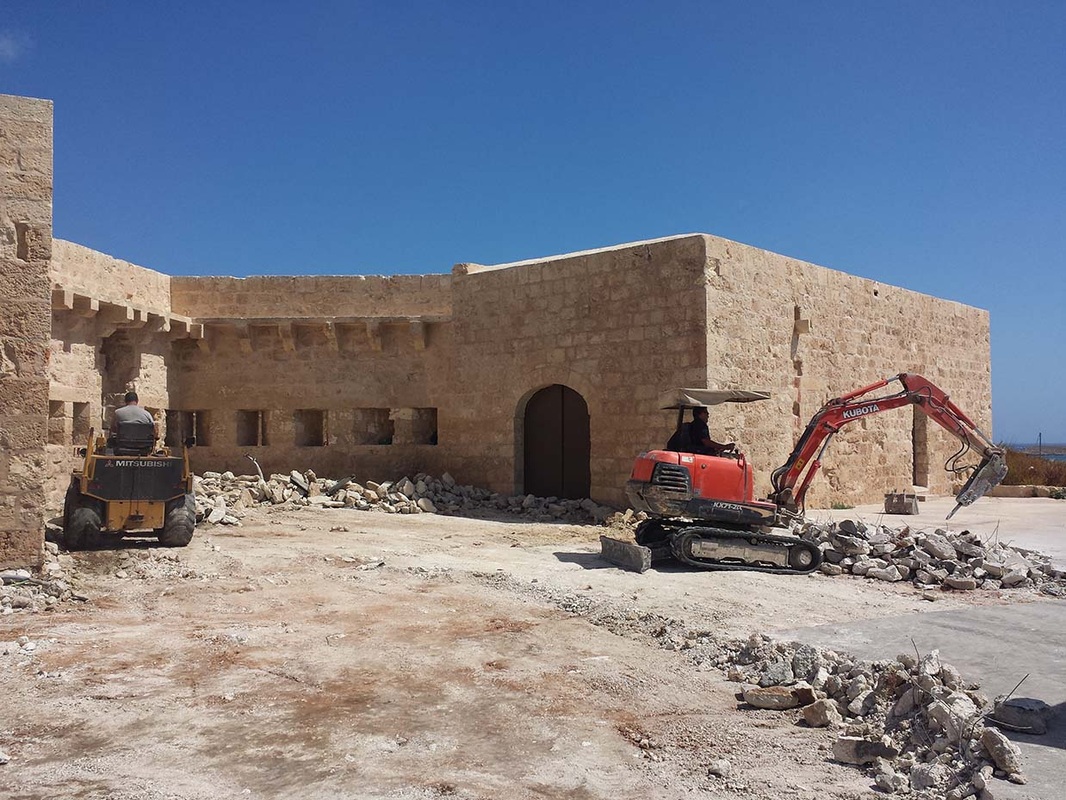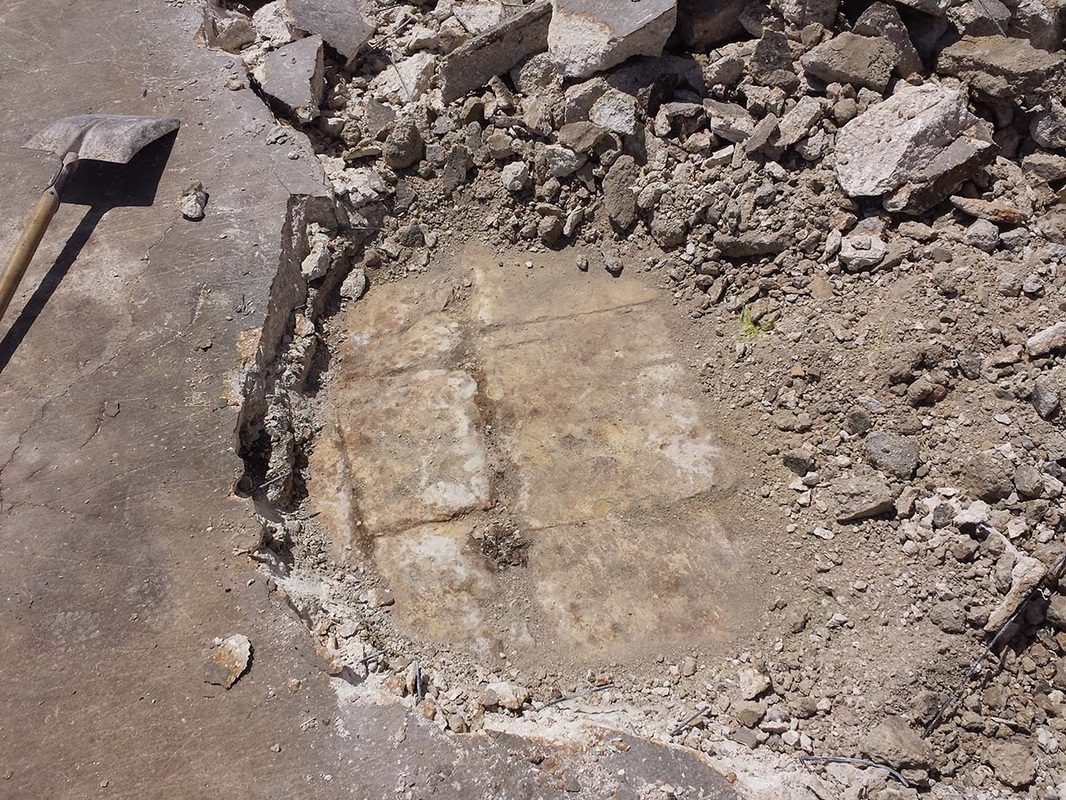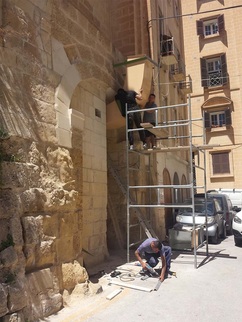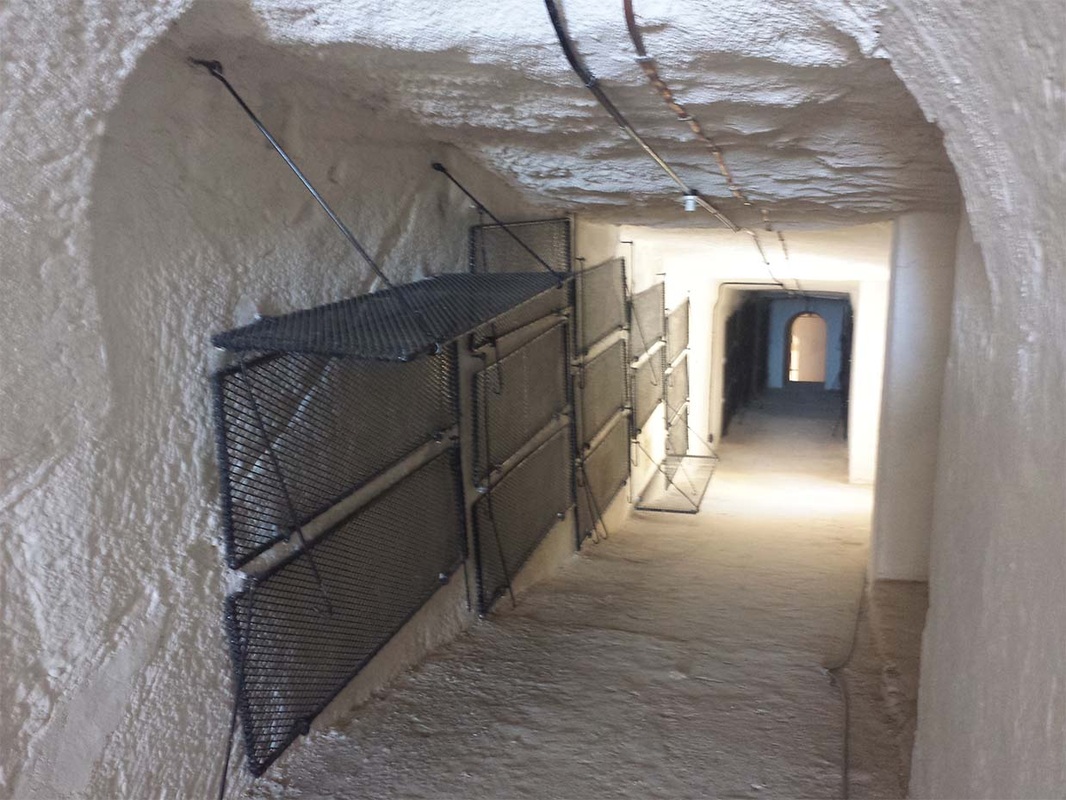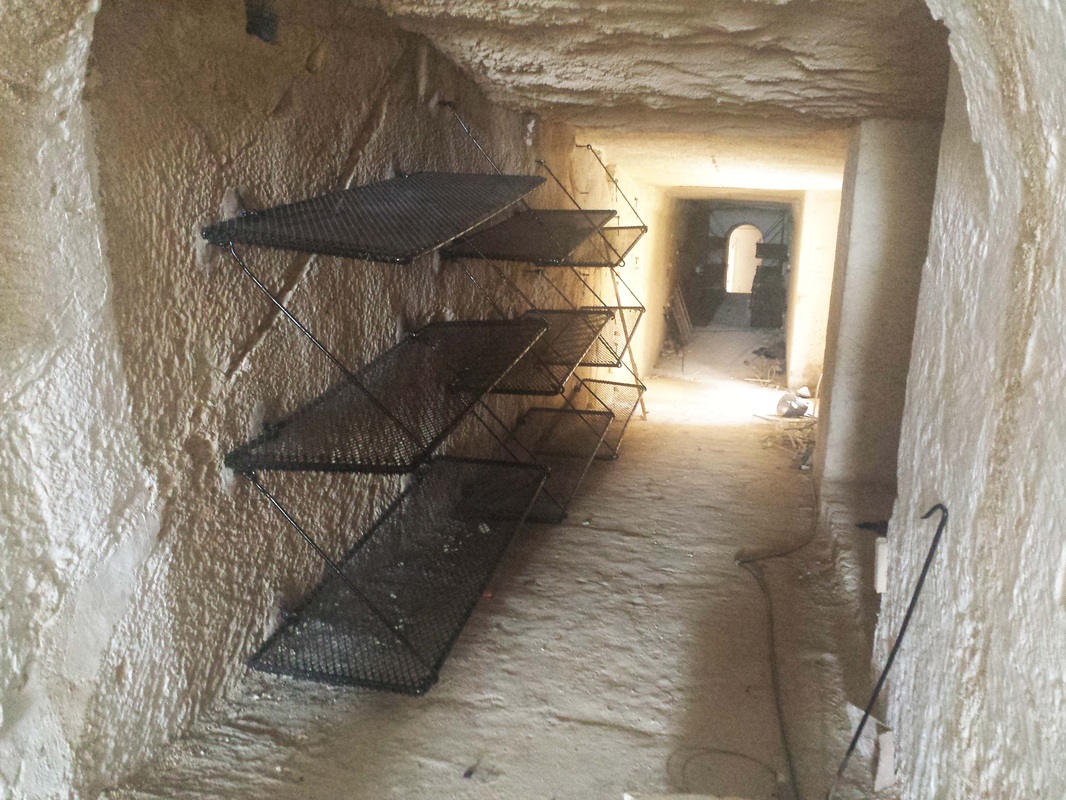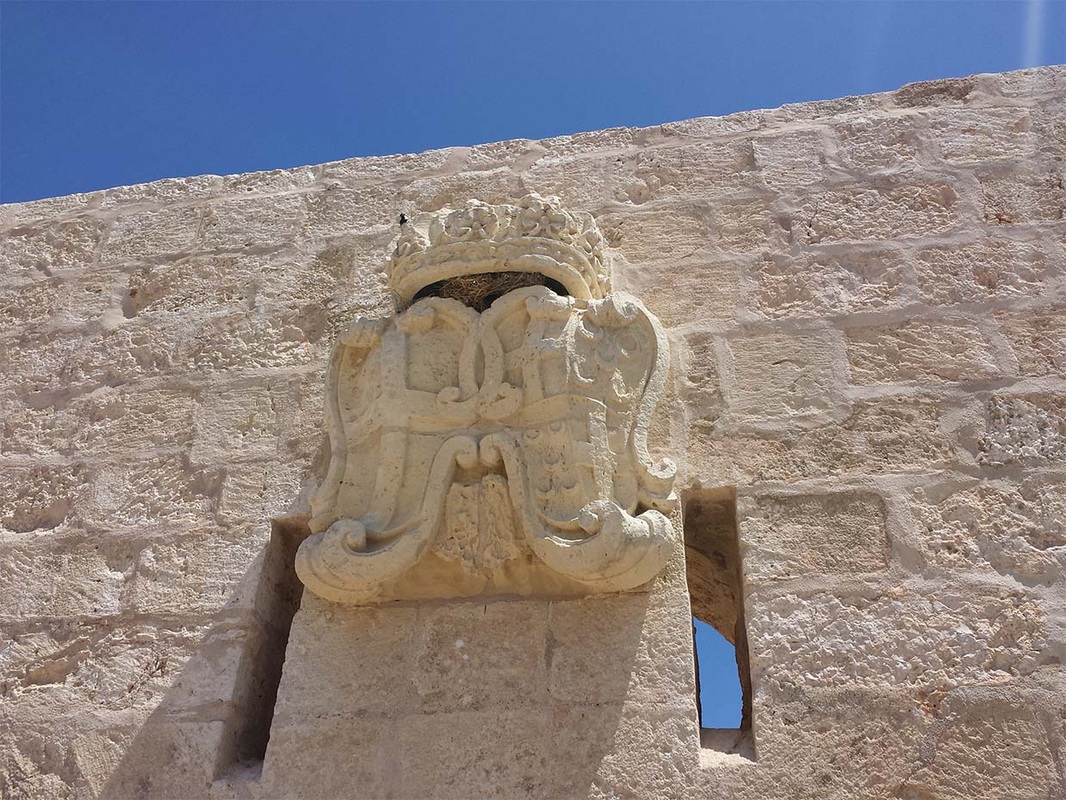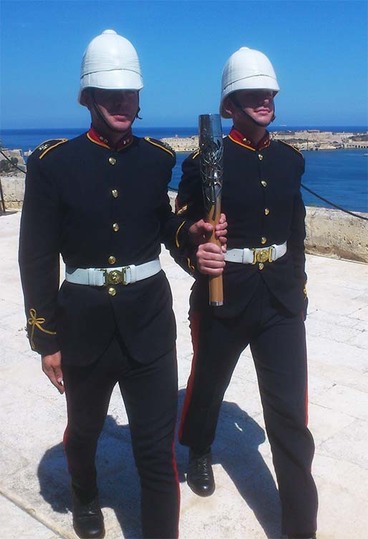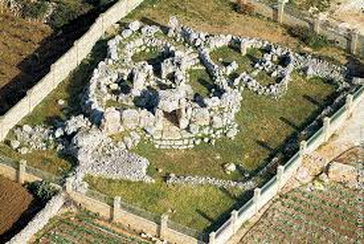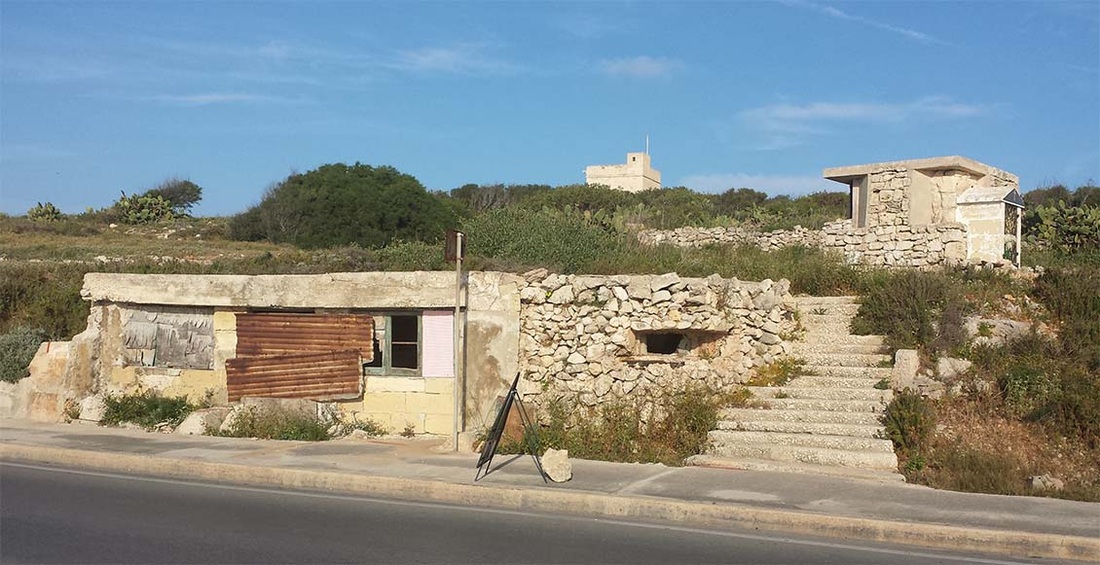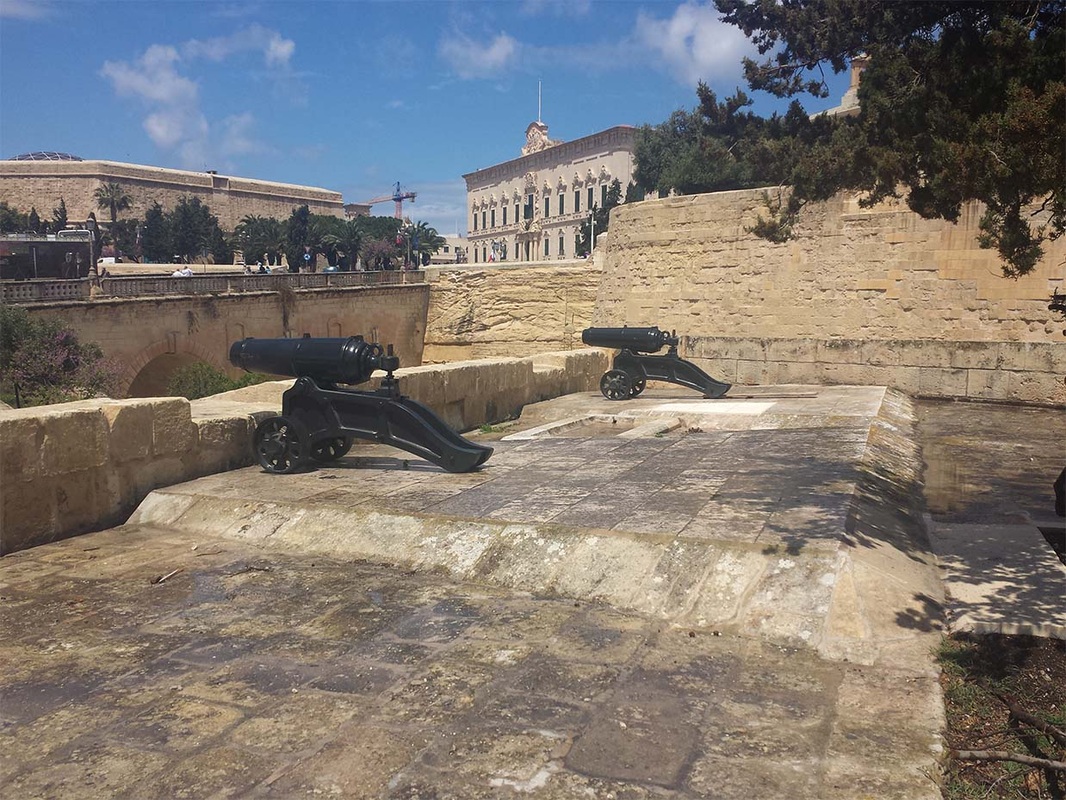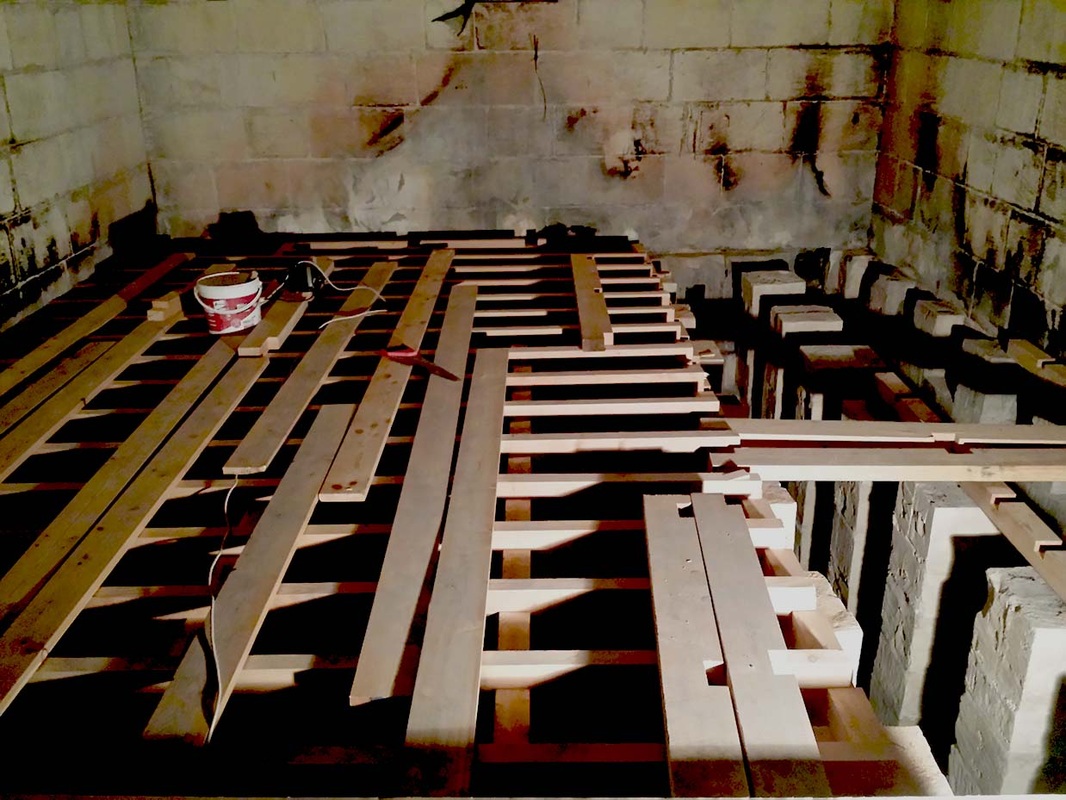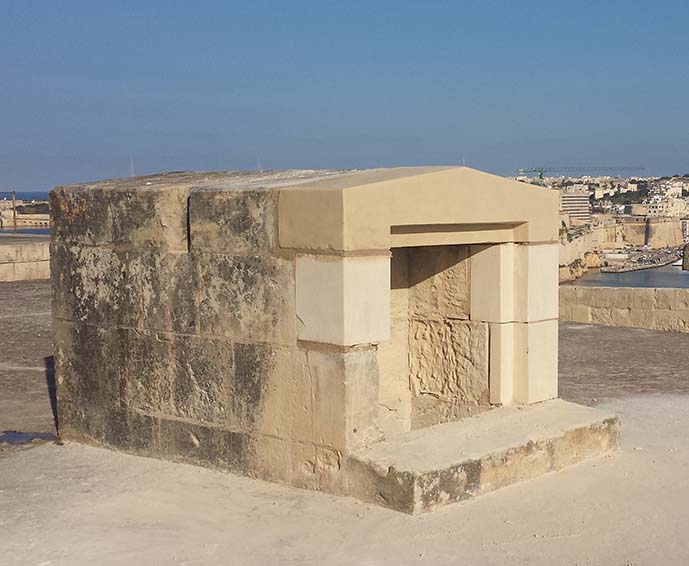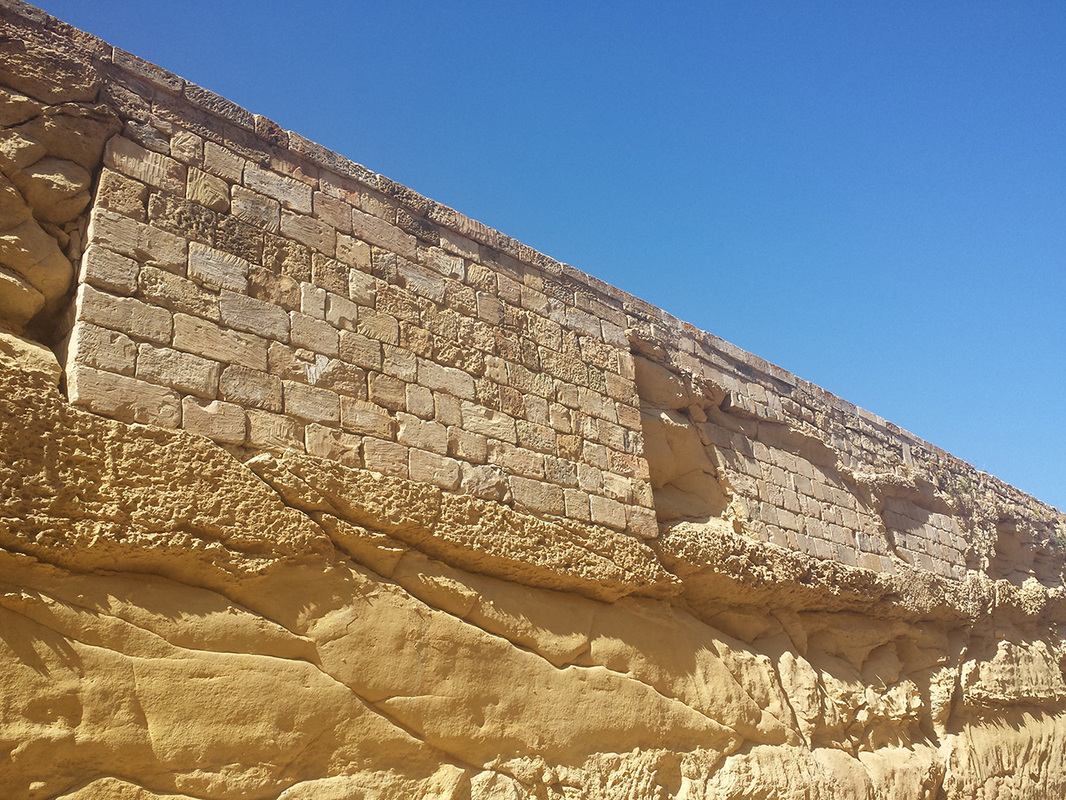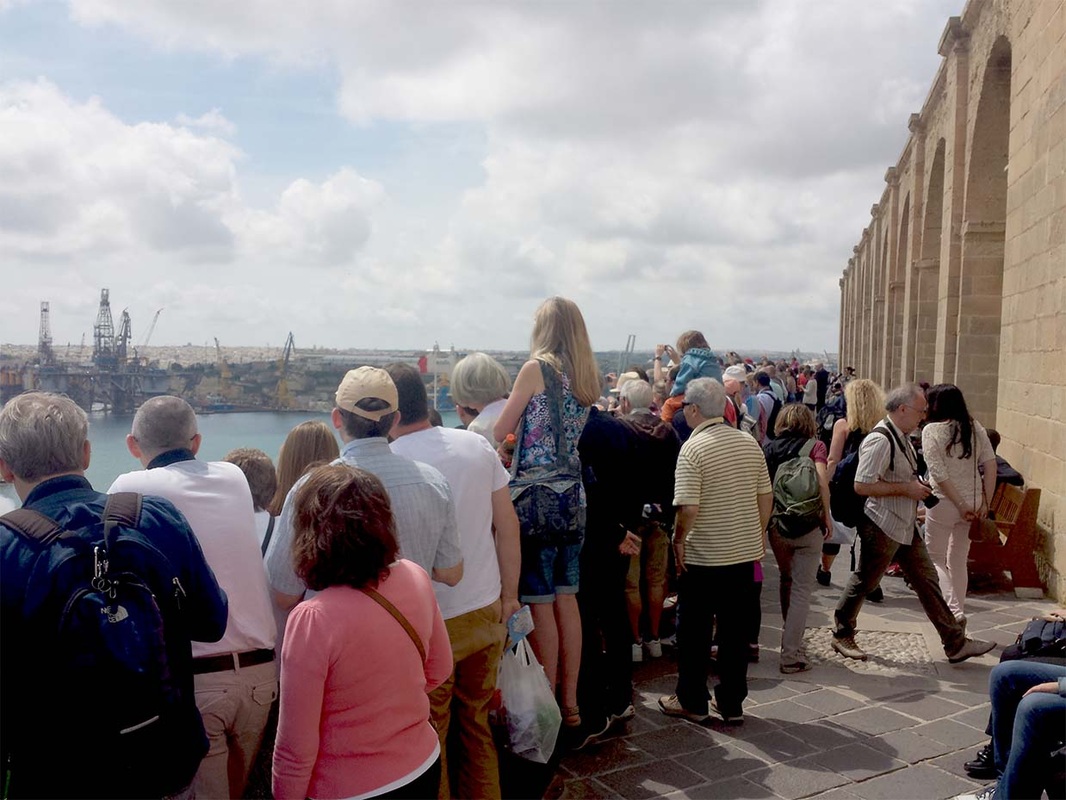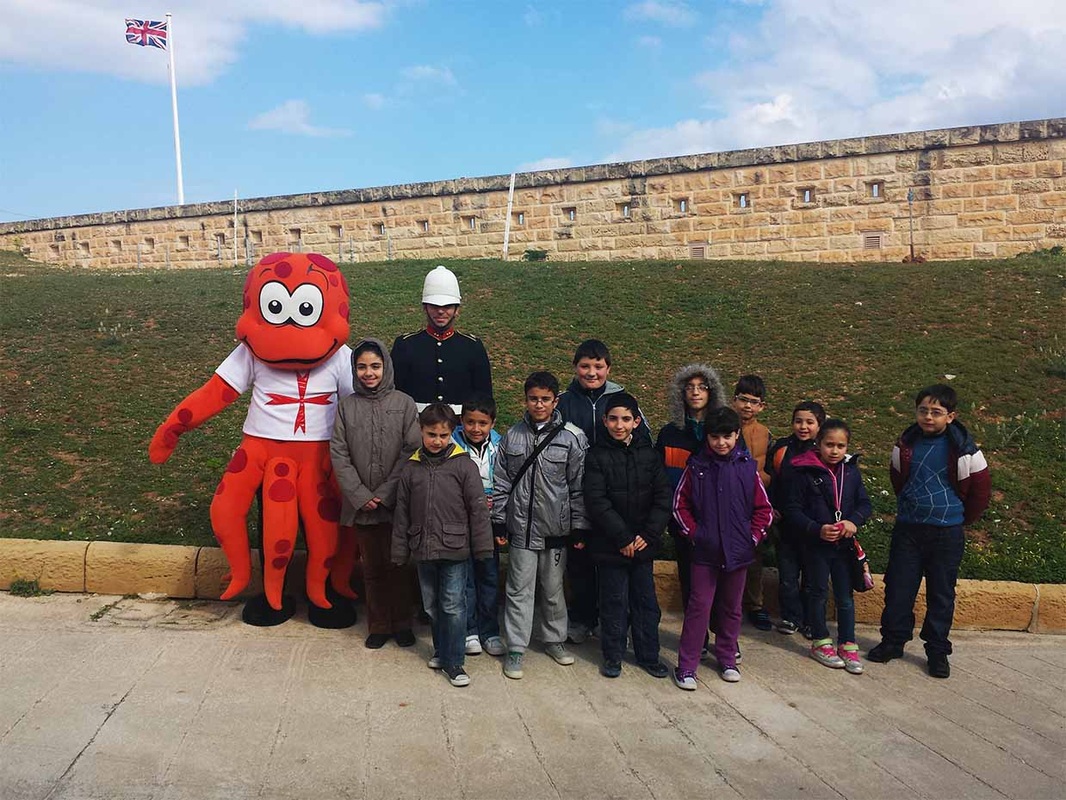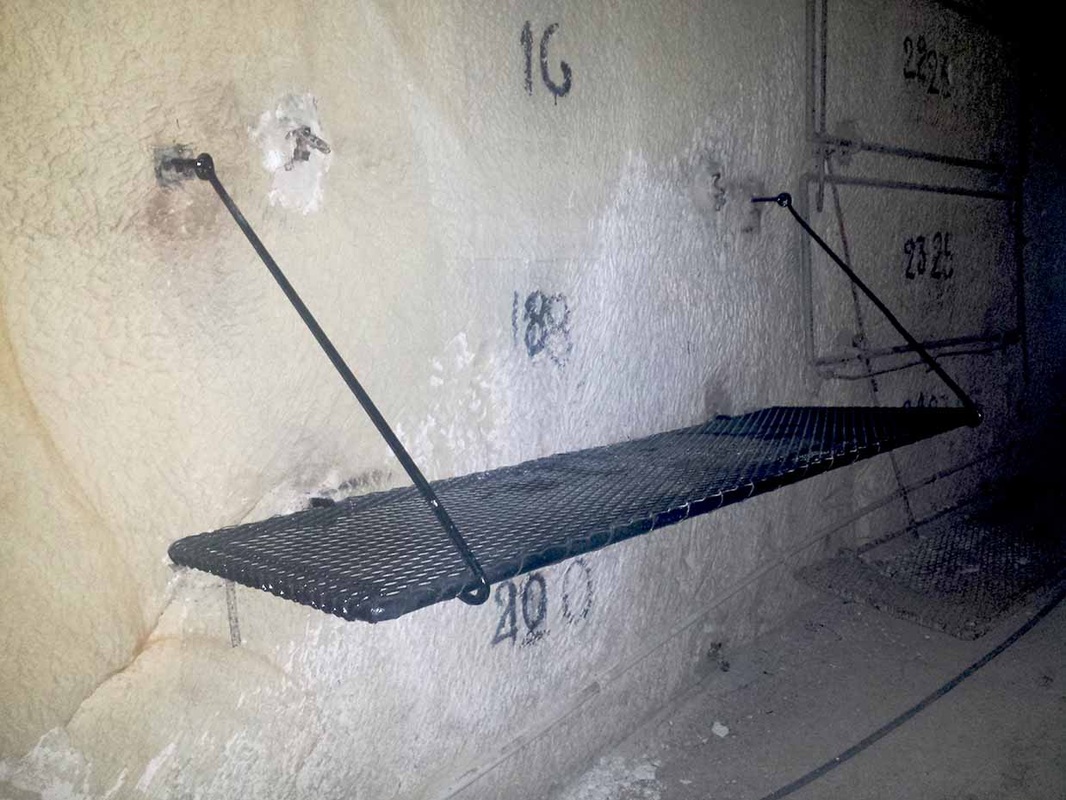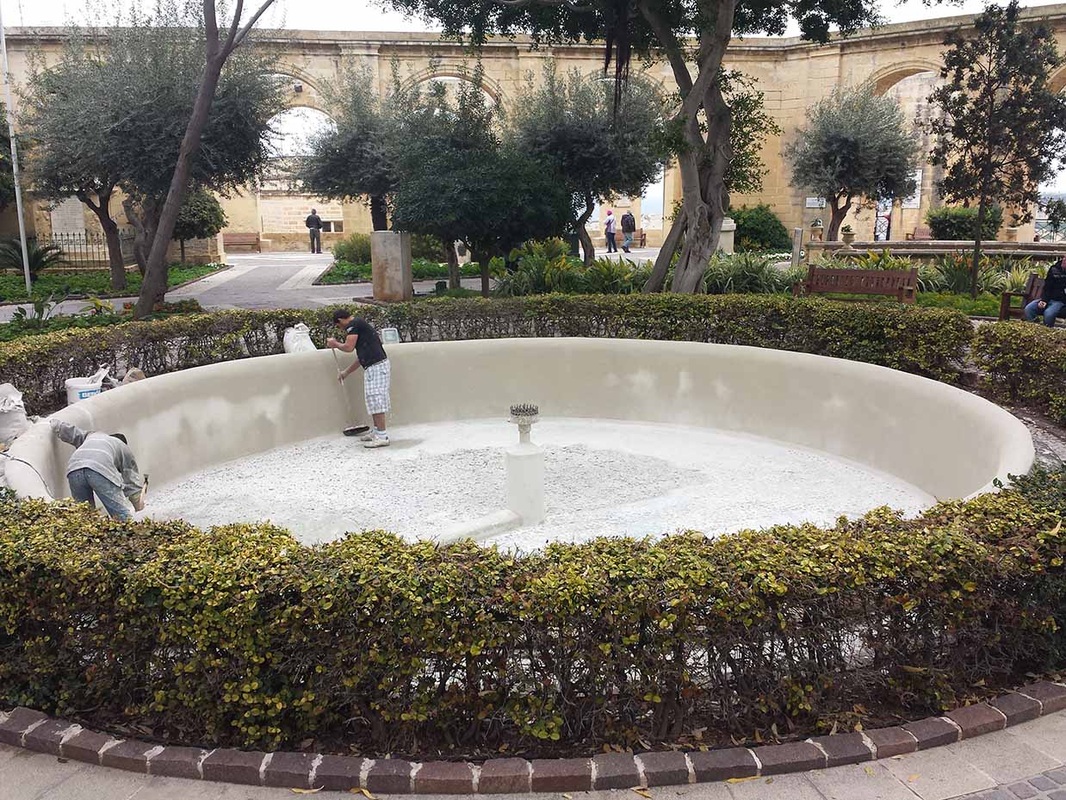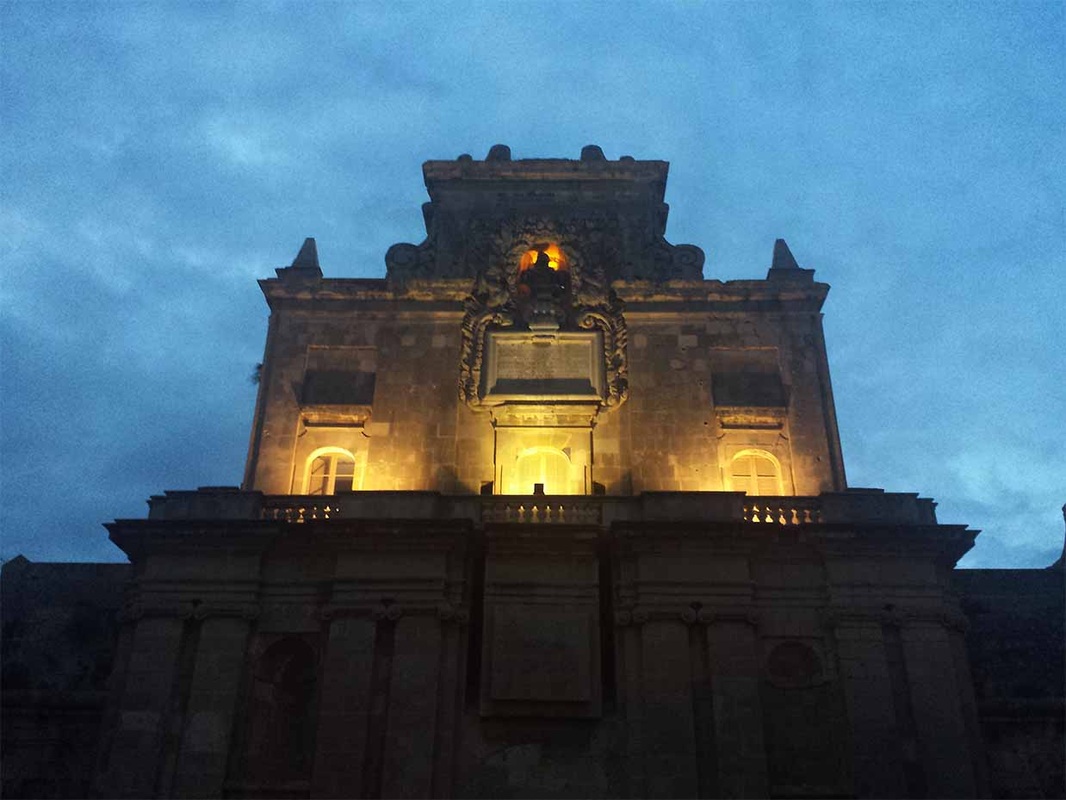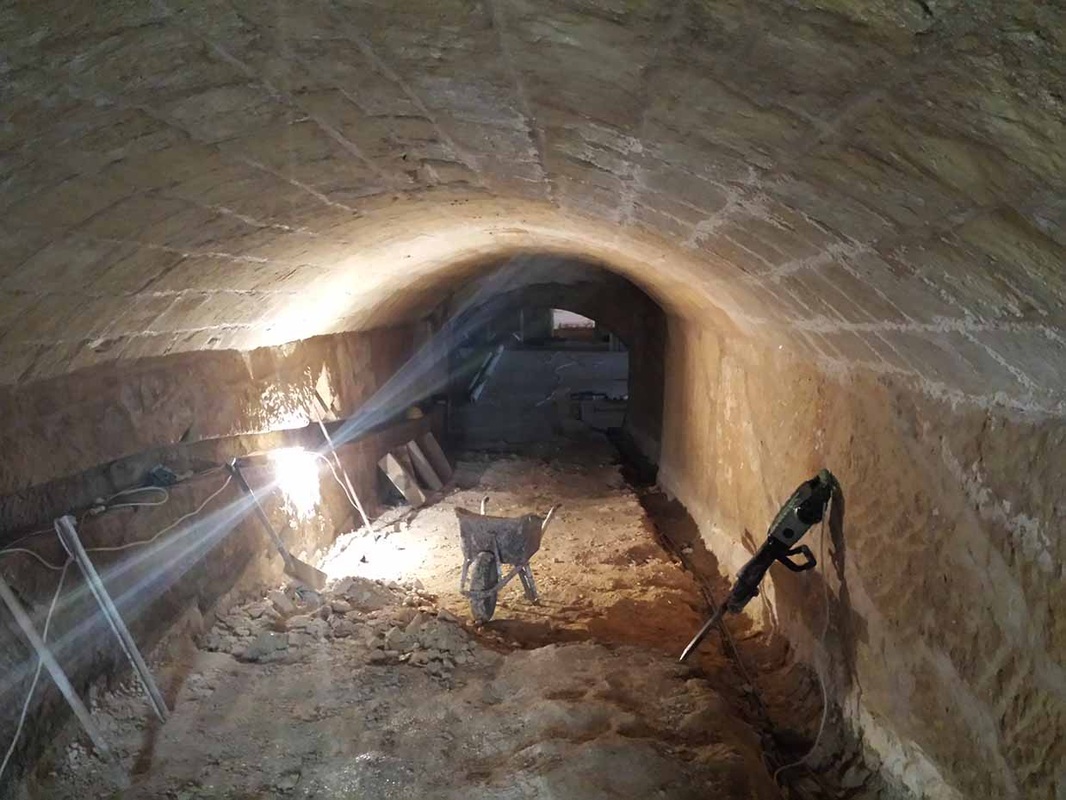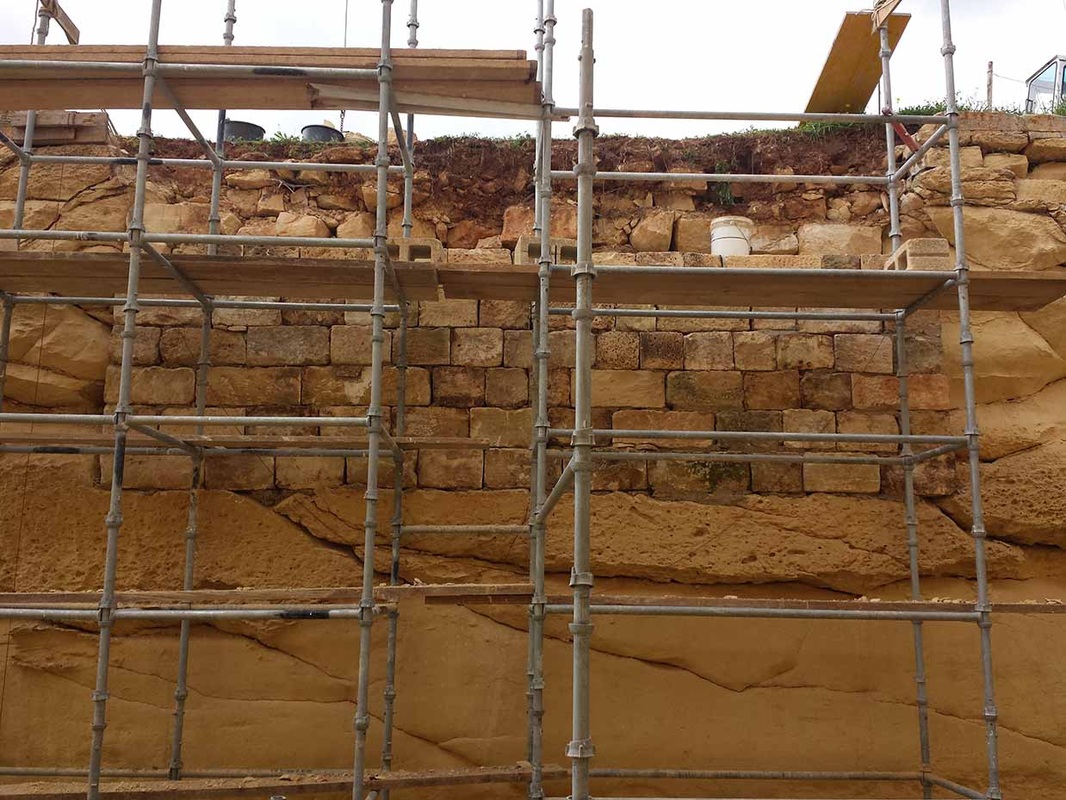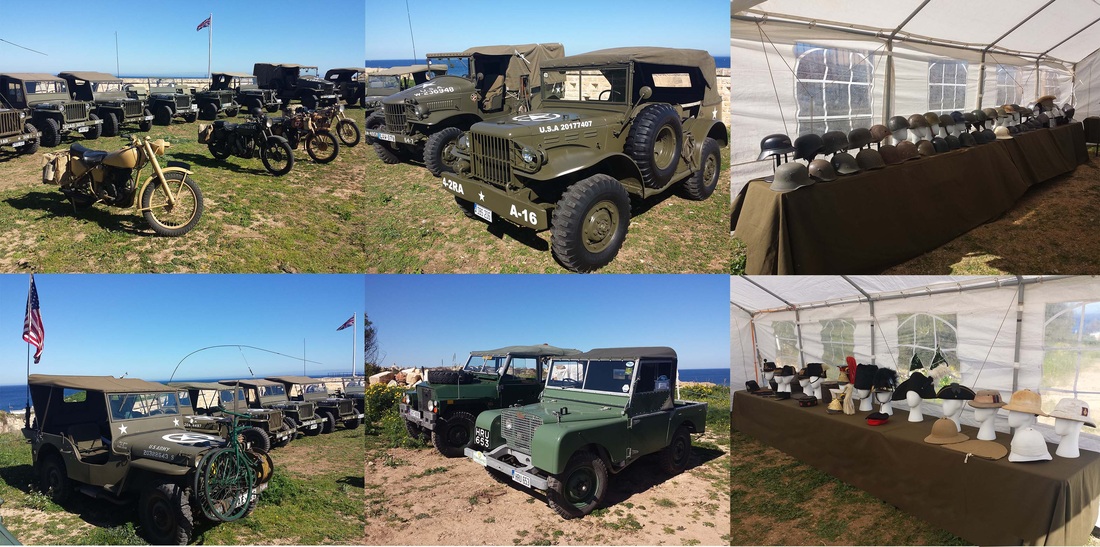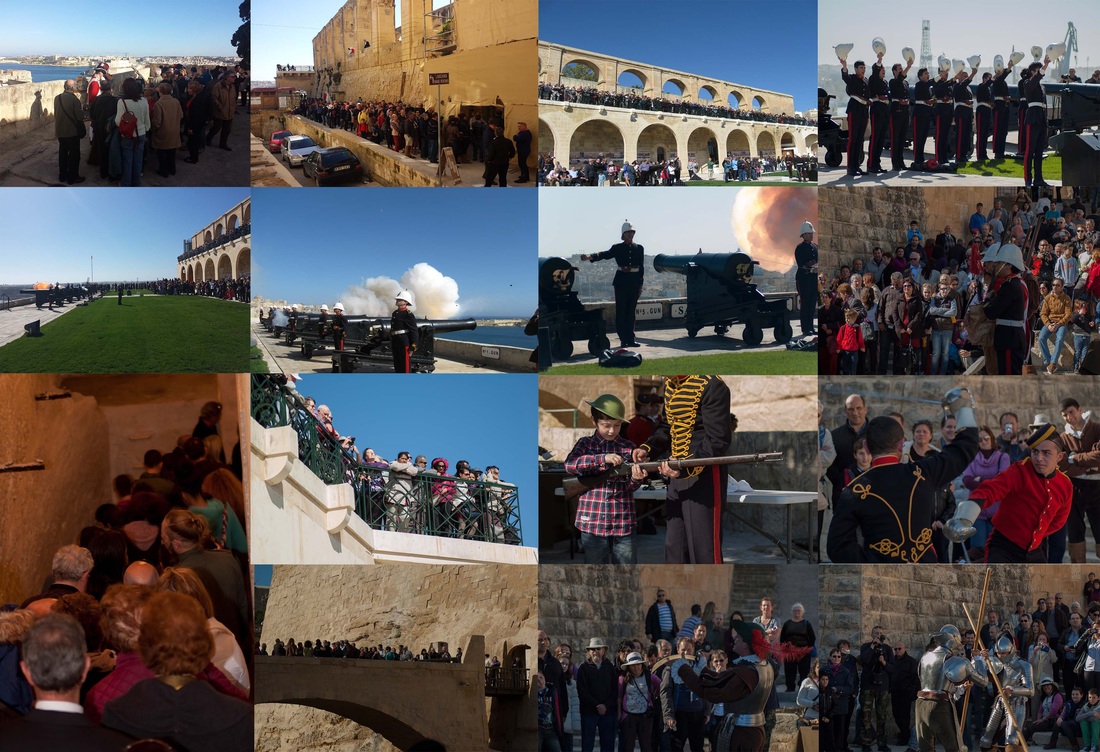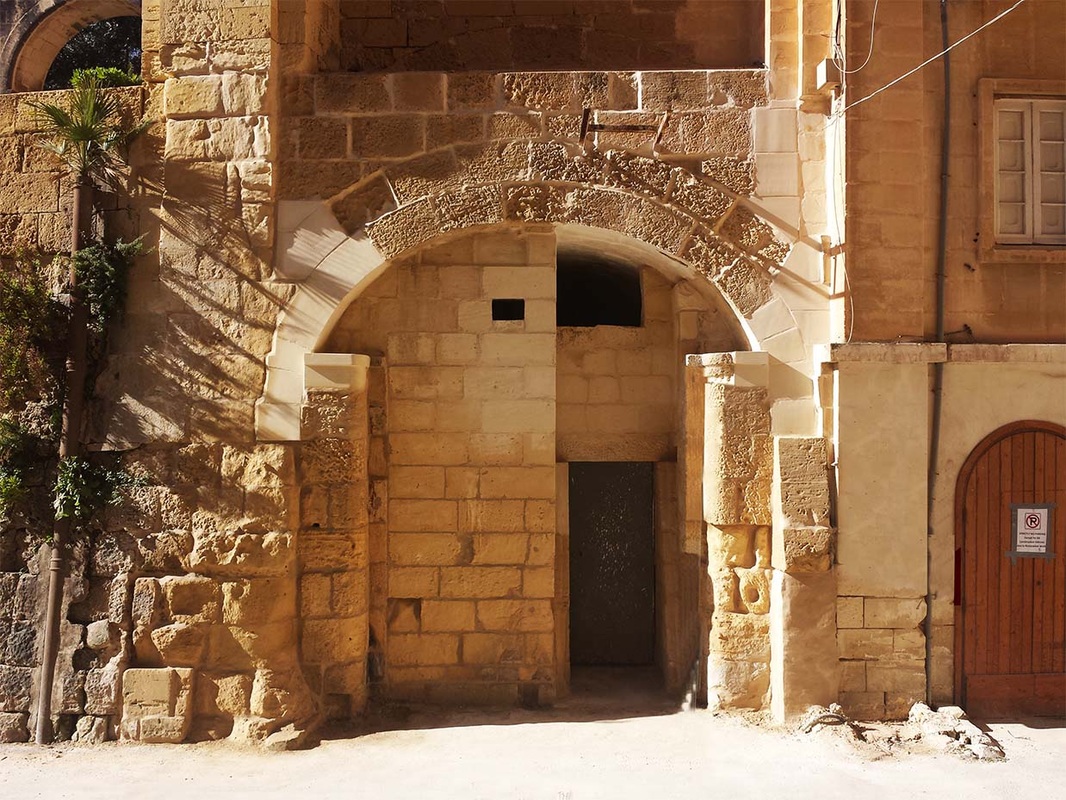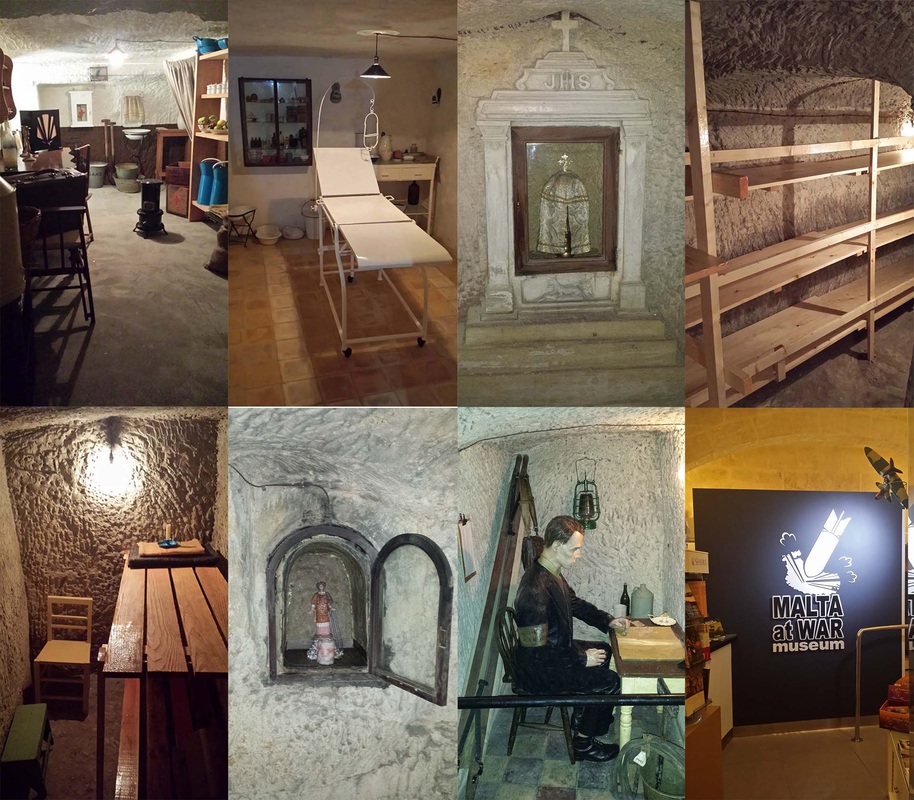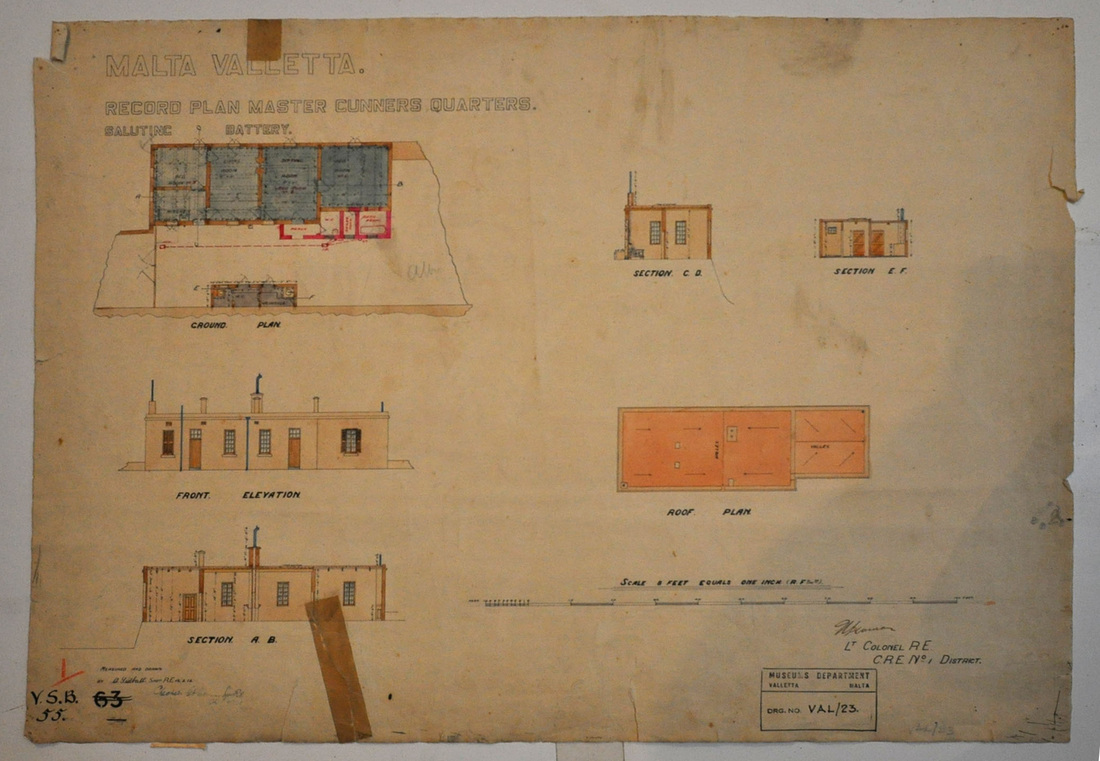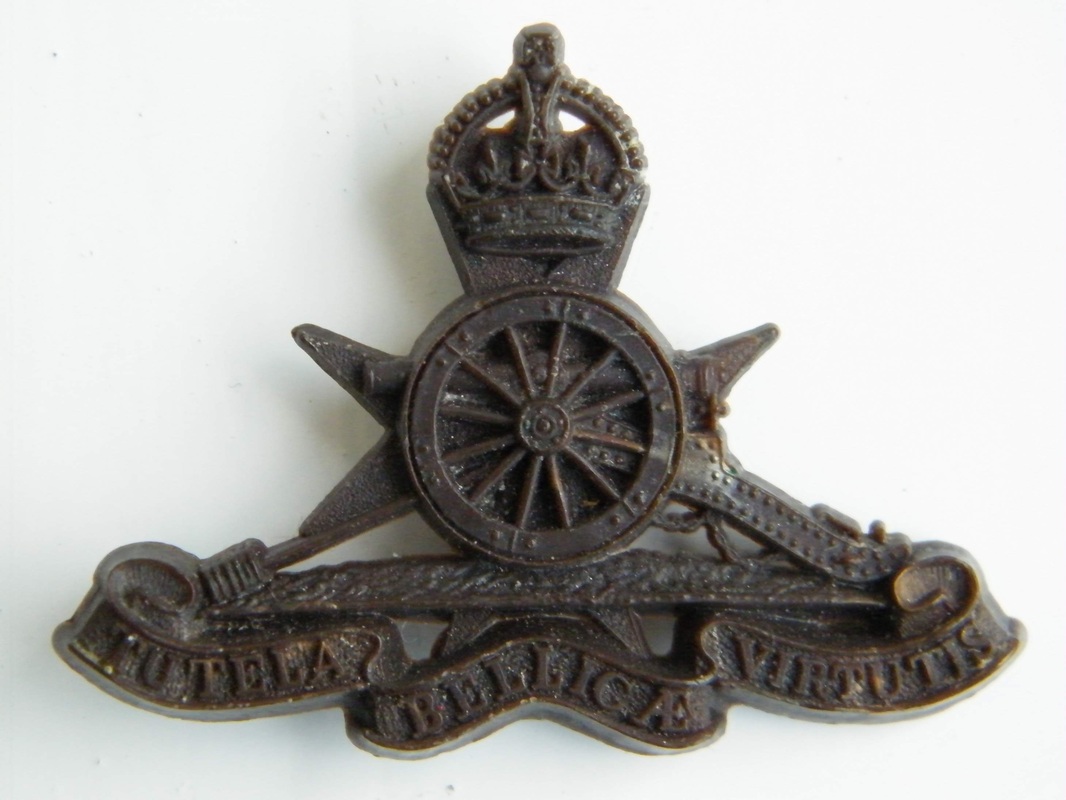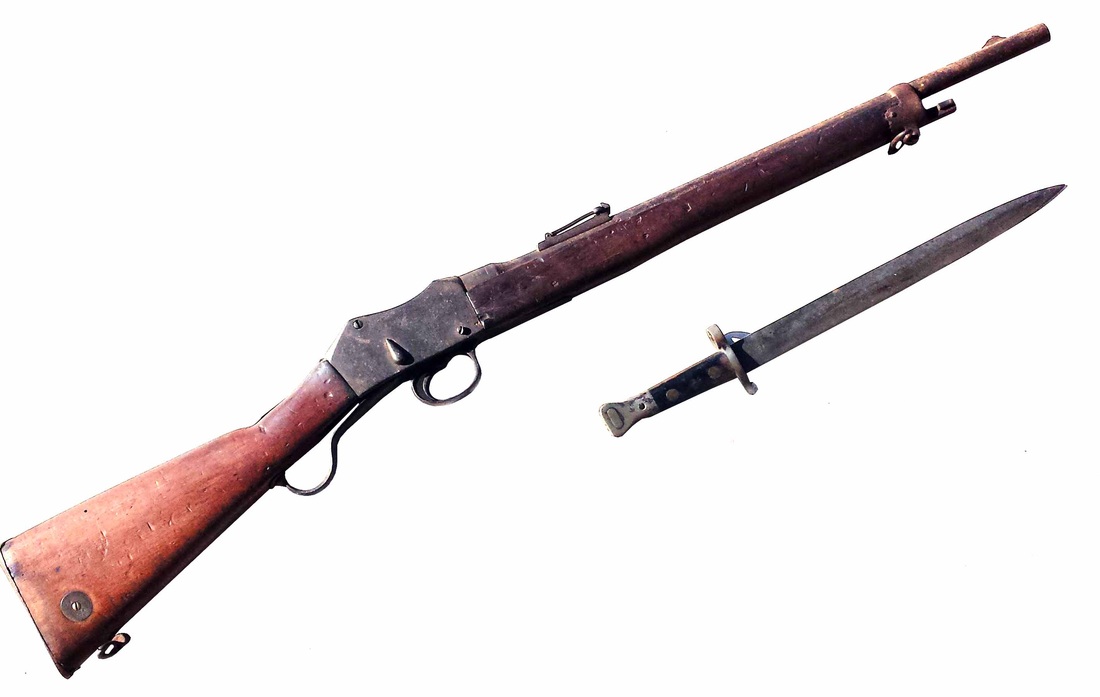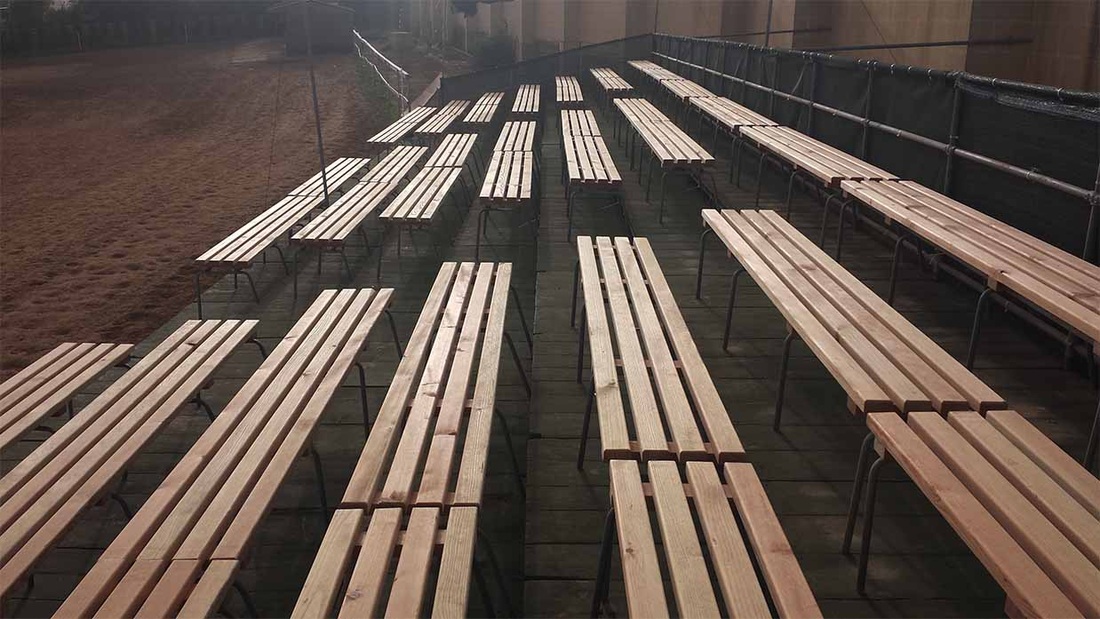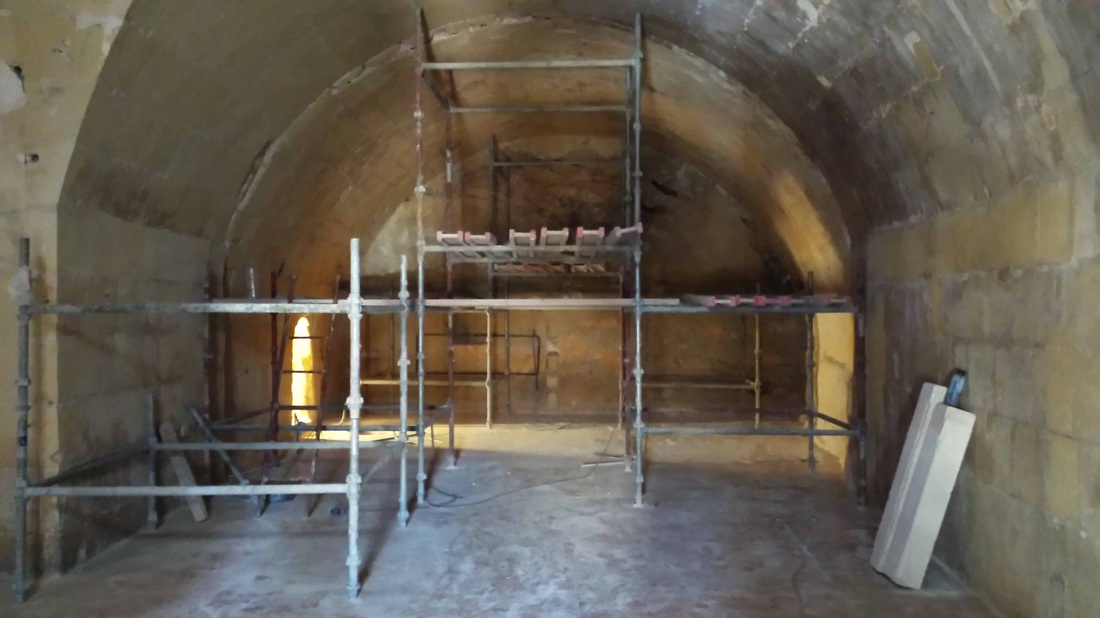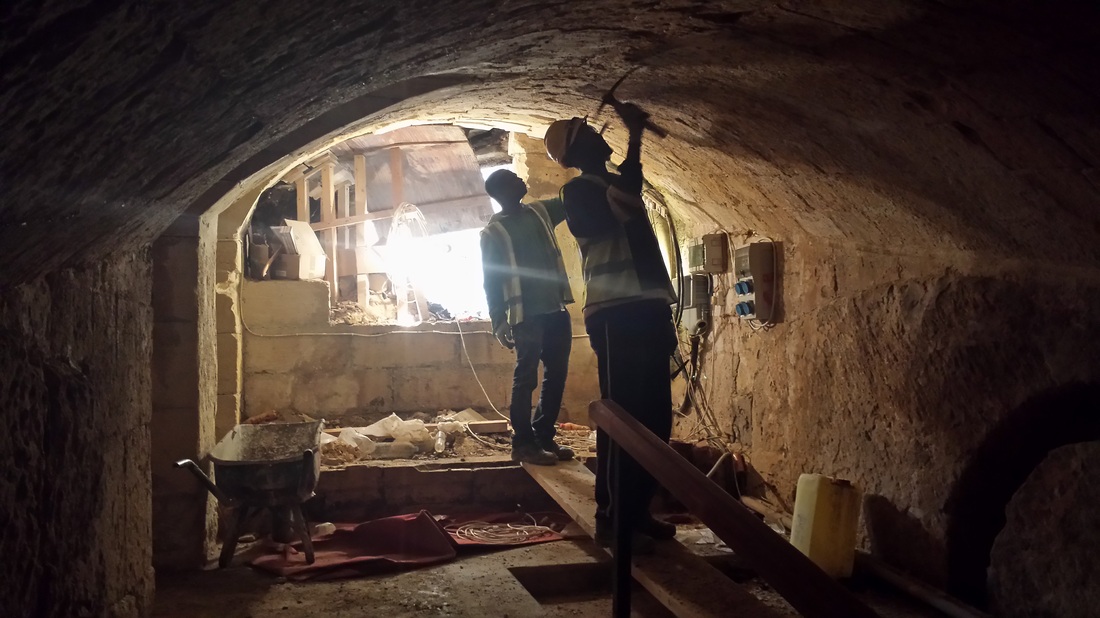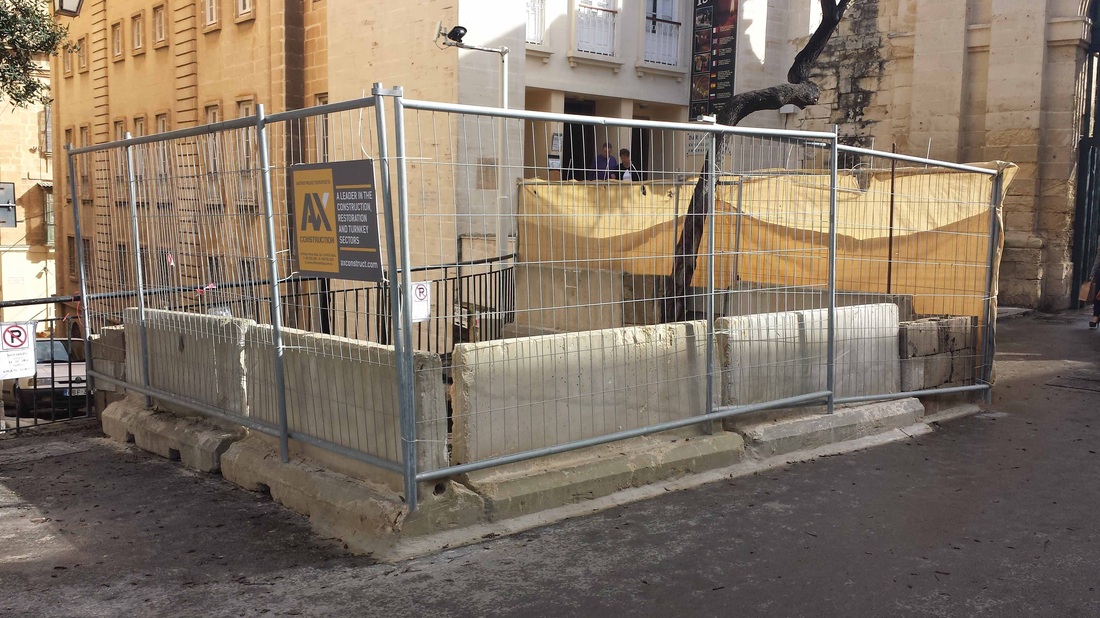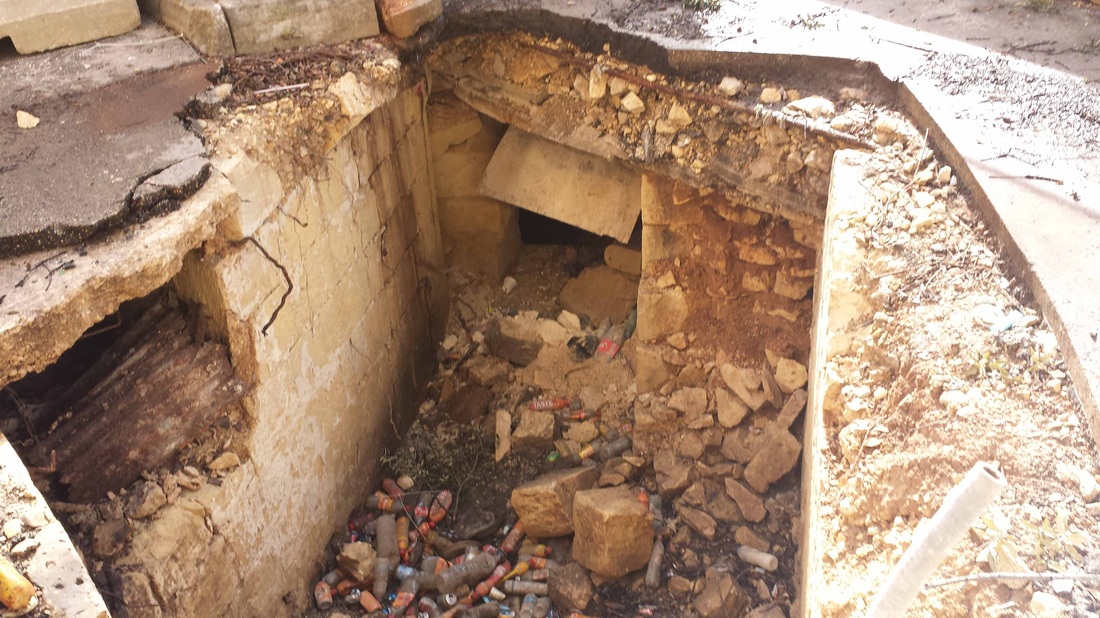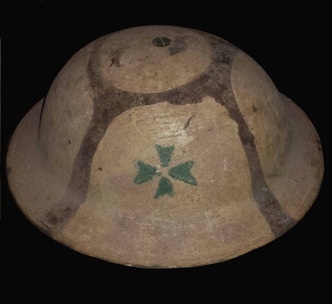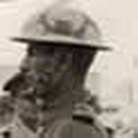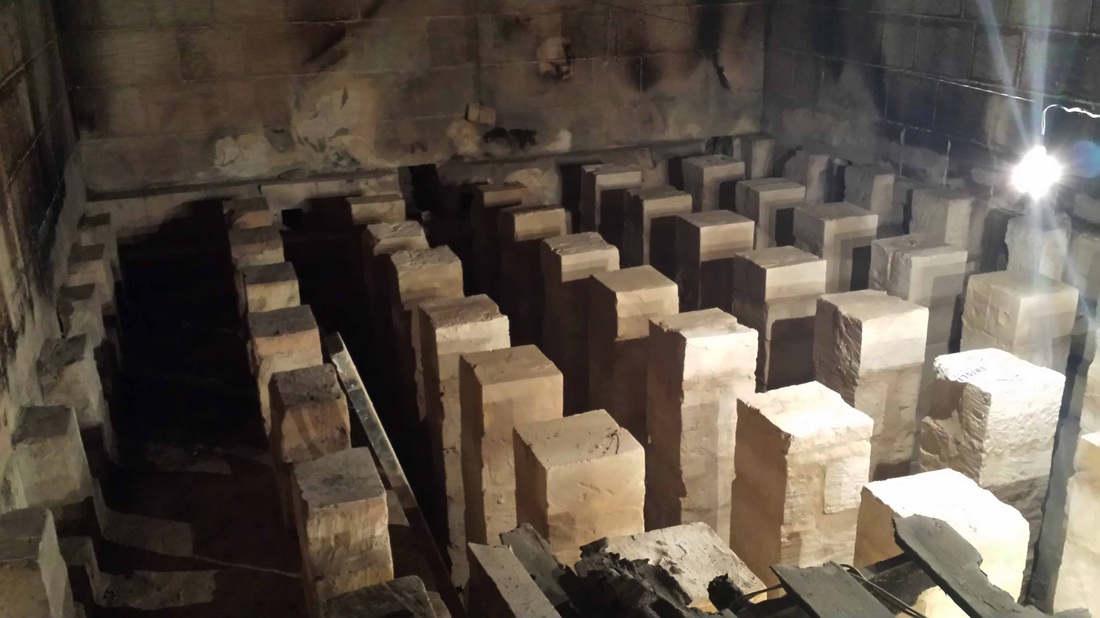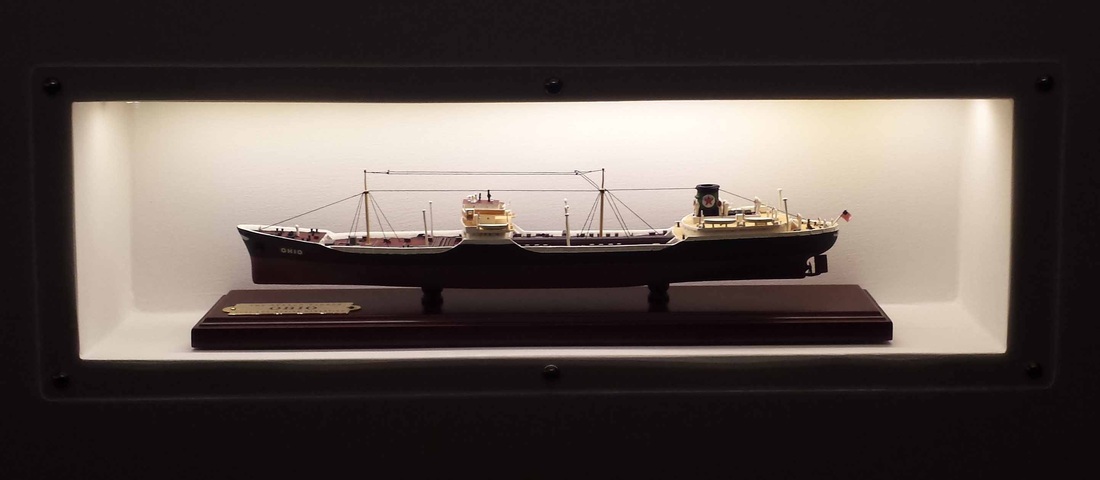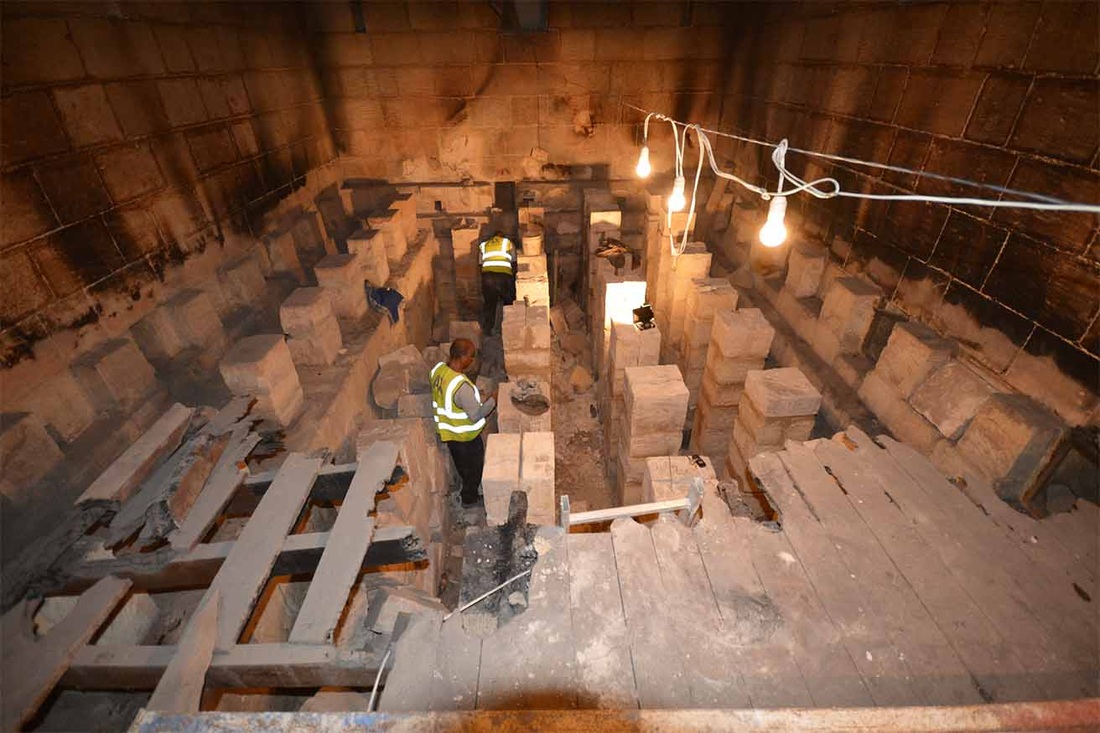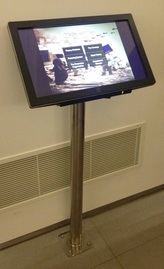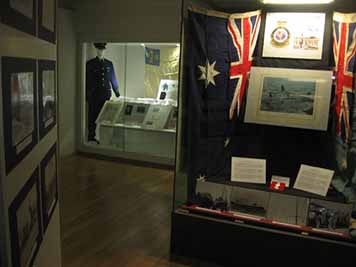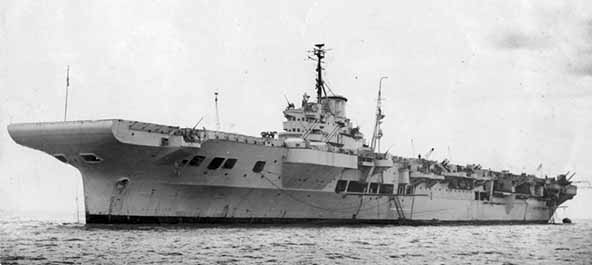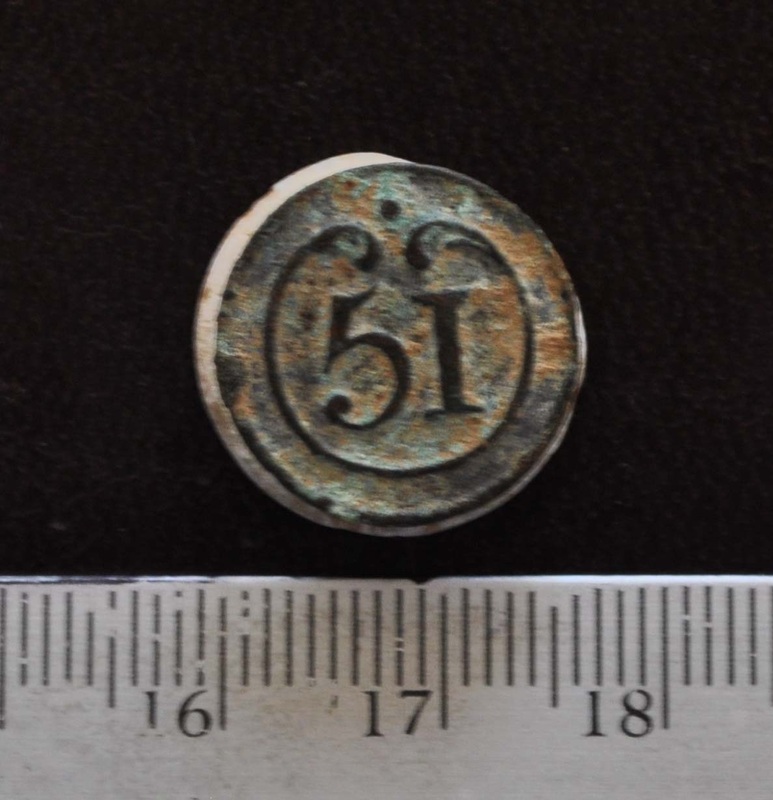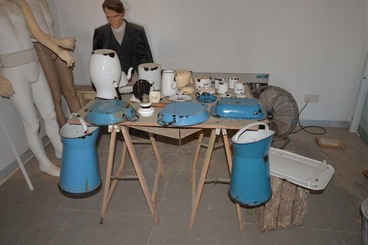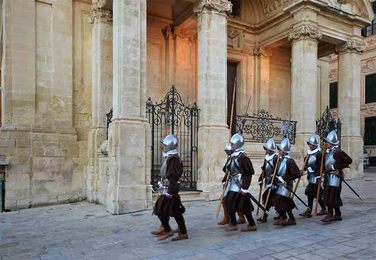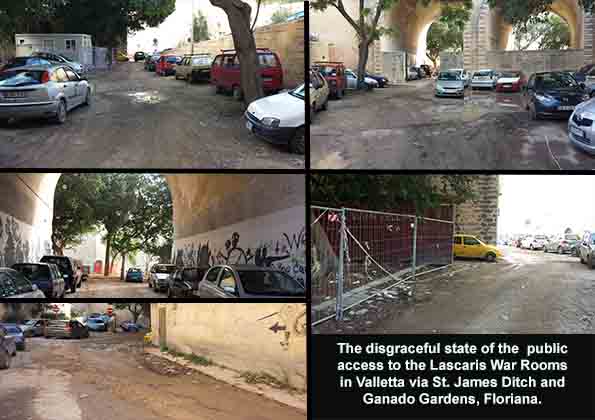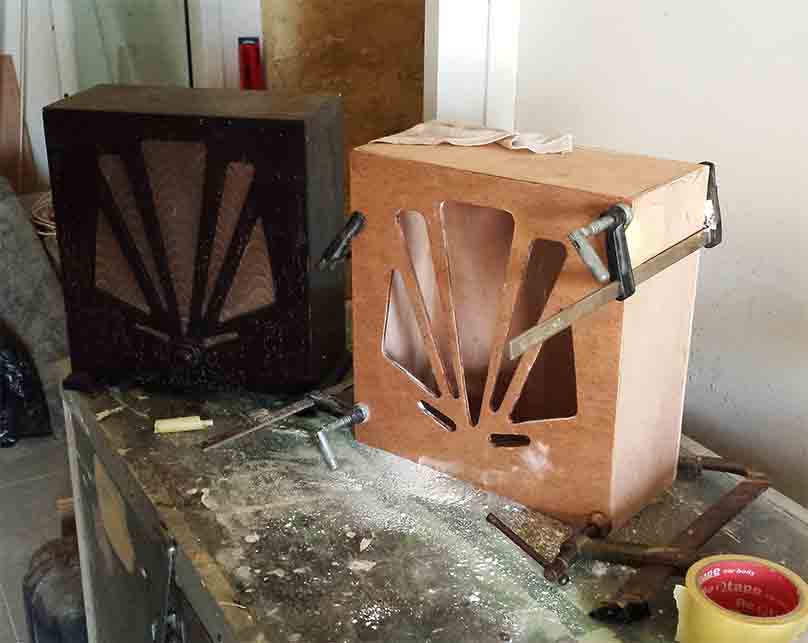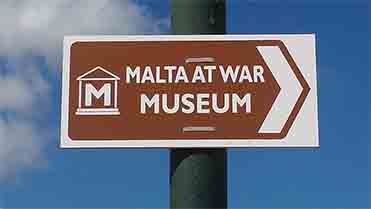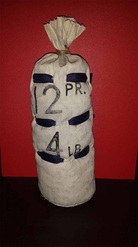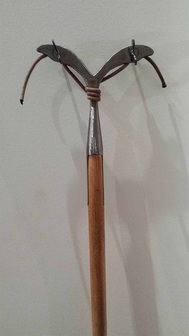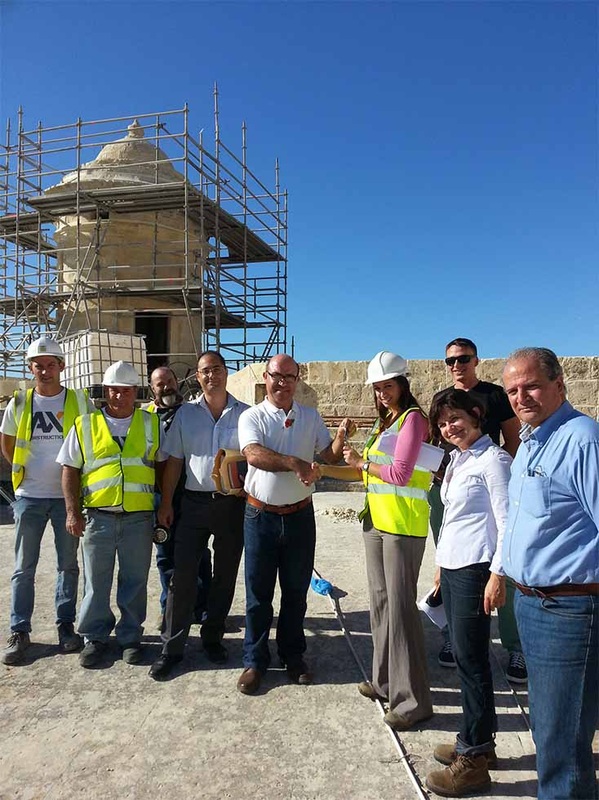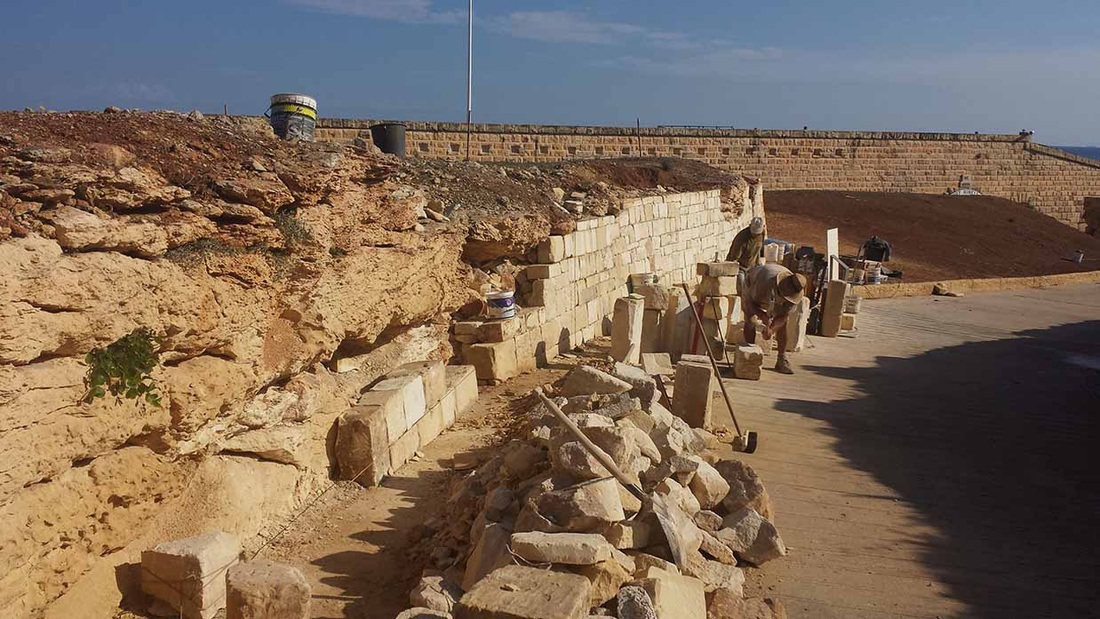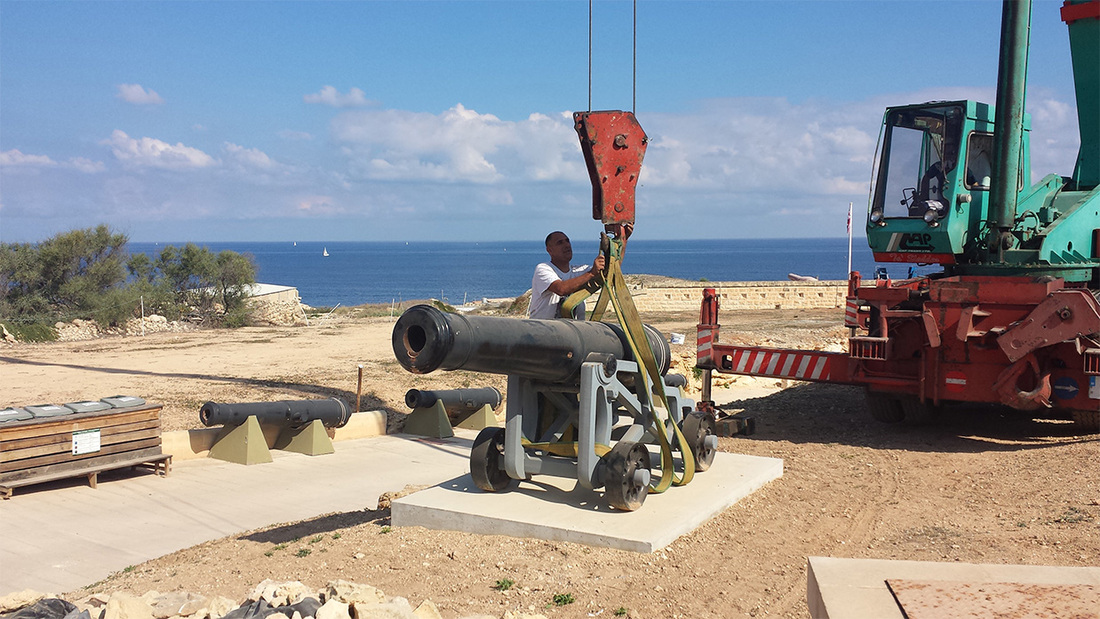Busy times at the Saluting Battery
|
The last few days have proven to be extremely busy at the Saluting Battery. On the evening of Saturday 20, a full-gun salute was fired at 20.00hrs as part of the official programme marking Malta's 50th anniversary from independence which was centred around the Grand Harbour. On the following day, Sunday, a 21-gun salute was fired to greet His Royal Highness Prince William Duke of Cambridge while touring the Grand Harbour on a traditional Maltese dghajsa. On Monday evening, another full-gun salute was fired to give start to a gala reception held at the Saluting Battery to mark the 25th anniversary of the German Würth Gruppe in Malta. However, the hardest day was reserved for Tuesday when our gun crews were required to fire nothing less than four full-gun salutes in succession to greet four visiting Aida cruise-liners which steamed in a row into the Grand Harbour as part of yet another anniversary, this time the 40th anniversary of Aida Cruises. Although intensive and taxing, the holding of these activities gives us a lot of satisfaction, since they go to show that the restoration of the Saluting Battery in 2004 was a complete success and that this attraction is now firmly established within Malta’s tourism and cultural product.
|
Restoration of Mistra Battery almost completed
|
The restoration of Mistra Battery in Mellieha has reached a very advanced state. Since the beginning of the project in May this year, the dry-ditch around the battery has been cleared and brought back to its original level, the land which accosts the battery at its rear has been exposed to show the original rock-face which contains clear marks of quarrying and perhaps an unfinished attempt to extend the defensive ditch all round. A missing part of the battery parapet has been rebuilt and the stone gun platform re-exposed and repaired. A central paved area which links the two block houses with the main gate and the gun platform has also been cleared of some 6-inches of concrete which covered it and restored to its former state. Eight musketry loop-holes were returned to their original dimensions after having been widened into windows in the past. The last remaining interventions to be completed are the rebuilding of the three missing stone embrasures and the uncovering of the internal floors inside the two block houses. If all goes well and enough funds are raised, this project will be completed by the end of 2014.
|
Naval cocked hat and officers' cap for the MAW Museum
|
A Royal Navy officers’ cocked hat and winter peak cap were added to the musuem collection at the Malta at War Museum. FWA is currently re-designing the naval display here to which new additions are being made.
The bicorn hat derives from the tricorne widely used in Europe and North America in the 18th century. At times, it is also referred to as the “cocked hat” – from the time when originally a bicorne had a rather broad brim, with the front and the rear halves turned up and pinned together. In English, the shorter front brim was called "the cock" and the longer rear brim was termed "the fan". Hats at the time had a semi-circular fan shape but later this changed to a more triangular shape, with its two ends becoming more pointed. This type of hat eventually became known as the cocked hat, in the English dominated world although to this day the French bicorne is also used. In the navy, this hat was also known as the “fore-and-aft” hat. Another French name for this type of hat is chapeau-de-bras. The bicorne was widely worn until World War I as part of the full dress and as part of the gala dress of senior RN officers till 1956. |
Fort Rinella directional signs removed to be replaced by fiction |
Fort Rinella directional signs removed to be replaced by fiction. Two directional signs located at either side of the modern archway within the Cottoner Lines and which takes to Kalkara were today replaced presumably by Transport Malta with... two new sign boards which completely omit Fort Rinella which is the only cultural attraction available at Kalkara. These signs replace older ones which included Fort Rinella. Instead the new ones include Fort Ricasoli which is derelict and shut; Fort St. Rocco which is a burnt-out hulk and an imaginary Fort Bighi! Needless to say that this was done without any consultation or prior warning. Nor any importance was given to the fact that Fort Rinella is Malta's number one cultural attraction. FWA will be protesting and will insist for the re-inclusion of Fort Rinella.
|
New back-lit interpretation system in the air raid shelters under the MAW Musuem
|
The first part of a new back-lit interpretation system has been installed in the underground air raid shelters that form part of the Malta at War Museum. The first boards installed are dedicated to the universal history and development of air raid shelters during the inter-war period and WW2. The remaining boards will feature other themes directly connected with the same subject but will also serve to interpret the different aspects of the air raid shelter itself.
|
Miserable state of the immediate surroundings of the Lascaris War Rooms
|
Following the recent restoration of the historic ramparts in the Lascaris end of the Valletta Ditch in Valletta by a private contractor, the whole area there was left in a complete mess with little concern that this flanks Valletta’s second most popular attraction. This miserable state of affairs has been on for far too long and despite repeated promises by the authorities nothing has concretely been done to clear the area.
The Lascaris War Rooms are visited by nothing less than 50,000 visitors annually each of whom is compelled to wade through this mire to reach the site. FWA has been doing its best in order to keep the access tunnels that link St. James Ditch with the Valletta Ditch well maintained and lit. But the cost and scale of works involved here is beyond her. Till some four years ago FWA undertook the voluntary maintenance of this area till it was unceremoniously pushed aside to allow for the said restoration works without any form of prior consultation. Now that these works have long been completed isn't it time for a general clean-up of the area to take place? FWA has written to the Ministry for Tourism in the hope that immediate action is taken. |
Relocation of wartime beach post at Salini
|
Fondazzjoni Wirt Artna is very pleased to note that the wartime beach post at Salini has been relocated rather than destroyed to make way for the current road-widening works. For all intents and purposes this move represents yet another important milestone in the evolution of cultural heritage appreciation, protection and management in Malta. FWA considers this gesture as a clear sign of maturity shown by the authorities who now consider all Maltese heritage irrespective of the period it represents as equal in importance contrary to the past destructive norm where anything British or from WW2 was too modern to keep and therefore expedient.
From its start, FWA has made it as one of its fundamental principles to reverse this inane mentality. Throughout the years, besides regularly promoting the idea in public it has also undertaken numerous initiatives to study, document and in cases restore and open to the public different examples of wartime defence posts such as R15 Reserve Post at t’Alla w Ommhu in Naxxar. |
With the successful relocation of the Salini beach post FWA feels that its advocacy on the subject has been entirely vindicated and augurs that this practice will stay in place in the future.FWA has played an instrumental role in this project along with Mepa, the Superintendence for Cultural Heritage, Transport Malta, and Government. It has not only called for its preservation through relocation and the reconstruction of what cannot be saved but has also advised for the rebuilding of the missing front of the post which was taken away in the 1950s when the first Bahar ic-Caghaq – Salini Coast Road was built. FWA has also been monitoring the works on a regular basis and has offered to help out with the interpretation of the post and to take it under its long-term care once it is fully relocated and re-erected.
The beach post at Salini was originally known as SB3 (c) – Salina Bay no.3 (c). It was armed with a Lewis machine gun and a Vickers machine gun apart from the standard personal equipment of its seven men section consisting of one .303 SMLE rifle and bayonet. The Section Commander would have been armed with a Thompson machine gun and a revolver. In addition, the garrison would have had a supply of hand grenades and a signal pistol. The post was equipped with a Lyon searchlight complete with its own generator and night glasses for use by its operator against the effects of glare. In 1942, it formed part of the “D” Madalena Company within the Northern Infantry Brigade consisting of the whole portion of the island North-west of Valletta. The island was divided in four Infantry Brigade Sectors. SB3 (c) was manned at different times by 8 Battalion Manchester Regiment; 2nd Battalion Royal West Kent Regiment and the 1st and 2nd Battalions of the King’s Own Malta Regiment. The post is of an irregular shape and is built on one level with part of it abutting a rock face. The post may have had three to four machine gun ports of which only one and a half presently survive. There are also two small arms loopholes still extant in its faces. Entrance was from the rear on the right. This entrance would have been protected by an iron door fitted with small loopholes. This particular post was covered in rubble stone to help it blend with its rocky surroundings. It also had a small rectangular fighting-light emplacement positioned high above it and some distance away. |
Naval ship crest display at the MAW
A large Royal Navy ship crest collection is currently being added to the Malta at War Museum at Vittoriosa. This collection will feature each and every Royal Naval ship that in one way or another has had a connection with Malta during WW2. A smaller display of similar crests representing RN shore establishments in Malta has also been put up. These crest came from different sources and were partly donated or purchased by FWA.
|
Garrison Church vaulted entrance returned
The long forgotten sunken vaulted entrance into the Garrison Church Crypt located under the one-time Protestant military chapel on the right to the entrance into the Upper Barracca Gardens has been retraced, cleared of rubble and is in the process of being returned to its original use. This work will complete the restoration of the Garrison Church Crypt which during the war served as the Coast Artillery Gun Room. This place is inter-linked with the underlying War HQ tunnels through a spiral staircase. FWA will use this property to house the Saluting Battery museum display and as a visitors' center for the new multi-period Military Heritage Park which is scheduled to open late this year. This work is co-funded by the European Regional Development Funds, the government of Malta and FWA.
|
Wartime wall graffiti recreated
A pair of Malta wartime wall graffiti has been recreated in one of the two sample refuge rooms located in the air raid shelter under the Malta at War Museum at Couvre Porte, Vittoriosa. The two graffiti were reconstructed using period imagery from the time and using authentic materials. Both are from the height of the Malta blitz and represent the high resentment felt by the population at the murderous aerial onslaught waged against the Maltese from nearby Sicily.
|
Work starts on the ditch and counter-scrap of Mistra Battery
Work is currently in hand at repairing the missing parts of the counter-scarp of the ditch at Mistra Battery, Mellieha. Sole use of traditional materials and building methods is being made. Prior to the commencement of this work, the excavated part of the ditch was cleaned out and all unfinished parts of the same unearthed to expose the original karst land which originally surrounded the battery and which had unfortunately been tarmaced over. This part of the ditch had been started but never finished and shows clear signs of rock cutting.
|
Relocation of wartime beachpost
FWA is currently monitoring the relocation of the wartime beachpost at Bahar ic-Caghaq which is necessitated by the road widening of the coast road there. FWA had from the start lobbied with the authorities for the safeguarding of this historic property and we are pleased to confirm that this has been conceded. At present, the post has been fully exposed, measured and parts of it are to be saved for inclusion in a faithful modern replica which is to be built a small distance away to preserve its original defensive context. This post was built in 1939 as part of a network of low-lying concrete machine gun post built along the shallow part of the coast to protect the island against an invasion. In the 1950s it went on to loose the whole of its front to be briefly sued as a wayside shop. For manby year sit lay abandoned and derelict. Plans are now afoot to move it some distance away and to replace it with a modern replica which will alos include a recosntruction of its presently missing front.
|
AX Holdings makes a contribution towards the restoration of Mistra Battery
Well known Maltese entrepreneur and Chairman of the AX Holdings has made a handsome contribution towards the Mistra Battery Restoration Fund. A brief presentation was held on site while Mr Xuereb was shown round by FWA Chairman Mario Farrugia who explained the plans for the site and the work currently in hand.
FWA is still collecting funds for this project if you are reading this piece and wish to contribute you can do so directly from here by pressing the button hereunder - thank you. |
Naval lot donated to the Malta at War MuseumAn interesting naval lot has been donated to Fondazzjoni Wirt Artna by Jayne Thompson daughter of the late-Able Seaman L.W. Clarke TOSMX 759739 formerly of HM Submarine United P44 for display at the Malta at War Museum at Couvre’ Porte, Vittoriosa. The lot consists of the framed medals, cap tally and under sundries belonging to L.W. Clarke; a scale model of HM Submarine United P44, a small oil painting by R. Overy of the same and a framed printed greetings message issued by the historic town of Berkhamsted situated in the west of Hertfordshire, between the towns of Tring and Hemel Hempstead on the occasion of its adoption of the United during its Warships’ Week.
HMS United (P44) was a Royal Navy U-class submarine built by Vickers-Armstrong at Barrow-in-Furness. She spent most of the war in the Mediterranean as part of the 10th Submarine Flotilla which was based in Malta at Manoel Island. The United sank the small Italian merchant Rostro, the Italian auxiliary submarine chaser V 39/Giovanna, the Italian destroyer Bombardiere, the French merchant Ste Marguerite (the former Norwegian Ringulv), and the Italian merchant Olbia. Whilst covering the Allied invasion of Sicily, United spotted the Italian transport submarine Remo on the surface. She launched four torpedoes, one of which hit the Remo amidships, sinking her within a few minutes. Only four survived, the three who were on the conning tower (amongst them the CO, Captain Vassallo), and Sergeant Dario Cortopassi who was able to come up from the control room. United also sank the Italian transport ship Rosolino Pilo, which had already been damaged in a previous attack by motor torpedo boats. She also damaged the Italian tanker Petrarca, and further damaged the Italian merchant Ravenna. The Ravenna had been grounded after air attack and a fire on 29 September 1942. United survived the war and was scrapped at Troon from 12 February 1946. |
|
Fondazzjoni Wirt Artna has obtained an original ship crest for HMS Cleopatra for display at its Malta at War Museum at Couvre Porte, Vittoriosa.
FWA is currently seeking similar ship crests to complete its collection representing all naval ships which operated to and from Malta during WW2. Anyone who may help in this project is kindly requested to contact us by phone 79874153 or email info@wirtartna.org. HMS Cleopatra was a Royal Navy Dido-class cruiser built by R. and W. Hawthorn, Leslie and Company, Limited (Hebburn-on-Tyne, UK), on 5 January 1939. |
Naval Ship Crests wanted
Throughout the war it maintained a very close connection with Malta and the Mediterranean escorting convoys to the island including the fated Santa Marija one in August 1942. She was Admiral Philip Vian's flagship in the Second Battle of Sirte on 22 March 1942 which took place in the Med. Later it went on to form part of Force K stationed at Cape Bône in Tunisia which harassed Axis shipping in the Med. In July 1943, she joined 12th Cruiser Squadron to cover the landings in Sicily during Operation Husky. Six days later she was torpedoed and badly damaged by the Italian submarine Dandolo forcing her to return to Malta for temporary repairs which lasted until October 1943 and after which she sailed to Philadelphia, US, for full repairs. Cleopatra ended the war in the pacific fighting the Imperial Japanese Navy.
Cleopatra returned to Malta after the war in late 1951 for a four year stay. While here she took a starring role in the 1953 film of C.S.Forester's Brown on Resolution, (called Sailor of the King in Britain, and Single-handed in the USA). Cleopatra plays both the fictional Royal Navy ships "HMS Amesbury" and "HMS Stratford". As Amesbury she is heroically sunk by the more powerful German raider Essen, (portrayed by the Manxman with large mock-up gun turrets), and as Stratford, she triumphs at the end of the story. From Malta it went on to Chatham on 12 February 1953 for paying off. She was broken up at Newport on 15 December 1958. |
TripAdvisor Tourism Awards - Press Conference
FWA held a press conference this morning at the Lascaris War Rooms in Valletta to inform about its granting of three Certificates of Excellence and one Travelers' Award by TripAdvisor for three of its four heritage attractions - Fort Rinella in Kalkara, the Malta at War Museum in Vittroiosa and the Lascaris War Rooms in Valletta. The event was attended by the Hon. Minister for Tourism who complimented FWA on its achievements and the good work it does in the fields of heritage preservation and management and tourism product-development. Photo: Szabolcs Pócza
|
Visit by Prof. John Turnbridge
Showing Professor Emeritus John Turnbridge and his wife the progress achieved in the restoration of the War Headquarters in Valletta following a lapse of 10 years. John Tunbridge is a graduate of St. John’s College, Cambridge and received h...is Ph.D. from Bristol University. He joined Carleton in 1969 and has since undertaken visiting teaching commitments in Australia, the UK and South Africa. He is co-author of The Tourist-Historic City (Elsevier, London, 2000) and Dissonant Heritage (Wiley,Chichester, 1996) and his research is concerned with the various dimensions of the geography of heritage. He is currently Visiting Professor, School of Business (Heritage Studies) at Brighton University, UK, and School of Marketing at Curtin University, Perth, Australia. His main research interests are in Tourist-historic cities; the Geography of heritage and Managing tourism in cities.
|
New Garrison Gate installed at War HQ Entrance
A new large and heavy timber garrison gate has been installed at the entrance into the underground War Headquarters in Valletta through Battery Street. The gate is a faithful replica of an older one which existed here till about 15 years ago and which has since collapsed due to deterioration resulting from lack of care. These types of gates were commonly used to secure entrances into forts and fortifications in centuries past. This work forms part of the current refurbishment of this property which is partly funded by the European Regional Development Funds, the governement of Malta and FWA.
|
The Malta at War Museum gets its remaining wall interpretation panelsThe Malta at War Museum at Couvre Porte, Vittoriosa has received its last remaining museum interpretation panels. These panels were designed in-house at FWA and were printed, manufactured and installed by a private contractor. They cover all aspects of daily life in wartime Malta and include hundreds of images, diagrams and photographs. In all, some forty (40) boards were installed and with them FWA concludes its cycle of varied interpretation at this museum. At the MAW Museum a visitor will find a choice of different interpretation media consisting of audio guides in twelve different languages, 25 different films including the Malta GC movie made in 1942; touch screens, projections, ambience sounds, reconstructions, exhibits and visual panels. Other similar work is currently at hand in the vast underground complex consisting of air raid shelters located under the museum.
|
Mellieha Local Council visits Mistra BatteryMembers of the Mellieha Local Council led by their Mayor John Buttigieg have visited Mistra Battery. They were shown around by FWA Chairman Mario Farrugia who was assisted by FWA volunteers Tony Bugeja and Pete Morecombe. During this visit the council members were shown around the battery and were told about FWA's plans for the property. They were also shown what work has so far been achieved and what remains to be done. The Mellieha Council has augured FWA well for the project and has offered their full support for it.
|
Maltese-Australian artist paints Mistra BatteryMaltese-Australian artist Raymond Agius has kindly completed a unique watercolour depicting Mistra Battery at Mistra Bay Mellieha in wartime when the bay served as a seaplane base. The painting includes a Short S25 Sunderland flying boat the type of which was flown between Alexandria and Malta at the time. Ray has presented this water colour as a means to help FWA raise further funds for the restoration of the Mistra Battery. His choice of painting the battery in this way comes from his specialisation in painting historic aircraft. The original painting will be exhibited at the forthcoming: “The Santa Marija Convoy - the fate of a nation” art exhibition which FWA is hosting at its newly refurbished Garrison Church Crypt at Castille Place, Valletta. This exhibition will feature some 35 original paintings by Agius each of which will have a different ship from the Santa Marija Convoy coupled with a different type of aircraft from both sides and used in that famed battle.
As a former naval ordnance engineer and car designer with General Motors, Ray is immeasurably qualified to paint detailed and accurate historic aircraft, naval vessels and battle scenes. He is also incredibly versatile in the use of different mediums and his work comes in ink, water colours, gauche and oils. The Mistra Battery painting will be auctioned during the upcoming exhibition to raise funds for the restoration of Mistra Battery. Twenty authenticated and numbered prints of the same will also be made available for the same purpose. Anyone interested in obtaining the painting or a print is kindly asked to contact FWA by email: info@wirtartna.org. |
Government launches Tourism Strategy Consultation Process at the Saluting BatteryThe Ministry for Tourism has held a press conference at the Saluting Battery to launch its new National Tourism Strategy consultation process. The event was attended by representatives of all stake holders in the industry. The conference was addressed by Dr Edward Zammit-Lewis Minister for Tourism.
|
UK volunteer at the Lascaris War RoomsMark Strand a former Royal Engineer and fireman has spent a week-long holiday in Malta helping out with maintenance work at the Lascaris War Rooms. Mark is from Kent and back home is an active volunteer in the army benevolent fund. Before coming to Malta he contacted FWA to offer his assistance at the Lascaris War Rooms in Valletta. Throughout his placement at the Lascaris War Rooms he undertook valuable maintenance work all of which he accomplished to a very high standard - thank you Mark.
|
Traditional Maltese Cart and agricultural implements at Fort RinellaA traditional Maltese cart and iron earth scarifier (xatba) were obtained by FWA for preservation and regular use at Fort Rinella. Both represent important parts of Malta's traditional and rural heritage. Besides being used in public displays both elements are also regularly used for the same practical chores for which they were originally designed at the property in place of modern means.
|
Draw-bridge at Fort St. Thomas studied
The remaining parts of the original bascule draw bridge at Fort St. Thomas, M'Scala has been studied, measured and drawn by British ex-pat Peter Morecombe who has been tasked with its restoration and the reconstruction of all missing parts. Peter is a qualified mechanical engineer and has an interest in military history. Not long ago he has made a working scale model of the Guthrie-bridge at Fort Rinella which is now on display in that fort. The surviving parts of the Fort St. Thomas bridge represent the counter-weight part of the bridge and an extent of the timber out-triggers which lifted the bridge. Essentially, this represents the lifting mechanism of the bridge. FWA is currently concluding its plans for the restoration of this tower and its opening to the public.
|
Interview by Gibraltar TV
FWA Chairman Mario Farrugia was interviewed by Paula Latin of the Gibraltar TV at the Saluting Battery for a programme about the commonalities between Gibraltar and Malta. Given that one of the common features between the two countries are the Armstrong 100-ton guns, the Gibraltar TV crew will be visiting Fort Rinella in Kalkara to film the 100-ton gun there and also the popular animated tour which starts at 2pm between Tuesday and Sunday.
|
Lascaris Association visits the War H.Q.
A group of former British services personnel members of the Lascaris Association (Malta) and who at one time or the other worked at the Lascaris Communication Centre (ComCen) down in the Valletta Ditch have visited the newly refurbished War H.Q. They were toured around by Mario Farrugia, FWA Chairman who for the last four years have been steering the restoration of this vast under and above ground complex. Besides rekindling many memories to many this visit also led to some very interesting information being passed on to FWA about the different aspects of the building from the different times when it was operational.
|
Artistic reconstruction of Mistra Battery
An artistic reconstruction of Mistra Battery showing her complete as originally built and equipped with its armament as listed in 1761 has been made. This is to be included in a planned guide book about the place which is currently in the making and which will be sold to raise funds. The Mistra Battery reconstruction was drawn by Mario Farrugia.
Work on this historic property is going at a fast pace and if the required funds are raised in time all work on it will be ready by Christmas. In the meantime, FWA is forming a volunteer group to manage this site. Anyone interested to form part of this team is encouraged to send us an email at info@wirtartna.org. |
Mistra Battery Restoration Fund
We are pleased to announce that since our soft launching of the Mistra Battery Restoration Fund just two weeks ago, we have already collected the sum of €4,885. These were collected through direct online donations. Another €26,000 has also been promised by big businesses. FWA requires the sum of €60,000 to be able to cover the costs involved in completing the restoration of this lovely piece of military coastal heritage. Work is progressing steadily at this site and we require the funds now. The project is meant to be finished by the end of this year. FWA is thinking about a number of ways of raising more funds other than direct donations but donations will remain necessary. If you wish to help please make your donation directly now by pressing the donation button. Thank you.
|
Stair-lift installed at Garrison Church Crypt
A stair lift has been added to the entrance into the Garrison Church Crypt offering easy access to persons with disabilities. This place is in its final stages of completion and will soon host a one-month on art exhibition by Maltese-Australian Ray Agius dedicated to Operation Pedestal - the Santa Marija Convoy. More details on this event will given later.
|
New Timber Apertures ready for Gun Powder Magazine
All timber fixtures, furniture and apertures required for the completion of the gunpowder magazine at the St. Peter and Paul counter-guard have now been completed and will soon be installed. Thees will include a complete Shifting Lobby used for magazine workers to change their clothes in; all fixtures for the Magazine Equipment Room, several doors and gates and other items.
|
Old Timber Garrison Gate Restored
The last surviving timber garrison gate in the St. Peter and Paul Bastion/Counter-guard area has now been fully restored and will soon be returned back to its rightful place in front of the tunnel access leading onto stone fly-bridge that links the St. Peter and Paul Bastion with the counter-guard. This gate was in a very bad state with many parts missing, vandalized or burned. A matching wooden palisade will later be added to it.
|
German POW Wall Painting
A wall-painting representing a maritime scene in the Grand Harbour has been added to the collection at the Malta at War, Vittoriosa. The painting was salvaged many years ago by FWA volunteers from the old German Prisoners-of-War camp when the site was being cleared to make way for the new Karwija School. The painting is believed to have been painted by German POWs during their stay there. Several thousand German POWs were brought to Malta immediately after the end of hostilities to help out with post-war reconstruction. Many were employed on military construction projects but others were also tasked with helping farmers. Thees prisoners were known to be highly skilled and industrious and their contribution to Malta's reconstruction was hugely valued although it caused the ire of the trade unions who argued that they were taking Maltese jobs at a time when work opportunities were low. German prisoners of War were repatriated after 1948.
|
New Garrison Gate for War HQ Entrance
A new timber garrison gate has been installed at the War HQ entrance from Battery Street, Valletta. The new example replaces an old one the frame of which only survived. Timber garrison gates were used along with wooden palisade fencing to close off passages and access points into fortifications and military buildings. Fondazzjoni Wirt Artna has reached its final stages in restoring the old War HQ which it plans to open to the public on a regular bases later on in the year.
|
Malta Spitfire Pilot artifacts return to
|
Fire-basket for the Lighting of the St.John's Fire at the Saluting Battery
A large fire basket has been readied for the lighting of the traditional St. John's Fire at the Saluting Battery in Valletta. This event is being held on Monday 23 June 2014 at 20.30 and is meant to resurrect the ancient tradition when on the eve of the feast of St. John the Baptist bonfires were lit in public places and promontories including the harbour fortifications to mark the occasion. A full gun salute will fired and a short historic commentary will also be provided. More details on this event is to be found in the events page of this website.
|
Timber racking for gun powder magazine at St. Peter & Paul counter-guard in Valletta
The Victorian gun powder magazine at the St. Peter & Paul counter-guard in Valletta has had its one time timber racking for the stocking of gun powder barrels returned. The racking has been recreated using authentic materials and designs. This magazine could hold 600 gun powder barrels and fed the eastern defences of Valletta including the Saluting Battery when it was in use. This magazine has been restored by FWA through E.U. Regional Development funds and will form part of the long-planned multi-period military heritage park that will ink together the Saluting Battery, the Garrison Chapel Crypt, the counter-guard, War H.Q. and the Lascaris War Rooms.
|
Victorian Cooking Range for Master Gunners' Quarters
FWA has sourced and obtained an original cast-iron Victorian cooking range for its upcoming rebuilding of the Master Gunners' Quarters In Valletta. The obtained example is of the approved pattern for Warrant-Officer's, Sergeants and Married Quarters as used in military quarters around the British Empire in the late 19th century. It consists of an oven, fire grate and hot water tank. It is complete and still in an immaculate condition.
|
€1,000 raised in just few days - Mistra Battery Fund
Since our introduction of the online donation appeal just a few days ago to raise much needed funds for the restoration of Mistra Battery in Mellieha, we are pleased to announce that we have raised just over €1,000 Whilst we are thankful for the encouraging support received from many of our readers may we remind you that this will leave another €59,000 to be raised. May we therefore appeal to those who have not yet contributed to do so directly by pressing the poster image on the left which will direct you directly to our secure online payment system which is supported by the Bank of Valletta plc. to make you donation.
Following the clearance of the thick modern concrete layer which obscure the original stone artillery platform at Mistra Battery, we now plan to start the re-excavation of the rear part of the defensive ditch which is presently filled in. Volunteer Peter Morecombe, an English Engineer is currently offering his time to recreate a working full-scale replica of the drawbridge at the battery. Morecombe is the same person who has completed a lovely working scale-model of the Guthrie bridge at Fort Rinella and which is now on display at the same fort. PLEASE HELP US RAISE THE REQUIRED FUNDS FOR THE RESTORATION OF MISTRA BATTERY BY MAKING AN ONLINE DONATION NOW! |
War HQ Ventilation Plant Restoration Completed
Work on the restoration of the original wartime ventilation ducting at the War Headquarters in Valletta has been completed. This work entailed the conservation of all original parts and the recreation of the heavily deteriorated sections using original materials and construction methods. In all, there are about 150m of metal ducting which distribute forced air all over the complex. Forced air was generated by massive electrical fans positioned at different parts of the building which in turn were powered by diesel generators. This system was capable of generating nothing less than 115,000 cubic feet of fresh air per minute which was enough to maintain the whole complex cool and dry despite the presence of hundreds of personnel manning the multitude of operation rooms and ancillary facilities.
This work was done by a private contractor engaged by FWA as part of its full-scale restoration of the historic underground complex entered from Battery Street, Valletta. This work is co-funded by the European Regional Development Funds along with government and FWA. This new exciting heritage attraction will be opened to the public on a regular basis towards the end of the current year. |
Donation of Wartime Memorabilia
Steve Barnes of Copmarthorpe, York has donated a number of wartime memorabilia items pertaining to his Grand Father Brian to the Malta at War Museum in Vittoriosa. Brian Barnes was a gunner in ‘F’ Troop 222 Battery 10th H.A.A Regiment which later was renamed as 68th Regiment H.A.A Royal Artillery.
Mr Barnes originated from Hounslow and he had spent the full duration of the war in Malta manning the heavy anti-aircraft guns about the island. Amongst the donated items there are a number of original small format photos taken in Malta, original editions of the Times of Malta newspaper, a Christmas card of the 10th H.A.A. Regiment issued in Malta and copy of an aircraft silhouette booklet published in Malta during WW2. Following documentation and conservation, all items have been put on display at the Malta at War Museum in the Royal Artillery section. Mr Barnes is looking into the possibility of donating yet more items from his grandfather’s wartime collection to the museum. |
Wartime KOMR shoulder titles
An extremely rare pair of King's Own Malta Regiment cloth shoulder titles has recently been acquired by FWA for its tribute display on the Maltese infantry regiment at the Malta at War Museum in Vittoriosa.
The first recorded use of Shoulder Designations was in 1902 when rank and file personnel wore curved strips of coloured cloth sewn to the upper part of the sleeve of the Service Dress Tunic. The Colour designation for Independent Corps was White with the lettering in a distinctive colour. The Army Ordnance Corps being Red on White. But towards the end of WWI, slip-on Khaki Worsted Shoulder Titles were introduced to conserve metal. They do not seem to have been universally used however, but continued to be issued till the early 1920’s when metal shoulder titles were again approved for manufacture and issue. At the beginning of W.W.II, war economy directed towards their re-introduction. Slip-on Khaki Worsted Cloth Shoulder Titles this time with Black thread were re-introduced to be worn, not just on the Battle-Dress blouse but also on the Khaki Drill Jacket and Khaki Drill Shirt where a lighter cotton version was used. |
Autobiography of Admiral in-charge of Pedestal Convoy
The grandson of Admiral Sir Harold Burrough, GCB, KBE, DSO responsible for Operation Pedestal and the miraculous delivery of the ‘Ohio’ tanker in August 1942, Michael Davies has donated a copy of the unpublished autobiography of his hero grandfather. Admiral Burrough joined the navy towards the end of the Victorian era, took commission in Edwardian times, saw action at the Battle of Jutland in 1916, became an admiral between the wars, commanded a convoy to Malta in 1941 and again the legendary Santa Marija Convoy in 1942 against incredible odds.
Michael Davies and his charming wife, who also comes from a military background, visited the Malta at War Museum in Vittoriosa to effect the presentation. Michael lived in Malta as a young child with his parents from 1947 to 1949 when his father Anthony Davies, was the Fleet Gunnery Officer. |
First Roman event at Fort Rinella - a huge success
Despite the treacherous weather, FWA's first-ever Roman event which was planned for last week-end at Fort Rinella went ahead without a hitch and proved to be a thorough success. Throughout Saturday and Sunday hundreds of visitors made it to the old Victorian fort in Kalkara to pay a visit and to view the various displays. This event was organized jointly with the Legio X Fretensis Roman Group and Anakaron Medieval Group and was supported by our main partner - the Bank of Valletta. We are including a selection of photographs taken during the two days. To view them just click on the image next to this report.
|
|
|
Last-minute training for Roman events at Fort Rinella - this week-end
The grounds around Fort Rinella are the scene of much activity at this hour in preparation for the upcoming Roman special event there this week-end Sat 31 May & Sun 1 June from 10.00 till 17.00hrs. More information and the programme are to be found in the events page of this website.
|
More work at Mistra Battery - VOLUNTEERS & FUNDS NEEDED
More work has been done on securing the Mistra Battery
against unauthorized entry and vandalism. For the last two years since the
fish-farm people have moved out, this battery had become the haunt of many
with regular bbq's and unauthorized parties being held in it. Besides being
littered, this historic monument has also suffered from much vandalism.
Following the clearing of a massive concrete platform last week, which for many years had hidden away its massive original stone artillery platform, FWA is currently engaged with the re-establishment of the battery's original ditch which extends all around. Other interventions are also in the pipeline which will see Mistra Battery completely restored, interpreted and opened to the public. This project has not as yet attracted any major sponsors and since our work cannot wait we must raise the required funds to get on with the job which will be amounting to several tens of thousands. As a start, FWA is inviting all our readers to make financial contributions towards this worthy project. This can be done directly by pressing the donation button here or by sending a cheque to FWA at Notre Dame Gate, St. Edward’s Street, Vittoriosa BRG9038. All contributions will be acknowledged. We are also looking for volunteers living in the vicinity to act as guardians. If anyone is interested please send an email on info@wirtartna.org to inform us of your wish and what time you can offer to help out. |
Testing of a Classical Period Chariot at Fort Rinella
These last few days, Fort Rinella was the unusual location for the testing of a faithful full-scale replica of a classical period horse-drawn chariot. This chariot has been specially commissioned by FWA from an established foreign specialist firm for the upcoming Roman event being held this week-end at Fort Rinella, Kalkara (Sat 31 May & Sun 1 June from 10.00 till 17.00hrs).
The chariot was a fast, light, open, two-wheeled carriage pulled by two or more horses that were hitched side by side. It was used for war as a mobile archery platform, in triumph processions and as well as in sports such as racing and hunting. The car was little more than a floor with a waist-high semi-circular guard in front. The chariot was driven by a charioteer and was used for warfare in ancient and classical times. The critical invention that allowed its construction was the spoked-wheel in ca. 2000 BC. Chariots ceased to have any military importance in the 1st century AD, and its use was relegated to chariot races up to about the 6th century. The word "chariot" comes from Latin carrus. A chariot of war or of triumph was called a car. In ancient Rome and other ancient Mediterranean countries a biga required two horses, a triga three, and a quadriga required four horses abreast. The Maltese xarretta still used up to this day is a corruption of the original term. |
Tripadvisor Certificate of Excellence for Three out of Four FWA Heritage Attractions
Three out of four FWA heritage sites were awarded the
Certificate of Excellence by TripAdvisor. The winning sites are Fort Rinella in
Kalkara, the Lascaris War Rooms in Valletta and the Malta at War Museum in
Vittoriosa. Besides their certification of excellence, the FWA heritage sites
also occupy top ranking in the TripAdvisior ratings for Malta with Fort Rinella
listed as Malta's no.1 attraction; the Lascaris War Rooms is no.2 in Valletta ,
Saluting Battery No. 3 in Valletta and the Malta at War Museum is no. 1 in
Vittoriosa.
TripAdvisor® is the world's largest travel site*, enabling travellers to plan and have the perfect trip. TripAdvisor offers trusted advice from real travellers and a wide variety of travel choices and planning features with seamless links to booking tools. TripAdvisor branded sites make up the largest travel community in the world, reaching nearly 260 million unique monthly visitors**, and more than 150 million reviews and opinions covering more than 4 million accommodations, restaurants and attractions. The sites operate in 39 countries worldwide, including China. TripAdvisor also includes TripAdvisor for Business, a dedicated division that provides the tourism industry access to millions of monthly TripAdvisor visitors.
This excellent quality certification and the persistent top listings of our sites are a credit to Fondazzjoni Wirt Artna, its staff and volunteers who throughout the year give their very best in order to ensure that these attractions are kept to the highest level possible and that all visitors are guaranteed a unique and memorable experience.
TripAdvisor® is the world's largest travel site*, enabling travellers to plan and have the perfect trip. TripAdvisor offers trusted advice from real travellers and a wide variety of travel choices and planning features with seamless links to booking tools. TripAdvisor branded sites make up the largest travel community in the world, reaching nearly 260 million unique monthly visitors**, and more than 150 million reviews and opinions covering more than 4 million accommodations, restaurants and attractions. The sites operate in 39 countries worldwide, including China. TripAdvisor also includes TripAdvisor for Business, a dedicated division that provides the tourism industry access to millions of monthly TripAdvisor visitors.
This excellent quality certification and the persistent top listings of our sites are a credit to Fondazzjoni Wirt Artna, its staff and volunteers who throughout the year give their very best in order to ensure that these attractions are kept to the highest level possible and that all visitors are guaranteed a unique and memorable experience.
Story Boards at the Malta at War Museum, Vittoriosa
New museum story boards installed at the Malta ta War Museum at Couvre Porte', Vittoriosa. In all, some 35 boards were mounted and they cover all aspects of daily life in wartime Malta. They are in English and were designed by the FWA volunteer design team over many weekends and spending many long hours. Next time in Birgu visit the museum which is open from Tue to Sun between 10.00 and 17.00hrs. If not yet a WIRTARTNA FRIEND you may wish to but a heritage pass to visit not just this FWA attraction but also the Saluting Battery, the Lascaris War Rooms and Fort Rinella saving 30% on the normal entry ticket.
|
L11 German airship model
A large scale model of a WW1 German airship or Zeppelin as commonly known was put on display at the Malta at War Museum at Couvre Porte’, Vittoriosa. The model represents LZ 11 which started off as a civilian airship but became a military training airship at the outbreak of the First World War. It was launched on 19 February 1912 as the ‘Viktoria Luise’. It remained in service till 1 October 1915 when it broke up following a serious hangar accident. This model is exhibited in the part of the museum that speaks about the evolution of aerial warfare. It was scratch built by veteran scale modeller David Grech who very kindly donated the model to our museum.
|
Wartime Battle Orders to be Saved
A unique set of wartime battle orders as issued to defence posts is being saved by FWA. Written battle orders were issued to all defence posts around the island during WW2 to guide their small garrisons of what to do if attacked. It was the responsibility of the Section Commander to drum these orders into his subordinates heads. As a rule, stenciled copies were distributed and these were to be fixed to the wall by the entrance into a post for all to see. However, there were some occasions where these were painted onto the wall. The example in question is one of them and is possibly one of the very last of its kind. In this case, the orders are painted directly onto a lime base which due to age and climatic conditions is gradually disintegrating. A conservation expert has been engaged to study this example and also to consolidate it if possible on situ.
|
Original gun platform stone floor exposed
The original gun platform stone floor at Mistra Battery, Mellieha which lay buried under a thick layer of concrete for many years has now been uncovered again. This work entailed many long hours of patient breaking and chipping of the individual three layers of concrete which covered it. Special care had to be taken not to damage the underlying 18th century stone floor given that mechanical means had to be used. In all some, 45 truck-loads of concrete were cleared. Despite the age and the delicate operation the overall condition of the stone floor is generally good. In the process, a cobbled stone path was also uncovered which leads from the battery entrance to the gun floor. The gun floor is 15 feet deep and is made from good quality roughly dressed franka flagstones. On completion of the current intervention, FWA will map and document the ancient floor and will take all the necessary steps to conserve it.
|
War H.Q. Forced Ventilation System restored
Work on the restoration of the original wartime forced air system at the War H.Q in Valletta is nearly complete. The large metal air intake emerging from the tunnel entered from Battery Street and located under the Upper Barracca has been installed. In all some 200 meters of original wartime metal ventilation ducting has been refurbished along with some of the original plant and machinery. In its hey-day this system could pump nothing less than 150,000 sqr ft of fresh air into the gas-tight tunnels. The forced air system relied on three large electrical fans which sucked air from outside to channel it through the complex maze of metal ducting into almost every chamber or cubicle. The new air displaced the old one which was pushed out through exhaust points. Like all underground buildings, the War H.Q. suffered from stale air and acute dampness. On top of that there were water percolation through the rock. This system was designed to keep the building fresh and dry at the same time. All of the ducting was made at the dockyard and its design and installation was carried out by the Admiralty. The system includes many recycled ventilation parts from naval ships of the time.
Some two years ago, FWA had conducted a similar project in restoring the ventilation system at the Lascaris War Rooms which has worked unfailing everyday ever since. |
Forty-four wartime bunk-beds restored
As we had the opportunity to report not long ago, work was in hand to restore all of the surviving wartime metal folding bunk-beds within the old War Head Quarters in Valletta. We are pleased to confirm that this work is now complete and that in all forty-four beds have been fully refurbished or restored. Thees are located in the other-ranks cubicles along the main tunnel of the War H.Q. under the Upper Barracca; two in the old Coast Artillery Gun Room in the Garrison Church Crypt (under the present day Stock Exchange) and the largest quantity on either side of the communication tunnel that links the St. Peter and Paul Counter guard with the Lascaris Ditch.
This beds were installed in wartime for use by servicemen working at the War H.Q. |
Mistra Battery entrusted to FWA
Mistra Battery at Mistra Bay, Mellieha has been entrusted to Fondazzjoni Wirt Artna for preservation and management as a heritage attraction by government. The battery was built by Grandmaster Pinto in 1761 to protect the bay against enemy landings. It forms part of a large number of coastal batteries, redoubts and entrenchments built by the Order of St. John following their conversion to the idea of defending the whole of the island's territory rather then just concentrate on the harbour region. The battery consists of a half-round open battery, two block-houses and a small redan in between all enfiladed with musketry loop-holes through which the garrison could engage the enemy if attacked from the landward side. The battery is surrounded by a continuous dry-ditch parts of which, are completely filled at present. Entrance was past a bascule type of wooden draw bridge from the back.
In recent years, the battery served as a base for Pisciculture de Malte who before vacating it in 2012 have spent a considerable sum of money to restore and re-point its masonry. FWA intends to reconstruct the missing three-embrasured raised gun parapet; restore all of the musketry loopholes to their exact original configuration; rebuild an existing breach in the battery wall; restore the defensive ditch all round; reconstruct a working replica of the bascule bridge; replace all existing apertures with faithful period examples, expose the long-covered original gun battery stone floor and position a small number of 18th century artillery examples. |
FWA welcomes expropriation of land
Fondazzjoni Wirt Artna welcomes the government’s decision to expropriate a site where Mepa recently issued a planning permit for a villa, to safeguard the buffer zone of the prehistoric Ta’ Haġrat temples at Mgarr. FWA sees this decision as a clear and decisive sign at doing what is best for the nation’s cultural heritage. In the light of this, FWA augurs that government will take similar steps to rectify past bad decisions which are leaving a negative impact on the cultural heritage in many parts of the country.
|
FWA appeals to Government to save a WW2 Beach-gun Post
FWA has written to government to save the wartime Beach-gun post along the Salini Road, limits of St. Paul's Bay. This historic structure is presently threatened by road-widening works. This defensive structure was built in WW2 to protect the coast against an enemy landing from the sea. Its nature is very rare and makes it one of three known examples that still survive. The other two are located on either side of the back-end of the Qalet Marku peninsula. This post consists of a large open-fronted roofed enclosure flanked by two recesses on either side both fitted with musketry loopholes. It was originally armed with a captured Italian 47mm Breda anti-tank gun. Its outer-skin is covered in stone camouflage. The post is built into the hill-side. Elevated at its back there is a Fighting-light Emplacement which served to illuminate the coast during a night engagement. FWA is suggesting that the post is carefully documented, disassembled and rebuilt at a new location in the vicinity. FWA has in the past successfully undertaken such work and as a result has offered its expertise free of charge to the government to undertake such an operation.
|
Original Gun Floor Restored
The original hard stone gun platform positioned on the upper-tier of the St. Peter & Paul Counter-guard has been restored. The work involved the clearing and unblocking of the water culvert located between the parapet wall and the front end of the gun ramps; the removal of heavy metal tie-points connected to an old signal mast (demolished in 1979) and the replacement of broken or missing stonework. This gun platform is now one of the most pristine and complete left anywhere in the capital. It is unfortunate to note that as this work was in hand, similar platforms were being damaged in other parts of the Valletta fortifications. Two replica 24-pdr Carronades had been positioned here in 2013.
When originally built, most gun floors were made from limestone, but in the first half of the British period these were replaced by hard stone. This work was co-funded by the European Regional Development Funds, the government and FWA. |
Restoration of Timber flooring in Gun Powder Magazine
Not long ago, we had reported that the restoration of the much devastated interior of the gun powder magazine inside the St. Peter & Paul Counter-guard had started. This included the cleaning of all interior surfaces, reconstruction of the masonry columns that support the magazine timber floor, restoration of the original apertures or the replacement of any missing ones, restoration of original signage, installation of electrical lighting and the reconstruction of the much damaged masonry steps inside the Lighting-chamber. We are now happy to announce that the much damaged magazine timber flooring is being restored in parts or generally reconstructed wherever it was completely burnt out. Identical materials and methods to the originals are being used throughout to recreate the floor. This work was co-funded by the European Regional Development Funds, the government and FWA.
|
Gun Powder Magazine Vents Restored
The roof vents of the gun powder magazine in St. Peter & Paul's Counter-guard in Valletta were restored. Theses vents required extensive reconstruction having been partly demolished by senseless vandals. So far all masonry work has been completed but very soon correct pattern timber louvered covers are to be fitted. These are designed as such to allow the entry of fresh air whilst stopping any large objects to enter into the magazine. This work formed part of the restoration of the gun powder magazine co-funded by the European Regional Development Funds, the government and FWA.
|
More of Fort Rinella's counter-scarp restored
More of Fort Rinella's counter-scarp stone revetting has been restored using traditional materials and construction methods. The counter-scarp is the vertical face of the defensive ditch opposing that of the fort which faces it. Given the friable nature of the bedrock at this place, extensive parts of the counter-scarp wall had to be consolidated or reconstructed. In doing so, it was made sure that all surviving original fabric was retained and that the original pattern of building was also preserved. Victorian military engineers utilized discarded stone and left-overs to fill-in gaps in bedrock. This was laid using the dry method where gravity and friction held it together. The same method was used in this project. This work was funded by FWA's central Conservation Fund.
|
Evening gun at the Saluting Battery attracts large following
Since its introduction a few months ago, the firing of the evening gun at the Saluting Battery has steadily attracted large followings. The evening gun was traditionally fired at sunset to indicate the hour at which the city gates were to be closed. This meant that the time of firing had to be moved forward or back by a few seconds everyday according to precise astronomical calculations made at the Observatory. The Mastergunner was responsible for the firing of all three time signals throughout the day at Sunrise, Noon and Sunset. At present, only the noon and sunset guns are fired from the Saluting Battery. Given the complexity of firing the evening gun at the exact moment of sunset and the difficulty of keeping the public informed accordingly, it has been decided that for the time being this gun is fired daily at 4.00pm. This makes it well within the reach of many locals and foreigners who are still in Valletta at that hour. This daily service is supported by the Malta Tourism Authority.
|
Reconstructing Roman Saddles
Six Roman saddles are currently being reconstructed by FWA technical staff for use during a planned public event at Fort Rinella on Sat 30 May and Sun 1 June. The saddles are faithful replicas of examples used by late-Roman cavalry and they are based on the conclusions of scholarly research and archaeological experimentation carried out by world-famous archaeologists and military historians. Contrary to present-day, a roman rider had to use the four pommels to get a good grip with his thighs. This left his hands free to hold the oval shield and use the sword, spear and short javelins. This work is supported by the Bank of Valletta plc.
|
Apprezza Children at Fort Rinella
Children taking part in the ongoing Malta Tourism Authority's 'Apprezza' campaign have visited Fort Rinella . The group was led round the fort by TURU the Octopus - the campaign's mascot. As it's Maltese name implies, Apprezza campaign is meant to foster better appreciation about the nation's cultural heritage and history amongst young people through direct site visiting and hands on experience. FWA ensured that the young participants were given a long-lasting pleasant experience.
|
Wartime Bunk-beds Restored
A large quantity of original wartime metal wall-mounted bunk-beds have been restored at the old War Headquarters in Valletta. In total 44 of thees had been refurbished many of which are located in the access tunnel leading from the Lascaris Ditch into the St. Peter and Paul Counter-guard. Other restored bunk-beds are located in the main War HQ tunnel - dormitory area and the old Coast Artillery Room. This work was co-funded by the European Regional Development Funds, the government and FWA.
|
Water-proofing of the Upper Barracca Fountain
FWA has carried out at its own expense the complete water-proofing of the water fountain at the Upper Barracca Gardens. This was carried out in a bid to stop the water torrent that has been filtrating into the underlying War HQ main tunnel. The work undertaken has so far eradicated some 80% of the water problem in a given area although other issues remain as a result of the garden irrigation water. A very serious water leak from the same garden had been solved a few months back when the water supply main to the public convenience was replaced after many months going unnoticed. This work was co-funded by the European Regional Development Funds, the government and FWA.
|
Night-lighting of Notre Dame Gate
A complete revamp of the night illumination of Notre-Dame Gate in Vittoriosa has been carried out by Enemalta Corporation upon request by FWA. The work involved the pruning of trees which blacked out some of the light projectors, replacement of dysfunctional equipment and the addition of more lighting to better illuminate the imposing building. FWA is grateful towards the assistance received from Enemalta on this project.
|
Original Artillery Ramp Re-instated
The original artillery ramp at the former Garrison Church Crypt in Castille Square, Valletta has been exposed and re-instated. This work forms part of the rehabilitation of the old crypt into a new visitor’s centre and museum area. The origins of this building go back to the time when the St. Peter & Paul Bastion was built in the 16th century. Originally it was a partially open defensive position from where the Castille Curtain Wall could be flanked in an attack. In the 1860s, its vaulted roof was extended over its open gun platform to fully enclose thus creating the present-day crypt. During WW2, this space was used as the Coast Artillery Gun Room and is interlinked with the War headquarters via a spiral staircase. Plans are currently afoot to restore the original entrance into this place from St. Ursola Street. This work was co-funded by the European Regional Development Funds, the government and FWA.
|
Counter-scarp Restoration at Fort Rinella
The recently collapsed part of the counter-scarp at Fort Rinella, Kalkara has been completely re-instated using mostly original material. The work was assigned to expert traditional dry-stone builders who managed to replicate the original method of building in record time. The part of counter-scarp that had collapsed was at the point from which the 100-ton gun had been rolled into the fort across the ditch prior to its excavation.
|
History Timeline Mural at the Saluting Battery
A 12 m timeline mural which outlines the 500 year-old history of the Saluting Battery has been installed at this property. The mural combines paintings, sketches and photographs from different periods throughout which the Saluting Battery was in use. This work was co-funded by the European Regional Development Funds, the government and FWA.
|
Military Headgear & Vehicles at Fort Rinella
Fort Rinella was briefly home to a number of military vehicles owned by members of the Malta Military Vehicle Club when they visited the fort at the end of one of their planned monthly drives. In all, there were some fifteen vehicles all of which are passionately restored and cared for by their owners. The bulk of the vehicles were of wartime vintage but there were also some post-war examples. To compliment this unusual occasion at the fort, FWA organized a one-day exhibition of military headgear. The exhibition brought together different helmets, caps, hats, shakos and other military forms of headgear which together represented nothing less than 2,000 years of continued military fashion. This exhibition was a joint effort between FWA, private collectors and some of its own volunteers who were kind enough to offer some of their privately-owned headgear examples for this occasion.
|
St. Paul's Day at the Saluting Battery - War H.Q.
This year's commemoration of St. Paul's Day at the Saluting Battery proved to be a huge success. Many were attracted to the traditional full-gun salute and guided tours at the battery in the morning while many stayed on for the afternoon tours and historical re-enactment displays held in the War HQ tunnels and counter-guard. Besides the guided visiting, FWA's Heritage Interpretation Unit has put up a varied programme of live and hands-on activities for the public. The displays focused on the three main periods when the counter-guard was in use - the Hospitaller Period, the French Occupation and the early British Period.
Photos: Heiko-Regine Wagner & TGM Photography. |
Masonry of War H.Q. entrance completed
The masonry of the original entrance into the War Headquarters from Battery Street, Valletta has been fully completed. The work entailed cleaning of all stone faces, consolidation where required and replacement of much eroded or lost stone work. The War HQ was first started in 1939 in the tunnel that links Battery Street with the St. Peter & Paul Counter-Guard across the Valletta Ditch. This tunnel runs the full length of the Upper Barracca Gardens. Access was through this entrance which was partially blocked with a heavy blast wall as protection against high-explosive bombs and a small gas-proof door. FWA is in the process of replacing the heavy timber garrison gate which secured it and the re-installation of the large air duct which supplied the underground headquarters with a constant supply of fresh air. This work forms part of the restoration of the underground War HQ along with counter-guard and Garrison Church Crypt in Castille Place. This work was co-funded by the European Regional Development Funds, the government and FWA.
|
More improvements at the Malta at War Museum
More improvements were completed at the Malta at War Museum by our own staff. From left to right: a full-scale wartime refuge room has been recreated in one of the outer cubicles of the underground shelter. The original ARP surgery has also been reconstructed located next to the First Aid Post. The wall-carved tabernacle has been revamped. Half-of the timber in the communal dormitory had been replaced as it had rotted away due to the excessive humid conditions. The interior of the cubicle reputed to have been used by the wartime Vittoriosa arch-priest Rev. Paul Bugeja has also been restored based on oral evidence by local veterans. A wall-carved niche has bene re-adorned with a small statute of Vittoriosa's patron saint St. Lawrence (based on evidence) and the Shelter Warden's cubicle has been refreshed and re-organized to make it closer to what it was like during the last war.
A new welcome board marked with the museum logo has also been added at the entrance. |
Saluting Battery Entrance Project - Case Closed
Following many years wasted in frivolous litigation, we are pleased to announce that this case is now concluded. On Wednesday 22 January 2014, the Court of Appeal has decided in favour of Mepa and FWA and has condemned the appellant to make good for all court expenses incurred in the case. Mepa has granted the necessary permits for the restoration of the original entrance and the reconstruction of the Master Gunners' Quarters in 2012.
FWA has now written to the government to initiate the process to vacate the Saluting Battery entrance in Battery Street, Valletta to enable FWA to start with the restoration works. This will include a faithful replica of the original Master Gunners' Quarters that was destroyed in WW2. |
Rare wartime RMA Plastic Cap badge for the Malta at War Museum
A rare wartime Royal Malta Artillery Bakelite cap badge has been added to our growing collection of original artifacts at the Malta at War Museum. During both World Wars there was a shortage of manpower and metals. As a result, cheaper badges were produced. For WW1 many pre-war bi-metallic badges were made as single-metal all-brass badges. For WW2, badges were made from Bakelite.
Soldiers did not like these and would discard them if they could find a better quality pre-war example. These have now become rare and valuable for a limited number was originally made. The newly acquired badge has been added to the display dedicated to the gunners in Malta. |
Martini-Enfield Artillery Carbine for Fort Rinella
A Martini-Enfield artillery carbine originally issued to the Royal Malta Artillery has been added to the museum collection at Fort Rinella. The carbine came complete with its sword bayonet.
The Martini-Enfield Mk I was effectively a Martini-Henry Mk III rebarrelled to .303 and with a new extractor installed, whilst the Martini-Enfield Mk II rifles were generally of new manufacture. Our example is dated 1902 which is the date of its conversion. The Martini-Enfields were in service from 1895-1918. |
|
|
Damaged Masonry Replaced
A large number of badly eroded and damaged stone work is currently being painstakingly replaced by experienced craftsmen within the War Headquarters - Garrison Church Crypt - S.S. Peter & Paul Counter-guard in Valletta. This work forms part of the extensive restoration works currently at hand within this historic property in line with its re-opening as Malta's first multi-period military heritage park. In the course of this work, massive stones forming part of the vaulted ceiling of the Garrison Church Crypt were to be replaced since they were badly damaged by construction works above at the time when the Garrison Crypt was converted into its present use. Similarly, an entire set of seriously charred and broken stone stairs in the Gun Powder Magazine Lighting Room and Passage in the S.S. Peter & Paul Counter-guard had to be completely replaced after being destroyed by a fire a few years back. The same fires which were started by vandals had caused general soothing in all internal parts of the magazine besides fracturing much stone work. Most of the blackening has now been removed following a lot of hard work by specialized stone conservators. Other stone replacing is currently taking place along the front of the WAR HQ entrance tunnel in Battery Street, Valletta which has suffered from years of neglect and decay. This work was co-funded by the European Regional Development Funds, the government and FWA.
|
|
|
History Time-line Mural at the Saluting Battery
A massive 22m wall-mounted history time-line mural is currently being installed at the Saluting Battery. This forms part of the new re-interpretation of the battery which is almost complete. The mural consists of a linear representation of the history of the battery from 1566 up to present using a combination of original photographs, paintings and reconstructions. The timeline mural forms part of the restoration project part-funded by the European Regional Development Fund and was developed in-house by FWA's own design team. This work was co-funded by the European Regional Development Funds, the government and FWA.
|
New Arena Seating at Fort Rinella
The display arena seating at Fort Rinella has been completely overhauled by our maintenance staff. Natural materials were used in place of the old plastic seating which is both stronger and more environmentally friendly. The new seating is also better suited for the open environment. Enough seating for 450 persons has now been made. Thsi work was funded by FWA's central conservation fund.
|
|
|
Horse Day at Fort Rinella
Despite the hanging rain and the wind, our Horse Day at Fort Rinella planned for Sunday 19th January went well. Hundreds of visitors were attracted to this event. The day started with guided tours of the fort, the viewing of the Fort Rinella audiovisual film, pony rides and static displays by the Roman and Medieval groups 'Legio Fretensis' and 'Anakron'. At 13.00hrs a polo match by the Malta Polo Club was started. This was followed by a horse jumping show by the duo Gina Curmi and Kurt Micallef. At 14.30, there was a Victorian Cavalry Display during which different aspects of late 19th century military combat on horse back were recreated. After a short break, there was yet another equestrian display, this time featuring mounted horsemen from the Roman, Norman and Knights period. The day came to its end with a 'Musketry through the Ages' display. During this event, the public was given the opportunity to assist the resident 'Fort Rinella Horse Troop' by sponsoring one of its five ponies held at the fort. This event was supported by the Bank of Valletta, the Malta Polo club, Anakron, the Legio Fretenisis and the Funny Farm.
|
|
Work starts on the Restoration of the old Garrison Chapel Crypt, Valletta
Work has started in the rehabilitation of the old Garrison Chapel Crypt in Valletta. This work forms part of the planned multi-period military heritage park that will encompass the Saluting Battery, the old War HQ at Lascaris, the Lascaris War Rooms, Civil Government Bunker, NATO facilities, the Civil Defence War Rooms and the St. Peter & Paul Counter-guard. When finished, this building will serve as a visitor center for the new park and a convenient entrance to the underground Lascaris compound.
The building itself started of as a re-entrant defensive battery built in the 16th century to flank a part of the Castile Curtain. In 1860, this gave way to a large two-roomed crypt as part of the new Garrison Chapel built on the right hand side of the Upper Barracca entrance. In WW2, this space was used by the Royal Artillery as its Coast Artillery Gun Room from where it coordinated the coast defence of the island. It formed part of the War H.Q. first formed in the underground communication gallery under the Barracca and later further extended under the St. Peter & Paul Counter-guard. As part of this project, we shall be re-opening and restoring the original vaulted entrance through St. Ursola Street which till now has been filled in and forgotten. This work is part funded by the European Regional Development Fund, government and FWA. More on this project will be given in the next updates. |
|
|
Original Malta Home Guard Donated
An original wartime Malta Home Guard steel helmet was donated to FWA by long-time volunteer and member Stefan Camilleri. This example is being placed on display at the Malta at War Museum in Vittoriosa in the section dedicated to the Home Guard.
The Malta Home Guard was formed in 1940 with the aim of helping out with the defence of the island against invasion. It was open to volunteers who were either too young or too old to join the armed services. It was organized into small local formations under the charge of experienced officers and non-commissioned officers. It operated in liaison with the four different Infantry Defence Sectors. In case of an attack it was to defend vulnerable points and man roadblocks till the regular army would arrive. The Home Guard started off as the Malta Defence Volunteers but its name was soon changed to the Malta Home Guard in line with that in Britain. It started off with no weapons or uniforms but this was soon remedied when in late 1940 large quantities of captured Italian weapons reached the island after the defeat of the Italians in Egypt. A uniform was also introduced at around this time on the same lines of that in use by the British Home Guard - the British army 1937 Pattern Denim Battle Dress. The home guard wore the same type of steel helmet like the rest of the armed forces. This was painted in the Malta rubble camouflage pattern. A Home Guard formation sign was also adopted - a stenciled green Malta Cross. When not wearing the helmet, members of the home guard wore the standard British army side hat for which a special stamped brass cap badge was made consisting of a simple Malta cross with the letters MHG at its center. Thees were manufactured at the Dockyard. The Home guard was disbanded in 1944. |
Good Progress Achieved in the Restoration of the Gun Powder Magazine
Good progress has been made over the last week in restoring the original stone pillars which support the floor of the gun powder magazine at the St. Peter & Paul counter-guard in Valletta. Work will soon start in cleaning the stone surfaces from many years of grime and sooth from a recent fire. Watch this space for regular progress update reports.
|
New model of S.S. Ohio the Malta at War
A much-detailed scale model of the legendary SS. Ohio oil tanker was added to our growing collection of museum memorabilia at the Malta at War Museum in Vittoriosa. The Ohio was one of handful of ships that reached Malta in August 1942 as part of the Convoy Pedestal at a time when the island had reached starvation point. The model has been placed on display in the part of the museum dedicated to the Royal Navy and the Malta Convoys.
|
Gun Powder Magazine Restoration starts
FWA has given start to the restoration of the large Victorian gun powder magazine located on top of the St. Peter and Paul Counter-guard in Valletta. This magazine was built by the British in the mid-late 19th century in place of an earlier one from the Knight Hospitaller times. Used for the safe storage of artillery gun powder, this magazine fed the artillery emplaced along the left shoulder of the Valletta front including the Saluting Battery. It fell into disuse early in the 20th century to be reclaimed by the military in 1940 as part of the newly formed War HQ at Lascaris. For the duration of the war, it was used as a map room.
For many years, this important building lay neglected and open to vandals. Not long ago a good part of its original timber flooring was lost through arson. This flooring rested on heavy stone pillars which made air circulation possible. This was a very important arrangement in gun powder magazines to preserve gun powder in a dry state. FWA aims at restoring this magazine to its formal glory, complete with its wooden flooring, copper-sheeted doors, lighting windows, gun powder barrel racks, shifting lobby and adequate interpretation. Works are expected to be fully completed by the end of April 2014. This works form part of a larger project covering the St. Peter & Paul Counter-guard, the old War HQ, the Saluting Battery and the old Garrision Chapel Crypt. This project is co-financed by the European Regional Development Fund, government and FWA. It aims at regenerating disused parts of Valletta to turn them into high-quality visitor attractions. |
New touch-screen presentationsSeven new touch-screen inter-active presentations were added at the Malta at War Museum in Vittoriosa. The new displays provide added information on all aspects of WW2 in Malta which could not otherwise be included in the museum story boards. In all, they contain nothing less than 500 pages of written and photographic information including hundreds of original imagery, specially drawn maps, diagrams and tables. The new displays were distributed in each museum gallery and they are the result of many voluntary hours spent by Kevin Cassar and Mario Farrugia over the festive period.
|
Australian Air Force exhibition at the Lascaris War Rooms The Lascaris War Rooms are presently the seat of a very interesting and unusual exhibition. This presents a general overview of the deployment of No. 78 (Fighter) Wing, Royal Australian Air Force, to Malta for garrison duty between 1952 and 1955. This unique event came about in response to a British request for assistance to carry out post-war commitments. While on Malta, the Australians flew Vampire and Meteor aircraft rented from the RAF, participated in military exercises, ceremonies, sporting activities, etc.
Because of the duration involved, the men were permitted to have their wives and families join them on the island. This little Australian community increased with marriages and births - but also suffered losses as well. Apart from a selection of photographs, the exhibition includes a small sample of period memorabilia such as currency, stamps, militaria and souvenirs of the coronation of Queen Elizabeth II and her visit to Malta in 1954. The exhibition is curated by FWA staff member Wayne Sailard who was also kind enough to provide all exhibits from his own personal collection. The exhibition will stay on till the end of March. |
HMS Illustrious Exhibition at the MAWA special exhibition is currently in place at the Malta at War Museum in Vittoriosa. It focuses on the fated HMS Illustrious raid of 16 January 1941 which marked the advent of the German Luftwaffe in the Battle of Malta. This exhibition provides detail about the British aircraft carrier, its aircraft and its role in the war. It also minutely charters the Malta attacks. Extensive use of period imagery from the time is used throughout. An incredibly accurate scale model of the carrier is also included. This was offered on loan by the veteran scale-modeller Louis Carabott. The exhibition is curated by MAW manager Steve Camilleri and will stay on till the end of the month.
|
Fifty-foot tree roots removed from drainsA substantial part of the original drainage system of Notre Dame Gate at Vittoriosa has recently been restored as part of our on-going work at this site. Fifty-foot tree roots which were blocking the drains were removed. Specialists were called in to undertake the work which required the use of powerful jets and rotary cutters to unblock the decades old blockage. The present drainage system of this historic gate partly date back to the late 19th century from the time when the building was serving as a military barracks along with Notre Dame Barracks next to it and which no longer exist having been bombed during the war. As a result of this work, all drains at this building are now fully restored to regular use.
|
Napoleonic French military button found near Fort RinellaA curious bronze French military button was accidentally found in the open grounds around Fort Rinella in Kalkara. The button measures 1.5cm in diameter and features an embossed ‘51’ numerical positioned in a decorative horseshoe enclosure. It is cast in bronze and shows no maker marks. The button has been cleaned and conserved while historical research is going on to establish its origins and why it was located where it was found. So far it has been established that the button is French dating to the first two decades of the 19th century. It belonged to a regiment of the line who fought in Alexandria, Egypt and had surrendered to the British. The button may have been picked by a British soldier as a souvenir and brought to Malta. The open ground around Fort Rinella is known to have served from time to time as encampment space for the military over the years.
|
Old kitchenalia for the Malta at War Museum
A sizable quantity of 1930s enameled kitchenalia has recently been donated to FWA by a private individual.
This has now been cleaned and restored for inclusion in the new wartime Refuge
Room in one part of the underground air raid shelters under the Malta at War Museum.
House tenants were devised to prepare one such room equipped with all for the
eventuality of a war in the 1930s. All cleaning and restoration work was carried
out in house by FWA staff.
|
Renaissance Guard For the last few years FWA’s name was synonymous with 19th and 20th century British military heritage and history in Malta. Through the hard travails of one of its most dedicated young senior staff members, FWA has now a fully equipped late-Renaissance equip that represents faithful and historically correct representations of mounted and foot elements of the best elements of the Order’s army in Malta in the early 1600s. Fully functional working examples of plated armour have been especially commissioned in the continent for this project. Examples from the world famous armour collection kept at the Palace Armour in Valletta have been recreated. Support for this work was graciously obtained from government through the Malta Tourism Authority. When fully complete and trained, this new unit will start gracing the old streets of Valletta with its colourful and evocative representations. More regular displays will be taking place at the St. Peter and St. Paul’s counter-guard in Valletta which in 2014 will be opened to the public as part of the new multi-period military history park that will encompass nothing less than 500 years of continued Maltese military history. Other commitments are planned to take place at St. Thomas Tower in M’Scala.
|
Disgraceful state of access to the Lascaris War RoomsFWA has written to the authorities to complain on the disgraceful state of access to the Lascaris War Rooms via St. James Ditch and Ganado Gardens in Floriana. This access is not only littered with accumulated rubbish and plastered with ugly wall graffiti but it is also daily partially blocked by unregulated car parking and the surface is broken and potholed which turns itself into a veritable mire each time it rains.
Given the current works in the Valletta ditch this entrance is one of only two leading to the Lascaris War Rooms, the National Statistics Office and the Commerce Division. It is also the most popular one in use. FWA has requested that the area is cleaned and that the road surface is repaired. It has also requested closer vigilance in the garden against all sorts of abuse not least the litter, vandalism, theft and painted graffiti perpetuated by an ugly mix of undesirables and anti-social elements which have made this part of the garden as their habitual meeting point. |
Replica Redifussion cable radio setA replica wartime Redifussion cable radio set has been made in house by FWA staff for display in the new Refuge Room at the Malta at War museum in Vittoriosa. The copy is based on a period original kept in the museum.
Radio broadcasting was started in Malta in 1935 by British company Rediffusion. This was started on the instigation of the colonial authorities to help them counter the daily onslaught of radio propaganda broadcasts from Fascist Italy. By the start of the war, the radio service only had 3,500 subscribers and its reach just covered Valletta and the nearby towns.to make up for this handicap, public loudspeakers were installed in all public spaces around Malta. Redifussion offered English and Maltese programmes. It transmitted the BBC news at midday and in the evening, light entertainment, news bulletins and government broadcasts including special talks and the signalling of air-raid warnings to listeners. |
Signage VandalismFWA was ecently compelled to replace all of the directional signage leading to the Malta at War Museum in Vittoriosa following its sudden disappearance. This strange episode took place during a given night when someone intent at obliterating all museum signage within the confines of Vittorosa took the trouble to surgically remove them one by one. The matter was reported to both Transport Malta and the Police who are investigating the matter.
|
Replica Gun Powder CartridgeTwo replica gun powder cartridges were made for display at the Saluting Battery, Valletta. The examples made are 12-pdr ones and they follow the approved patterns in use by the British military in the late-19th century. They are made from white fabric and come complete with narrow dark blue fabric hooping which served to keep the cartridge in shape after filling with gun powder. The completed cartridges are displayed as both filled and empty thus giving the viewing public the opportunity to see how the mechanics of fabric gun powder cartridge works.
|
Armistice Day at the Saluting Battery
Despite the most inclement weather on the morning of Monday 11th November, our annual Armistice Day Commemoration still went on as planned albeit mostly under cover due to the incessant down pour. Large contingents from HMS Dragon and the Royal Marines Association (Malta) took part along with the Royal British Legion, the Royal Navy Association and the Royal Air Force Association. His Excellency the British High Commissioner was also present. An ecumenical service was jointly celebrated by the Chancellor of St. Paul’s Pro-cathedral, Rev. Canon Simon Godfrey; the Arch-priest of St. Dominic’s Parish in Valletta, Rev. Michael Camilleri Op; the Chaplain of HMS Dragon, the Rev. James Francis RN with the participation of Warrant Officer Class I Daily Charles Royal Marines, Mario Farrugia, Chairman FWA and Anthony Bugjea, FWA volunteer. Two minute guns were fired to mark the period of silence and wreaths were laid.
|
Replica of 18th century Gunner's Port-fire Made
A faithful replica of an 18th century Gunner's port fire was recreated by FWA for display and use in hands-on interpretation at some of its military historic sites such as the Saluting Battery in Valletta.
As its name implies, a port fire is a tool used to carry 'fire' which in this case would be a length of slow match and is used to light up a cannon. The example recreated is a standard British example issued to shore and field batteries. Very few complete original examples of this kind survive. FWA has based this example on period drawings and descriptions in official military manuals and documentation from the period along with a detailed examination of some surviving examples preserved in foreign museums namely in the UK. This example was recreated using identical materials and using period blacksmith techniques. |
Final phase of new Military Heritage Park in Valletta kick started
The final phase in the completion of a new multi-period
military heritage park on the doorstep of Valletta has been kick-started with
the presentation of the keys to AX Construction Ltd. - the works contractor who
has won the contract for refurbishing the remaining parts of the historic
property. A public competition was held for this work.
The works are being co-funded by the European Regional Development Fund, the Government of Malta and FWA. The new military heritage park encompasses no less than 28,000 square meters of property which includes the Saluting Battery, the Garrison Church Crypt (formerly the WW2 Coast Artillery Gun Room), the St. Peter's & Paul Counter guard (formerly the WW2 Map Room & the War HQ Communication Platform) and the Lascaris Underground Tunnels which housed the WW2 War Headquarters and later the NATO CommCen from where the movements of Soviet Submarines in the Med were tracked. In the end, this project would have cost €2.3 million. When ready it will represent the uninterrupted military history of Malta from the Great Siege of 1565 all the way to the Cold War. It will also be the largest and most complete attraction of its sort in the country. The planned works are expected to take 30 weeks to complete. The outer skin of the counter-guard is being currently restored by the Restoration Directorate. FWA is responsible for the restoration of all internal parts. |
Void-filling Exercise - Bent-entry of Fort Rinella
A thorough exercise of void-filling is currently at hand at Fort Rinella. This is aimed at tackling the cavernous empty spaces within the exposed natural rock face of the sunken parts of the Bent-entry of the fort as a result of years of wind erosion. In doing so, traditional materials and building methods are being used in the same way as recommended by the Royal Engineers in their fortress building manuals for the 19th and early 20th century. The extensive void created in the rock face had caused parts of it to become dangerous for visitors and was crumbling at a very fast rate. Recycled dry stone is being used for the void filling. In filling the empty gaps, the original dimensions of the roadway are being preserved and respected.
|
New Gate-keepers at Fort Rinella
Two English Georgian cannon have been placed as gate-keepers on either side of the entrance of Fort Rinella. The two cannon are from the early 19th century and are mounted on replica iron garrison carriages. The two cannon are of the Blomfield type and have a calibre of 24 and 32 pounds respectively.
|

